A.P. Hill Coming Home
roommate, George B. McClellan, then 15 years old. June 19,1847, Hill graduated fifteenth in the class.
Assigned to the artillery, along with other new graduates who included John Gibbons, his orders assigned him to the First US Artillery, replacing 1st Lt. Thomas J. Jackson, class of 1846. Even though the war was winding down, Hill saw limited action. Like other Virginia officers, Hill sided with his state and the Confederacy. As the Civil War went on, Hill rose through hierarchy of the Army of Northern Virginia. At Petersburg, he was commanding the Third Corps, a shadow of the unit he had led earlier. When the Confederate lines were stretched too far and broke at Five Forks, Hill scrambled to get some sort of control over the deteriorating situation. On April 2, Hill was trying to reach Heth’s Division along the Boydton Plank road when he and his courier, Sgt. George Tucker, encountered two Union soldiers of the 138th Pennsylvania, Corporal John Mauck and Private Daniel Wolford. Hill was shot in the heart and died instantly.

After being killed at Petersburg, Hill’s body was taken to Richmond, then placed in a
temporary grave at a plantation in North Chesterfield County.
“The grave was hastily dug, and, with the assistance of my father’s butler, I made a rough
case to receive the coffin. We buried the body about 2 P.M., April 4, 1865, in the old Winston burying-ground near Bellgrade [sic] plantation.” wrote cousin G. Powell Hill – (SHSP 31 (1891):183-186). Two years later, Hill was exhumed and reburied without honors at Hollywood Cemetery in Richmond.
by Marc Ramsey
On Saturday, January 21, 2023, a very special thing happened in Culpeper, Va. At long last, Confederate General Ambrose Powell Hill was brought home and laid to rest in historic Fairview Cemetery, established in the 1850’s, and we in the 15th Virginia had the honor of being part of the Honor Guard Battalion, several hundred veteran reenactors strong, Col. Bill Russell, Longstreet’s Corps, commanding. Gen. Hill had always wanted to be buried in
his home town of Culpeper, but it took one hundred and fifty-eight years and three prior interments for his wishes to be realized. This was the fourth and last time the General would be buried, and the first funeral for him with full military honors. Why had it taken so long?
Born November 9, 1825, “Powell” Hill grew up in Culpeper. On April 26, 1842, Hill accepted an appointment to the United states Military Academy at West Point. Among many future Civil War generals was his
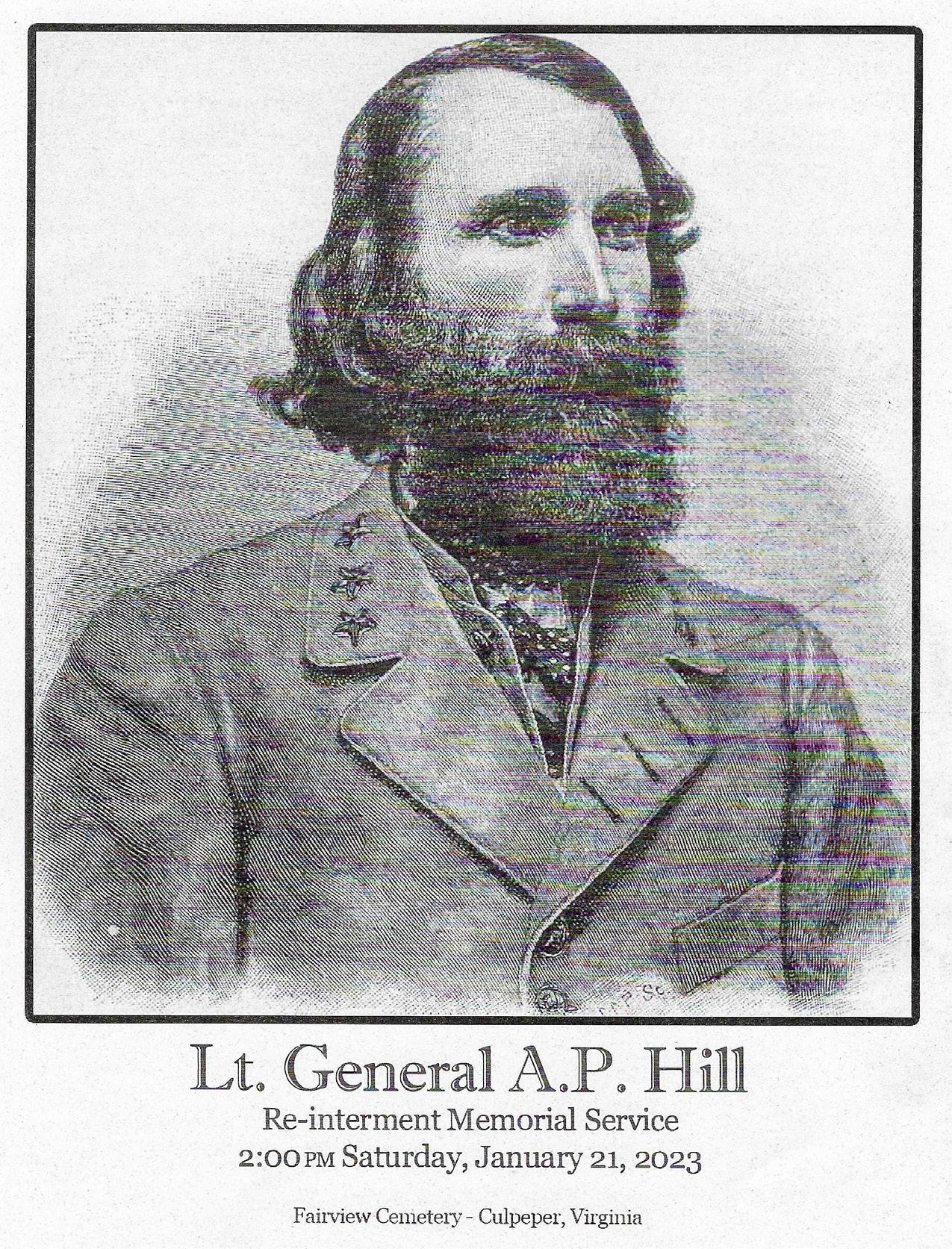
Description: On the Hermitage road, three miles north of the City. Unveiled May 30th, 1891. General Hill was the last Confederate General killed in battle, being mortally wounded in front of Petersburg, Va., April 2, 1865. In commemoration of his heroic character and signal services to the ‘Lost Cause,’ this pedestal and portraitstatue was erected by his admirers and comrades-inarms.

As monuments began to appear throughout Richmond and the rest of the South during the next several decades, Hill’s former soldiers wanted to raise one for their general. The Pegram Battalion Association led the fundraising efforts. Unable to raise enough money through traditional efforts, the group appealed to prominent tobacconist and Confederate veteran Lewis Ginter, who had served under Hill during the war. Eventually they decided to erect the monument near Ginter’s home outside Richmond and

Vol. 49, No. 3 40 Pages, March 2023 $4.00 America’s Monthly Newspaper For Civil War Enthusiasts 16 – American Battlefield Trust 34 – Book Reviews 14 – Central Virginia Battlefield Trust 20 – Civil War Center for Photography 28 – Critic’s Corner 30 – Emerging Civil War 39 – Events 26 – The Graphic War 23 – The Source 24 – This And That 12 – The Unfinished Fight 18 – Through the Lens H Hill . . . . . . . . . . . . see page 4
Portrait of Hill by William Ludwell Sheppard, 1898.
A.P. Hill program.
Civil War News
Published by Historical Publications LLC
520 Folly Road, Suite 25-379, Charleston, SC 29412 800-777-1862 • Facebook.com/CivilWarNews mail@civilwarnews.com • civilwarnews.com
Advertising: 800-777-1862 • ads@civilwarnews.com
Jack W. Melton Jr.C. Peter & Kathryn Jorgensen PublisherFounding Publishers
Editor: Lawrence E. Babits, Ph.D.
Advertising, Marketing & Assistant Editor: Peggy Melton
Columnists: Craig Barry, Salvatore Cilella, Stephen Davis, Stephanie Hagiwara, Gould Hagler, Chris Mackowski, Tim Prince, John Sexton, and Michael K. Shaffer
Contributor & Photography Staff: Greg Biggs, Curt Fields, Michael Kent, Shannon Pritchard, Leon Reed, Bob Ruegsegger, Carl Sell Jr., Gregory L. Wade, Joan Wenner, J.D.
Civil War News (ISSN: 1053-1181) Copyright © 2023 by Historical Publications LLC is published 12 times per year by Historical Publications LLC, 520 Folly Road, Suite 25 PMB 379, Charleston, SC 29412. Monthly. Business and Editorial Offices: 520 Folly Road, Suite 25 PMB 379, Charleston, SC 29412, Accounting and Circulation
Offices: Historical Publications LLC, 520 Folly Road, Suite 25 PMB 379, Charleston, SC 29412. Call 800-777-1862 to subscribe.
Periodicals postage paid at U.S.P.S. 131 W. High St., Jefferson City, MO 65101.
POSTMASTER: Send address changes to: Historical Publications LLC 520 Folly Road Suite 25 PMB 379 Charleston, SC 29412
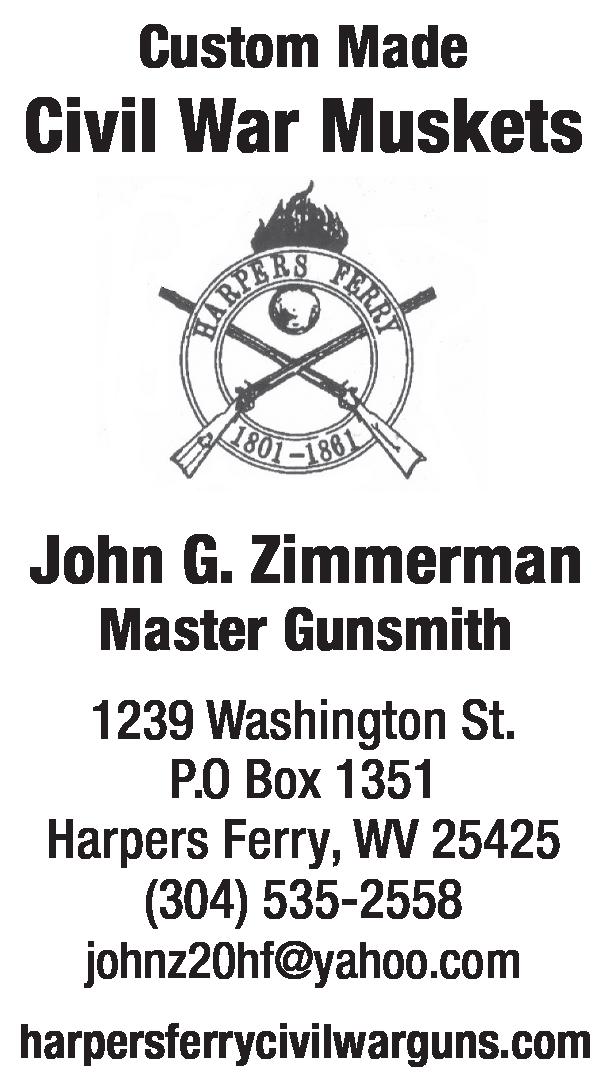
Display advertising rates and media kit on request. The Civil War News is for your reading enjoyment. The views and opinions expressed herein are those of its authors, readers and advertisers and they do not necessarily reflect the official policy or position of Historical Publications, LLC, its owners and/or employees.
Please send your book(s) for review to:
Civil War News
520 Folly Road, Suite 25 PMB 379 Charleston, SC 29412
Email cover image to bookreviews@civilwarnews.com. Civil War News cannot assure that unsolicited books will be assigned for review. Email bookreviews@civilwarnews.com for eligibility before mailing.
ADVERTISING INFO:
Email us at ads@civilwarnews.com Call 800-777-1862
MOVING?
Contact us to change your address so you don’t miss a single issue. mail@civilwarnews.com • 800-777-1862
SUBSCRIPTION RATES
U.S. Subscription rates are $41/year, digital only $29.95/year, add digital to paper subscription for only $10/year more. Subscribe securely at CivilWarNews.com
2 CivilWarNews.com March 2023 2 March 2023 CivilWarNews.com
P UBLISHERS :
Digital Issues of CWN are available by subscription alone or with print plus CWN archives at CivilWarNews.com Advertisers In This Issue: Ace Pyro LLC 6 American Battlefield Trust 27 Artilleryman Magazine 31 Bullet & Shell 11 CWMedals.com, Civil War Recreations 11 Civil War Navy Magazine 6 College Hill Arsenal – Tim Prince 21 Day by Day through the Civil War in Georgia - Book 22 Dell’s Leather Works 13 Dixie Gun Works Inc. 23 Georgia’s Confederate Monuments – Book 34 Gettysburg Foundation 7 Gunsight Antiques 6 Harpers Ferry Civil War Guns 2 The Horse Soldier 19 James Country Mercantile 7 Le Juneau Gallery 5 Lincoln Pocket Knife 17 Mercer University Press 29 Mike McCarley – Wanted Fort Fisher Artifacts 19 Military Antique Collector Magazine 10 National Museum of Civil War Medicine 17 N-SSA 5 Richard LaPosta Civil War Books 35 Shiloh Chennault Bed and Breakfast 12 Suppliers to the Confederacy – Book 11 Ulysses S. Grant impersonator – Curt Fields 27 Events: Baltimore Antique Arms Show 7 Chicago Civil War & Military Show, Wheaton, Ill. 2 McCormick Civil War Institute Conference 5 MKShows, Mike Kent 3, 15 Mid-South Military History & Civil War Show 10 Military Antique Show - Virginia 11 Ohio Civil War Show 36 Poulin’s Auctions 40 1,000’s of Civil War Treasures! Plus! Revolutionary War • Spanish-American War Indian Wars • Mountain Men • Bowie Knife Collector Arms • Fur Traders • World Wars I & II Civil War & Military Show 9 - 4 / $10 • Early Buyer’s 8am / $25 • Free Parking April 22 Sept. 23 2023 • SATURDAY 2023 • SATURDAY
WNC


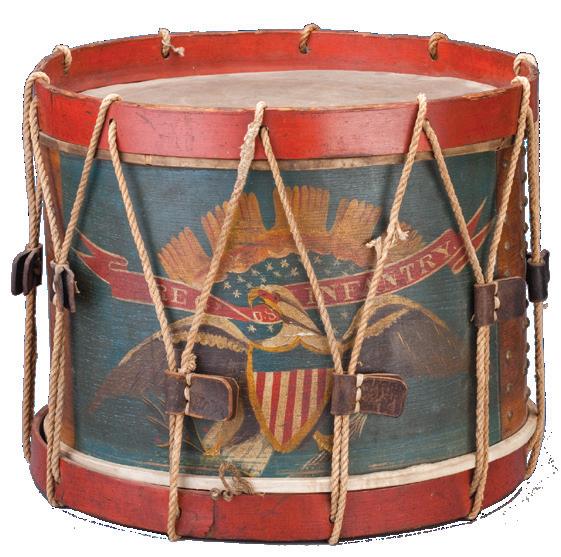
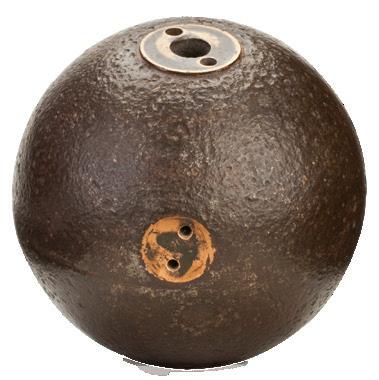






Mike Kent & Associates, LLC • PO Box 685 • Monroe, GA 30655 770-630-7296 • Mike@MKShows.com • www.MKShows.com Military Collectible & Gun & Knife Shows Presents The Finest Williamson County Ag Expo Park 4215 Long Lane Franklin, TN 37064 Dec. 2 & 3, 2023 Middle TN (Franklin) Civil War Show Promoters of Quality Shows for Shooters, Collectors, Civil War and Militaria Enthusiasts
Park Fairgrounds 9850 Highway 78
SC 29456
26,
Gun & Knife Show
Beach Convention Center
Oak Street
SC 29579
18
19, 2023
Beach Gun & Knife Show
Ag Center
Fanning Bridge Road
NC
Gun & Knife Show
Ag Center
Fanning Bridge Road
Exchange
Ladson,
Feb. 25 &
2023 Charleston
Myrtle
2101 North
Myrtle Beach,
Feb.
&
Myrtle
1301
Fletcher,
March 4 & 5, 2023 Asheville
WNC
1301
Fletcher, NC
Gun &
Show
April 29 & 30, 2023 Asheville
Knife
H Hill from page 1 wanted to place the general’s body there too. (Emerging Civil War article).
Then, in 1891, he was reinterred once again and buried at the future site of his monument, the intersection of Laburnum Ave. and Hermitage Rd. in Richmond’s North Side, on land donated by Ginter. On May 30, 1892, a high standing likeness, by artist William Ludwell Sheppard, and tall pedestal, was completed over his grave. Years later, as the culture wars swept over Richmond, the powers that be in the former Confederate capital decided it was time to
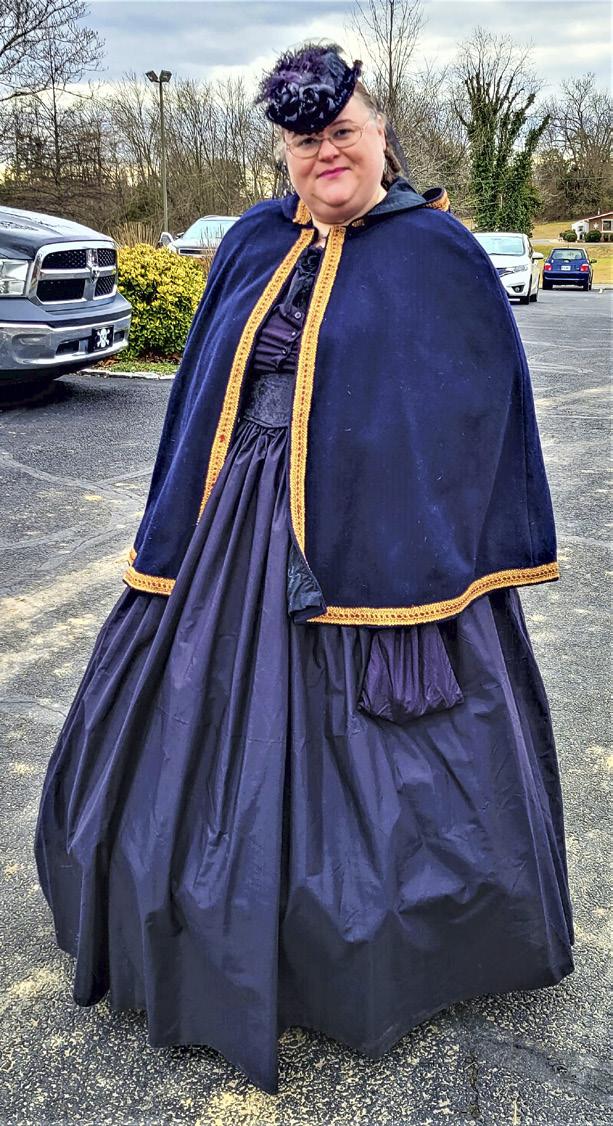
cleanse history (in the hope of getting votes, no doubt) and all of the beautiful Confederate monuments were to be torn down.
Hill’s was the last, but thanks to the efforts by his descendants, especially his great, great nephew John Hill, his remains were saved, put in the care of the Bennett Funeral home, and prepared for a proper funeral with full military honors at Fairview Cemetery on Saturday January 21st, Stonewall Jackson’s birthday.
After organizing ranks and companies, the battalion stood, formed on both sides of the road leading uphill to the grave site. Shortly thereafter occurred a moment that I will never forget A Honor guard.

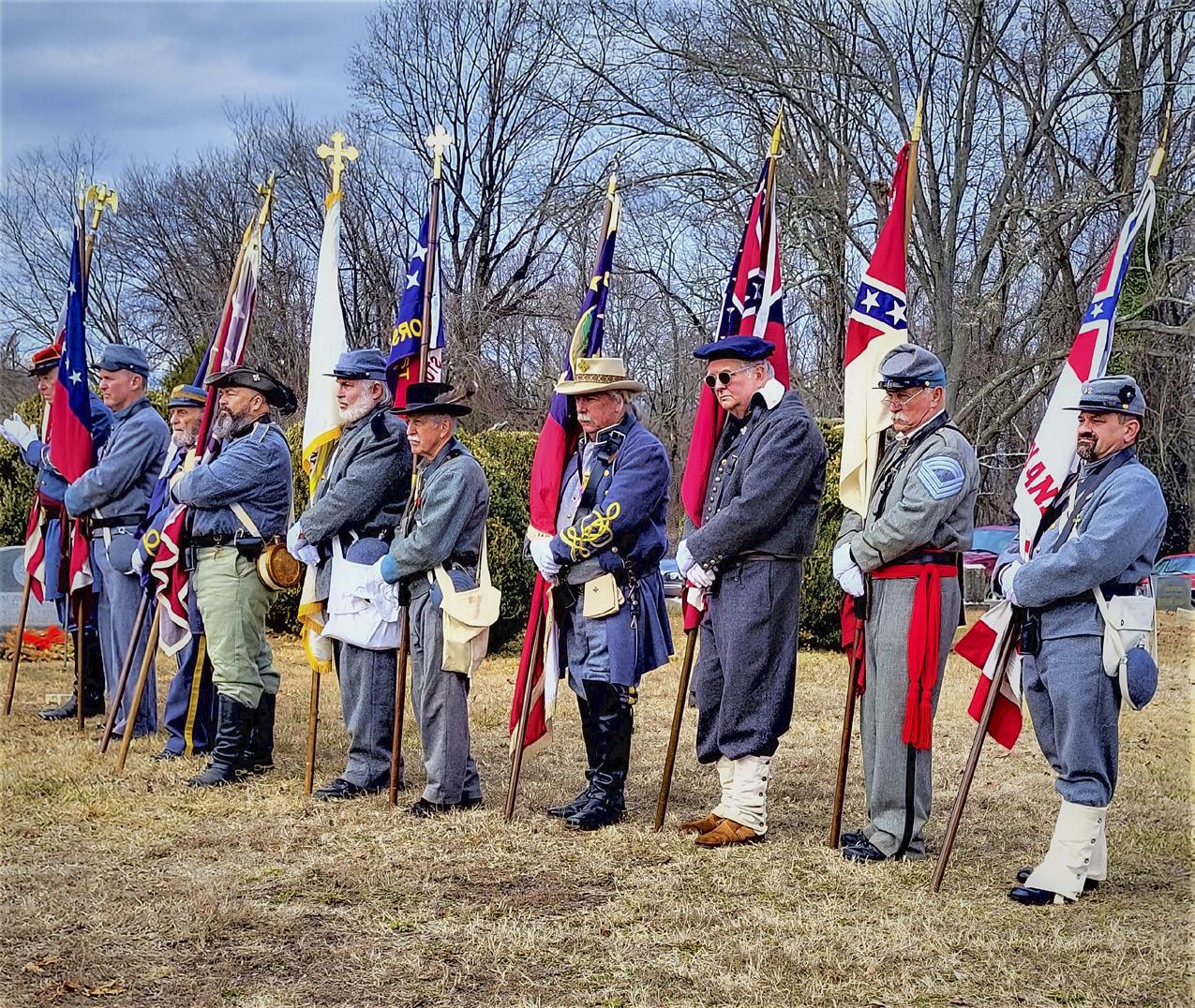
color guard marched up, followed by a mule drawn wagon bearing A.P. Hill’s remains in a beautiful oak casket covered by an old style Virginia Flag, followed by a led riderless horse and more color guard, with a drummer providing a marching beat, all passing between our ranks. We then wheeled into the road and followed the cortege up the hill where the ceremony began. There were prayers, and songs, music in an old time Virginia style, provided by Virginia Dare-Scott and Susan Carraway, “Carry me back to Old Virginny,” and more, and a stirring bag pipe rendition of “Amazing Grace” by the Va. Scotts Guards, under the direction Pipe Major David Hinton. The Welcome, Invocation and later Benediction were movingly provided by Pastor John Collins, Chaplain of the Virginia Division, Sons of Confederate Veterans.
Another very interesting point in the program was the Eulogy, “He is Now at Rest,” dynamically presented by living historian Patrick Falci. “Gen. Hill has been known as Lee’s forgotten general, but not here, not today in Culpepper, not today in Virginia!” The ceremony ended with military honors, musket and cannon salutes by Longstreet’s Corps and Knibbs Battery, and a solitary bugler playing “Taps.” Then came a rousing rendition of Dixie, in which everyone, young and old, reenactor or modern spectator, Hill family members, women in black mourning, even a few law enforcement personnel, all joined in with gusto, and let go a huge cheer to cap off the day.


On command, we formed the battalion and filed out by the left flank, passing Gen. Hill’s casket, to which we paid honors, and marched back to our initial assembly point. Here Col. Russell

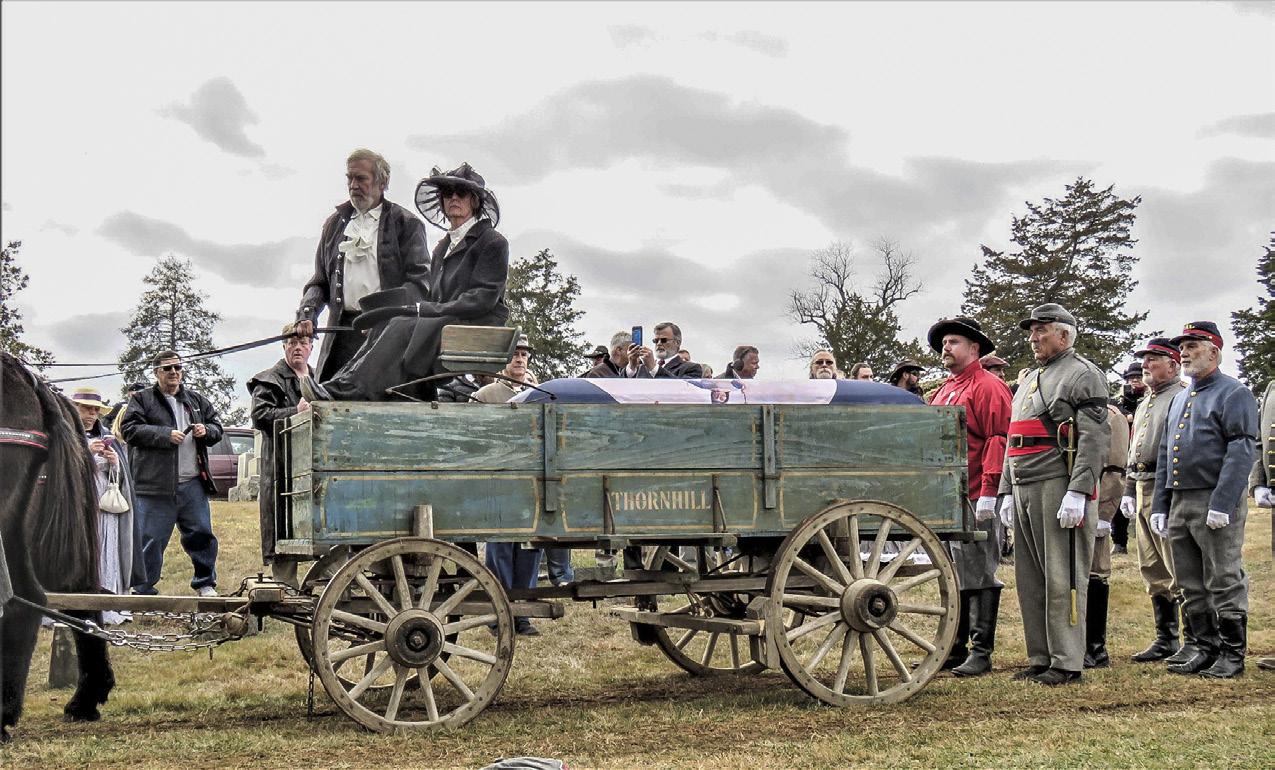
4 CivilWarNews.com March 2023 4 March 2023 CivilWarNews.com
Gen. A.P. Hill’s last ride, Fairview Cemetery, Jan. 21, 2023.
The attendees at the ceremony.
A.P. Hill’s remains transported to the burial site.
A.P. Hill’s casket at the grave site.
Reenactors came to show their last respects.
A.P. Hill’s widow portrayed by a living historian.
gave us parting, inspirational remarks, and then dismissed us all to return home or to find loved ones in the crowd at the cemetery, or to pay last, final respects to General A.P. Hill, which many of us did.

The town of Culpeper, the administrators of Fairview Cemetery, the Bennett Funeral Home, local and state law enforcement, so many dedicated volunteers and devoted family members, several hundred reenactors, all deserve a great deal of credit for the way the cemetery had been put into perfect shape, with parking well organized, and a program that inspired everyone who was there. A memory was created for us all, never to be forgotten.
In their final words, both Lee and Jackson mentioned Hill:
“Order A.P. Hill to prepare for action. Let us cross over the river and rest under the shade of the trees.” General Thomas
J. “Stonewall Jackson, May 10, 1863.

“Tell A.P. Hill he must come up! Strike the Tent!” General Robert E. Lee, October 12, 1870.

To assist in the ongoing legal battle to take possession of the General A.P. Hill grave marker/monument in Richmond, contributions may be made to the:




A.P. Hill Memorial Association

P.O. Box 1063 Mechanicsville, VA 23111
Marc Ramsey is co-owner, along with his wife Jill, of Owens & Ramsey Booksellers. For almost 30 years they have specialized in the buying, selling, and trading of rare, collectible, and new books on military history, especially Civil War titles, as well as artifacts and paper items. They also provide appraisals for estate planning, charitable deductions, or insurance purposes. The Ramseys send out a monthly direct-mail catalog, and can be seen at many Civil War shows and conferences throughout the year. Call Marc at 804-272-8888 or visit their website at www. owensandramsey.com.
5 March 2023 5 March 2023 CivilWarNews.com CivilWarNews.com Want To Advertise In Civil War News? Email us at ads@civilwarnews.com Call 800-777-1862 Deadlines for Advertising or Editorial Submissions is the 20th of each month. Email: ads@civilwarnews.com Buying and Selling The Finest in Americana 11311 S. Indian River Dr. • Fort Pierce, Florida 34982 770-329-4985 • gwjuno@aol.com George Weller Juno “So Tired & Exhausted” In Battle’s Aftermath McCormick Civil War Institute 2023 Spring Conference Saturday April 15, 2023 9:30 a.m. – 4 p.m. To register: su.edu/MCWI Registration fee: $30 includes all sessions & lunch Featuring Presentations by: Jonathan S. Jones (Virginia Military Institute) Brian Matthew Jordan (Sam Houston State University) Jonathan A. Noyalas (Shenandoah University) Melissa A. Winn (HistoryNet) Questions: Contact Jonathan Noyalas jnoyalas01@su.edu or 540-665-4501
Civil War News contributor Marc Ramsey (center) in front of the Honor Guards at the ceremony.
Letters Editor to the
LETTERS TO THE EDITOR

I was interested to read the article in the February 2023 Civil War News about the Battle of Olustee. If any of your readers are interested in a more detailed description of the battle, I suggest reading Mark Boyd: The Federal Campaign of 1864 in East Florida and L. Schmidt: The Civil War in Florida, Vol II, The Battle of Olustee
My interest in the battle lies with two members of the West Point Class of 1862. I spent three days on the battlefield at Olustee while conducting research for my book: For Brotherhood and Duty: The Civil War History of the West Point Class of 1862. A chapter in that book is devoted to the Battle at Olustee.
Lt. Col. James Barrow, 64th Georgia Inf., was killed early in the battle. He had resigned from the West Point Class of 1862 to join the Confederacy during 1861, was wounded during the Peninsula Campaign, and reassigned to the 64th Georgia as its second-in-command, and posted to Quincy, Fla. His unit was sent to Olustee by General Beauregard and it became part of Col. Harrison’s Brigade. A detachment of the 64th under Barrow’s command was sent forward to engage the Union forces and entice them to attack the fortifications near Ocean Pond.
The second member of the class, 1st Lt. Tully McCrea, Captain Langdon’s Battery M, 1st US Artillery, was reassigned to that unit after serving with the
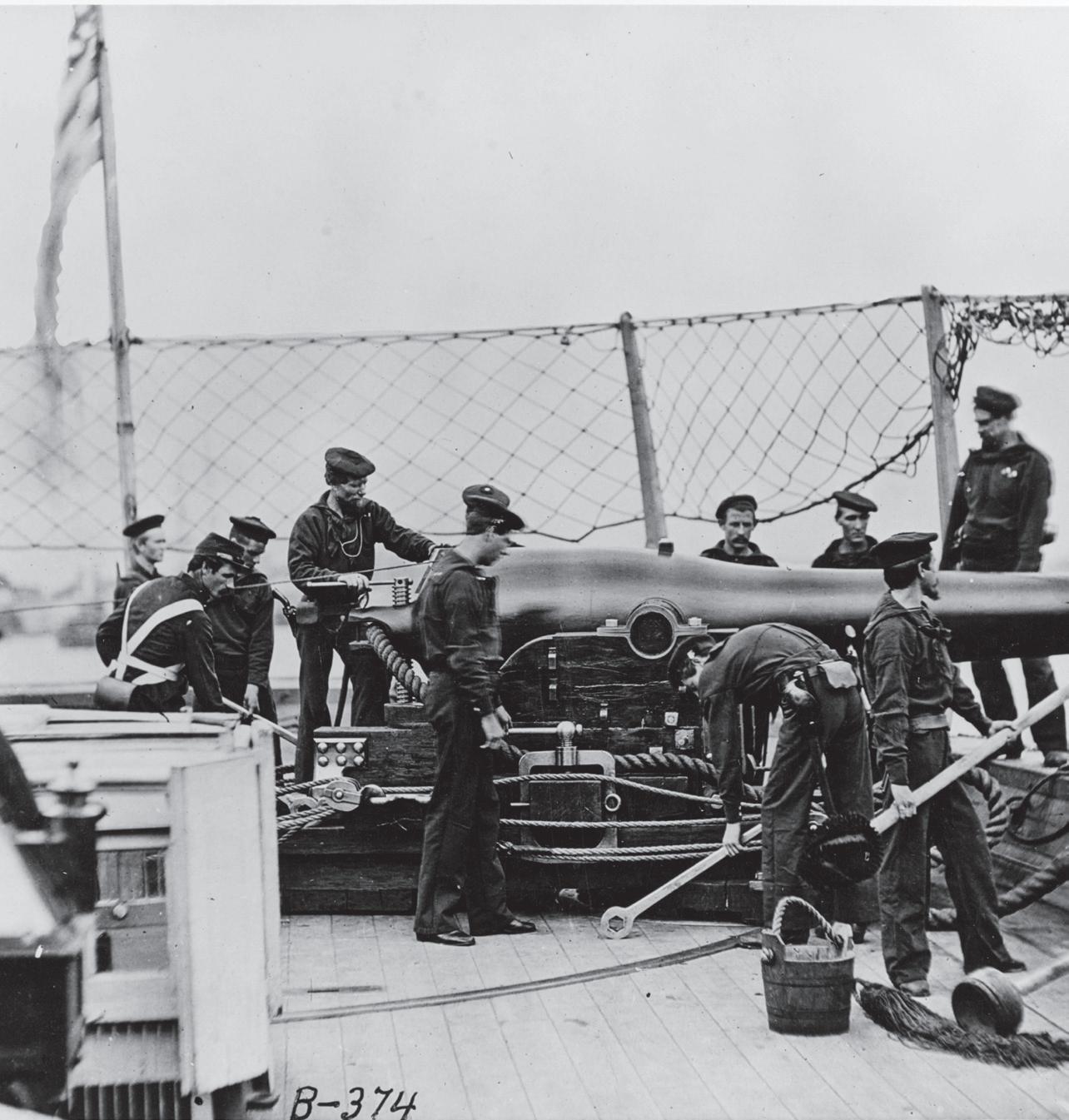
Army of the Potomac from 1862 to late 1863, during which time, he participated in the battles at Antietam, Chancellorsville, and Gettysburg.
Battery M and its six guns was assigned to Col. Barton’s Brigade as the battle unfolded. Readers might find his experience during the battle and its aftermath interesting.
Around 2 p.m., near the first rail road crossing two to three miles east of Olustee, Lt. Col. Barrow’s 64th Georgia engaged the lead elements of Col. Hawley’s Brigade; Barrow was killed during that encounter.
Meanwhile, Capt. Langdon’s Battery M was ordered to move forward as quickly as possible along the forest road. When it reached the site of the unfolding battle, Langdon deployed two sections left of the road to assist artillery already engaged; McCrea took his two gun section to the right. Firing quickly shifted to canister and then double canister as the fighting came closer and closer. McCrea later wrote that the artillery fire was greater than he experienced at Antietam or Gettysburg.
During the ensuing fight, now around 4-5 p.m., McCrea’s section came under heavy fire. He withdrew one gun, but was wounded when a musket ball broke his left leg and lodged in his right. The crew picked him up and moved him to the rear, but were unable to withdraw his second gun and it was overrun. Shortly thereafter, the four guns in Capt. Langdon’s Battery M were also overrun. The loss of the cannon was mentioned in the General Jones article.
What was not mentioned in any detail was the Union retreat that evening. The wounded were put on any vehicle that could move along the road, first to Sanderson and then Baldwin, bouncing over ruts and holes eliciting cries from the wounded. It was wet and cold
during the march as the Union forces retreated. No Confederate forces chased them. At Baldwin, McCrea was placed on a rail car and sent to Jacksonville. At Jacksonville, the more seriously wounded were quickly loaded aboard the hospital ship Cosmopolitan. Tully McCrea was sent to General Hospital Number 7 in Beaufort, S.C., where his wounds were dressed. His left leg was not amputated, but placed in a wooden frame and packed with sandbags. He spent the next four months in bed before being released to return home to Ohio.
In September, he was ordered to West Point to teach mathematics and arrived on crutches. Over the next few months, he scattered cadets and people with his flying crutches on his way to classes in the academic building. Infection in his right leg caused him to be frequently bed ridden until a drastic surgery cleared a patch of cloth from the wound in his right leg.
McCrea remained in the Army for 41 years, last serving during the Spanish American War. He retired as a Brigadier General in 1903, then spent the remainder of his years at West Point where he died in 1918. He is buried in the post cemetery. His letters to his family and cousins reside in the archives at the West Point library.
Bibliography for Battle of Olustee
• Boyd, Mark, The Federal Campaign of 1864 in East Florida – Florida Historical Quarterly, July 1950.
• Broadwater, Robert, The Battle of Olustee, 1864, McFarland and Co., Jefferson, NC, 1958.
• Coles, David, Far From Fields of Glory: Military Operations in Florida during Civil War –Doctoral Dissertation (FSU1996), Florida Heritage Collection.
• Coles, David, Men and Arms: Sketches of the commanders and Units of the Olustee Campaign, Olustee Battlefield
Citizens Support Organization, Renaissance Printing, Gainesville, FL, 1995
• Dickison, J.J., The Olustee Campaign, Confederate Military History, 1899.
• Foote, Shelby., Volume 2, pp. 898-903
• Hillhouse, D. and John Thrush, The Union Roll of HonorUnion Casualties at the Battle of Olustee, Olustee Battlefield Citizens Support Organization, 2004.
• Jones, S., The Battle of Olustee, Battles and Leaders of the Civil War, Vol. 4.
• McMurray, Richard, The Battle of Olustee Civil War Times, Jan 1978
• Morgan, Michael, Surprise at Ocean Pond, America’s Civil War, March 2006
• Schmidt, L., The Civil War in Florida, Vol. II, The Battle of

Olustee, Allentown, PA, 1989.
• Official Records Volumes 27, 35, Series 1
• Olustee Battlefield Historic Site: website http://battleofolustee. org/index.html.
• Taylor, Paul, Discovering the Civil War in Florida, Pineapple Press, Sarasota, FL, 2001.
Brian McEnany Vienna, VA
6 CivilWarNews.com March 2023 6 March 2023 CivilWarNews.com Join the Crew! civilwarnavy.com 1 Year—4 Issues: $37.95 Subscribe Now at civilwarnavy.com Or send a check to: CSA Media, 29 Edenham Court, Brunswick, GA 31523 International subscriptions subject to postage surcharge.
Subscribe online at CivilWarNews.com
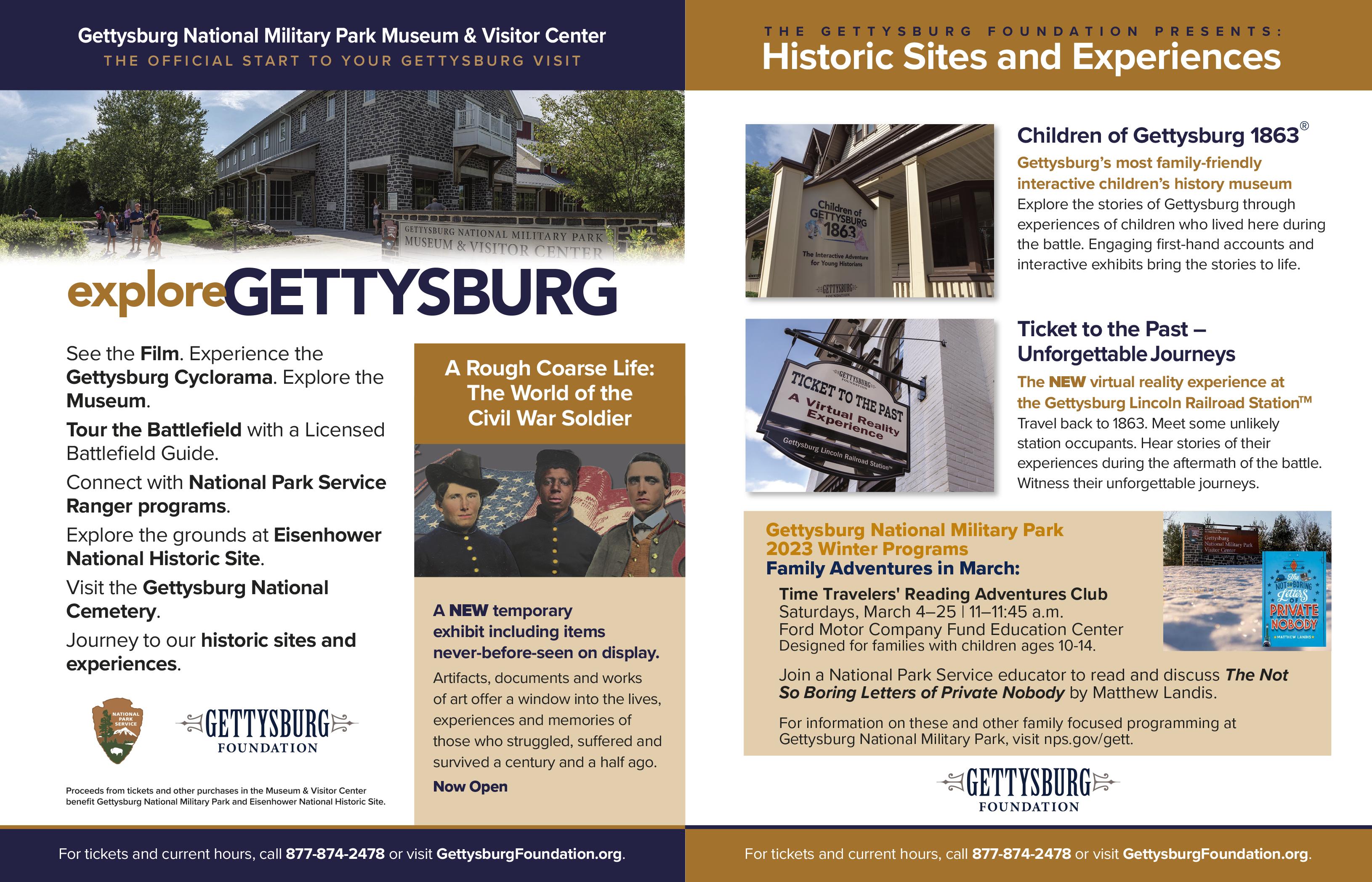


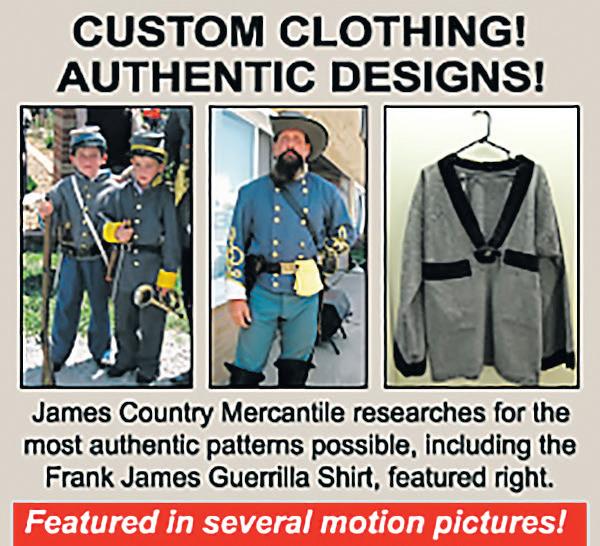
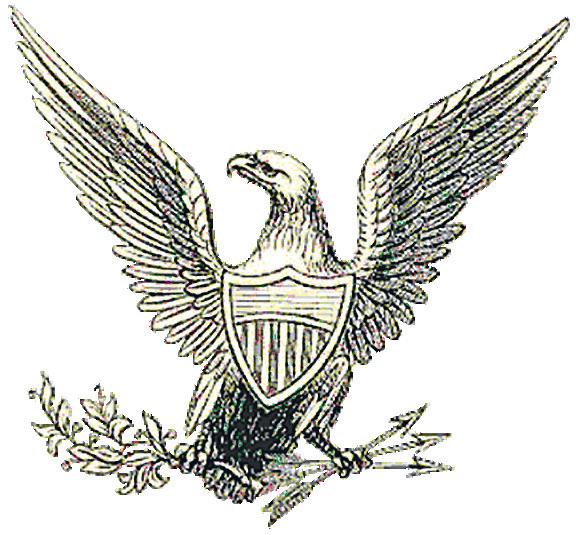
Want to Advertise in Civil War News? Email us at: ads@civilwarnews.com The Maryland Arms Collectors Assoc., Inc. presents The “Original Baltimore” Antique Arms Show Since 1955 Maryland State Fairgrounds Timonium, MD North of Baltimore, York Road, MD. – Rt. 45 1,000 8-Foot Tables March 18-19, 2023 Public Hours: Sat. 9 A.M. to 5 P.M., Sun. 9 A.M. to 3 P.M. Admission: $10.00 – Post-1898 and Modern Handguns are Prohibited –Complete information on web site: www.baltimoreshow.com Or Call 443-497-9253 Known as the “CROWN JEWEL” of Collector’s Shows! 19th CENTURY LIVING HISTORY! James Country MERCANTILE 111 N. Main Liberty, MO 64068 816-781-9473 • FAX 816-781-1470 www.jamescountry.com Ladies – Gentlemen Civilian – Military • Books • Buttons • Fabrics • Music • Patterns • Weapons Mens, Ladies and Children’s • Civilian Clothing • Military Clothing • Military Accessories • Accoutrements Everything needed by the Living Historian! Our Clothing is 100% American Made! The home of HOMESPUN PATTERNS©
One Soldier’s Ups and Downs with the Stonewall Brigade
 by Carl L. Sell Jr.
by Carl L. Sell Jr.
This is the story of one member of the Stonewall Brigade. He survived the Civil War despite fighting in major battles, being wounded and captured at Gettysburg, captured again at Spotsylvania Courthouse, marching, marching, and marching until he decided to desert. This story also picks up after he was reinstated in 1864 as the Confederates await a Union attack as the Overland Campaign began.
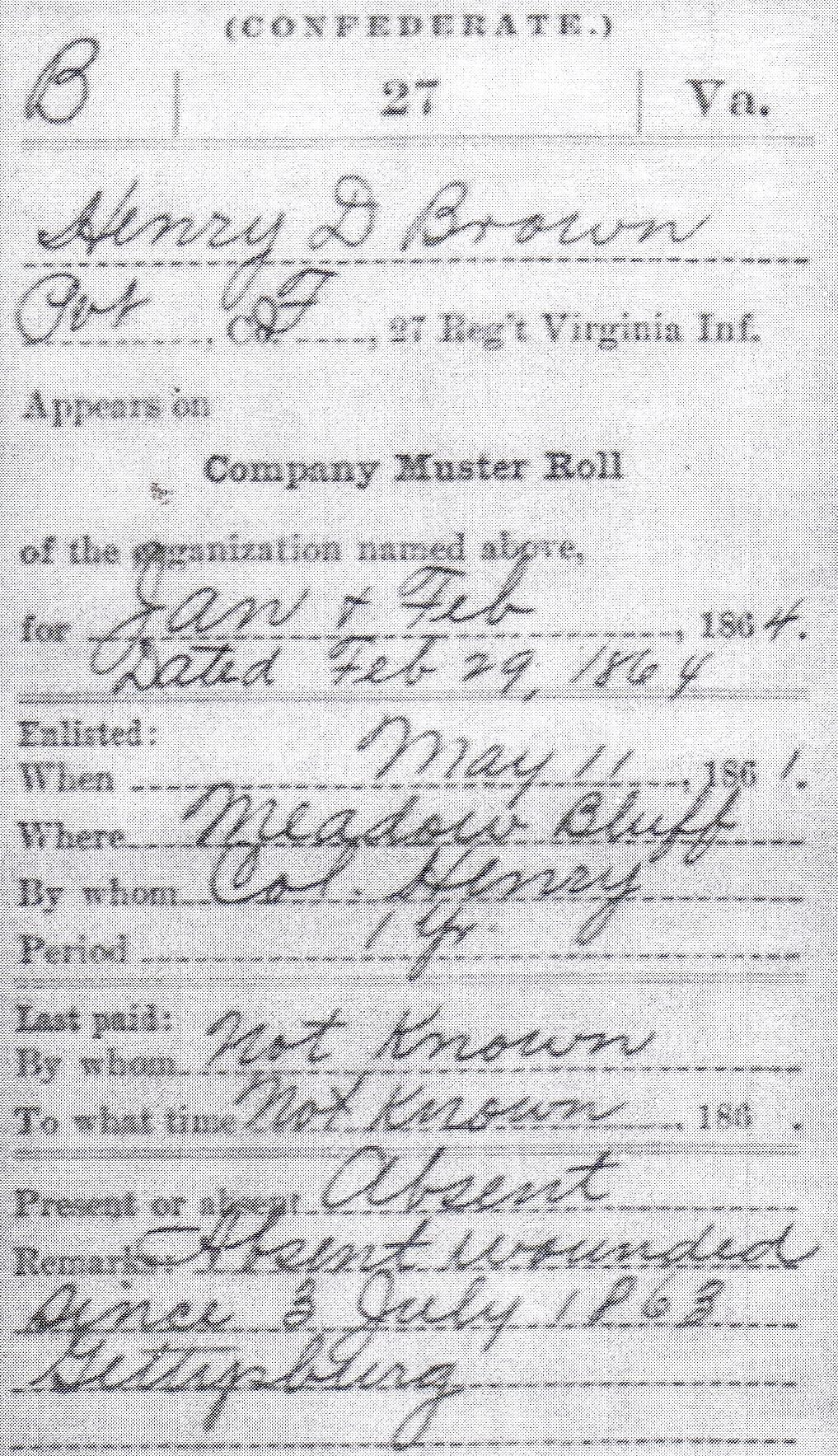
Henry Brown and Albert Bolton, two members of the Greenbriar Rifles, enlisted in the Confederate Army at Meadows Bluff, Virginia (now West Virginia), on May 11, 1861. The Twenty-Seventh became part of the famous Stonewall Brigade, an outgrowth of their gritty performance at Manassas.
The Brigade’s first march was north, “down the valley” through Staunton, New Market, Strasburg, and Winchester to Harpers Ferry. The men rode in wagons for most of the trip, a luxury they would not experience during the rest of the war. In July, Confederate forces in the Shenandoah Valley were placed under General Joseph E. Johnston.
In mid-July, Johnston’s army began moving toward Winchester as Union threats to Harpers Ferry lessened and there were rumors of a battle coming on the other side of the Blue Ridge Mountains, the eastern heights that bordered the Shenandoah Valley.
About July 18, their pace quickened as the soldiers reached Winchester and word spread that Confederate forces under Brigadier General Pierre G.T. Beauregard had been attacked along Bull Run. The troops hurried toward the Blue Ridge, being cheered by citizens along the Winchester-Berryville
Turnpike. They bivouacked on the Blue Ridge’s eastern slope at 2 a.m. On July 19 they piled onto a train at Piedmont on the Manassas Gap Railroad for the 32-mile trip to Manassas Junction, four miles from the future battle site.
The next morning, Jackson’s brigade marched past damage from musketry and cannon fire and freshly dug graves from a battle that occurred two days earlier. Jackson was instructed to guard the Stone Bridge over the Warrenton Turnpike. His brigade wound up on the far left of the Confederate line, facing slightly northwest toward a line of Federal cannon on Henry House Hill.
Two assaults on the Union lines had already failed when Jackson ordered his men to charge and “drive them to Washington.”
The men recalled they faced gun muzzles that looked as big as flour barrels and backed by infantry “as thick as wheat in the field.” The Union cannon fired canister that brought down a third of Jackson’s charging men, but the rest pressed on and put the defenders to flight. No enlisted man among the attackers was killed, but 122 were wounded. They would be known from then on as the “Bloody 27th,” Jackson would earn the nickname of “Stonewall,” the brigade would henceforth be known as the Stonewall Brigade.
The Twenty-Seventh and the Stonewall Brigade moved as far north as Fairfax Courthouse that fall. Jackson, by now a major general, was ordered back to the Valley. In December, the Brigade was part of the Valley District under Jackson’s command, and moved to confront Union activity on the Chesapeake and Ohio Canal. During that time, Jackson also shut down the Baltimore & Ohio Railroad between Martinsburg and Point
of Rocks and diverted scores of locomotives and rolling stock to the Confederate cause by taking them by rail and wagons to the Manassas Gap Railroad western terminus at Strasburg, and later to Staunton, where they joined the Virginia Central Railroad.
In early 1862, the Brigade marched through a blizzard toward Romney in western Virginia, crossed into Maryland, bombarded Hancock, and camped at Romney in heavy snow. The Stonewall Brigade returned to Winchester and then to Strasburg in the face of advancing Federal forces. In early March, Jackson learned a Union army led by Major General Nathaniel Banks had crossed the Potomac and was headed toward Winchester. Jackson at first planned to attack the Federals at Winchester, but a misunderstanding among subordinates scuttled the attack plans and the Brigade instead headed back to Strasburg.
When it was learned in midMarch that Banks was leaving the Valley to reinforce Federal forces that threatened Richmond.
Jackson reversed direction and headed north to intercept the Federals. He met a force larger than his own and suffered the only defeat of his career. At Kernstown, the Confederates held their own until the Stonewall Brigade ran out of ammunition and withdrew. Jackson was incensed and ordered the arrest of Brigadier General Richard Garnett, who had ordered the retreat in the face of overwhelming odds and no ammunition. Garnett was later reinstated by General Lee. Brown lost his rifle, and later his hearing, at Kernstown.
After marching back to Strasburg, Jackson regrouped and began his celebrated Valley Campaign that chased the Federals north and ended any attempt to bolster forces in what would become the Peninsula Campaign. Jackson then marched his weary men to Gordonsville, boarded trains, then marched to help thwart a Federal thrust that had reached the gates of Richmond.
No sooner had McClellan’s
army started leaving the peninsula, Major General John Pope’s Army of Virginia was assigned the task of attacking Richmond from the north. The bombastic Pope had been brought in from the western front to end the war by conquering the Confederate capital. Lee, learning of the threat to his rear, turned the Army of Northern Virginia around and rebuffed Pope at Cedar Mountain and Second Manassas. Jackson and the Stonewall Brigade played major roles in both victories. After Second Manassas and an encounter at Chantilly, Lee decided to attack the Union by crossing the Potomac River into Maryland. Jackson set the stage by crossing the river at Leesburg, then recrossed at Williamsport, and captured Harper’s Ferry and 12,500 Union troops from behind.
Although the bloody battle at Sharpsburg (we’re talking about Confederates here) produced massive casualties on both sides, the Twenty-Seventh suffered only three dead and five wounded. The troops, although barefoot and half-starved, were proud of themselves for holding their own against a well-trained, wellfed and well-equipped enemy. The Stonewall Brigade retreated across the Potomac and camped at Bunker Hill before moving farther back to five miles north of Berryville, and then farther down the Valley Turnpike.
After being criticized for not following up after Antietam, McClellan was fired by President Abraham Lincoln and replaced by Major General Ambrose Burnside. While Burnside began to move the Union Army toward Fredericksburg, Lee followed and actually stole a march on his adversary, which had to wait for pontoon bridges to be to Fredericksburg.
By that time the Stonewall Brigade had moved south, crossed the Blue Ridge at Fisher’s Gap, and was bivouacked in Madison County. They faced a 140-mile march to Guinea Station southeast of Fredericksburg and were angry because Jackson had bypassed a Brigade favorite, Colonel Andrew Jackson Grigsby, and appointed Colonel Elisha Franklin Paxton as its leader. Paxton had been a member of Jackson’s staff. He had been defeated by Grigsby in an election to lead the Twenty-Seventh.
Henry left the Army in November 1862 after 18 months of marching, fighting, and then marching some more. He fought in First and Second Manassas, the
8 CivilWarNews.com March 2023 8 March 2023 CivilWarNews.com
Bill Kamenjar at the Jackson Memorial at Manassas where his great great grandfather charged the Union cannon as a member of what would thereafter be known as the Stonewall Brigade. Photo by Ben Trittipoe. Wounding, capture at Gettysburg.
Valley Campaign, the Peninsula Campaign, and Sharpsburg. The upheaval in leadership and the fact the unit was marching 10 miles per day toward Fredericksburg, no doubt led to Brown’s decision to go home. After six months of hiding from both Yankees and fellow Confederates, Henry decided to return to duty in late April 1863. By the time Brown returned in May, the Confederate Army was understrength from casualties and sickness and
desperate for replacements, especially one who qualified as a sharpshooter. Despite previous harsh punishments for desertion, including facing a firing squad, he was welcomed back and ordered reinstated by Brigadier General James A. Walker, the new leader of the Stonewall Brigade. General Walker was happy to sign his reinstatement, although he did fine Brown six month’s pay for his absence.

Brown arrived at
Chancellorsville on the eve of the loss of Lieutenant General Thomas J. (Stonewall) Jackson, who was mortally wounded by friendly fire on the evening of May 2, 1863. Confederate Cavalry leader Major General James Ewell Brown Stuart took over as head of Jackson’s Second Corps and completed the victory at Chancellorsville so brilliantly planned by General Robert E. Lee and Jackson. A flank march by Jackson’s troops on May 2 caught the Union by surprise and set the stage for the Confederates’ victory in a row.
After the victory at Chancellorsville, the men looted the knapsacks of fleeing Federals. They had little time to enjoy the spoils as General Lee began preparations to invade the North. The Army of Northern Virginia’s reorganization caused by Jackson’s mortal wounding at Chancellorsville resulted in there being three infantry corps. The Stonewall Brigade was placed in the Second Corps under Major General Richard (Baldy) Ewell. as part of a reorganization. They were now part of a division led by Major General Edward (Allegany) Johnson, who endeared himself to his troops by confiscating shoes of captured Yankees and distributing them among his men.
The Twenty-Seventh reached Carlisle, Penn., on Saturday, June 27. They camped for two days before an order came to march to Gettysburg. They arrived at dark on July 1 and stayed in camp the next day. At dawn on July 3, the Twenty-Seventh participated in seven unsuccessful assaults on Culps Hill. Brown was wounded and captured during one of them. He was sent to DeCamp General Hospital on David’s Island, New York. The hospital and prison camp were located on Long Island Sound near New Rochelle. He was exchanged on September 9 but did not rejoin the 27th until the following February.
On March 7, 1864, Private Henry Brown of Company F, Twenty-Seventh Virginia Infantry, resumed an exchange of letters with Annie Bolton, sister of Albert Bolton, one of Brown’s 27th Virginia comrades, after an almost two-year hiatus. Henry and Annie had never met but Annie had recently written Henry inquiring about her brother, Albert.
Annie responded and Henry wrote back on April 24, apologizing for the delay, citing picket duty on the Rapidan River. He said the Yankees were in plain view but were very quiet. He said there was no sign of a fight at present but one could not
be far off. The letter also told of his wounding and capture at Gettysburg, subsequent release, and return to duty.
Annie said she received a letter from Company F saying her brother had gone off to get married. Henry responded that “if such is the case he has kept it a secret from me. I would not be at all surprised if he was only playing you an April trick. He is now with the company and has been since I returned though he speaks of going to Greenbrier to get married as soon as he can get a furlough.”
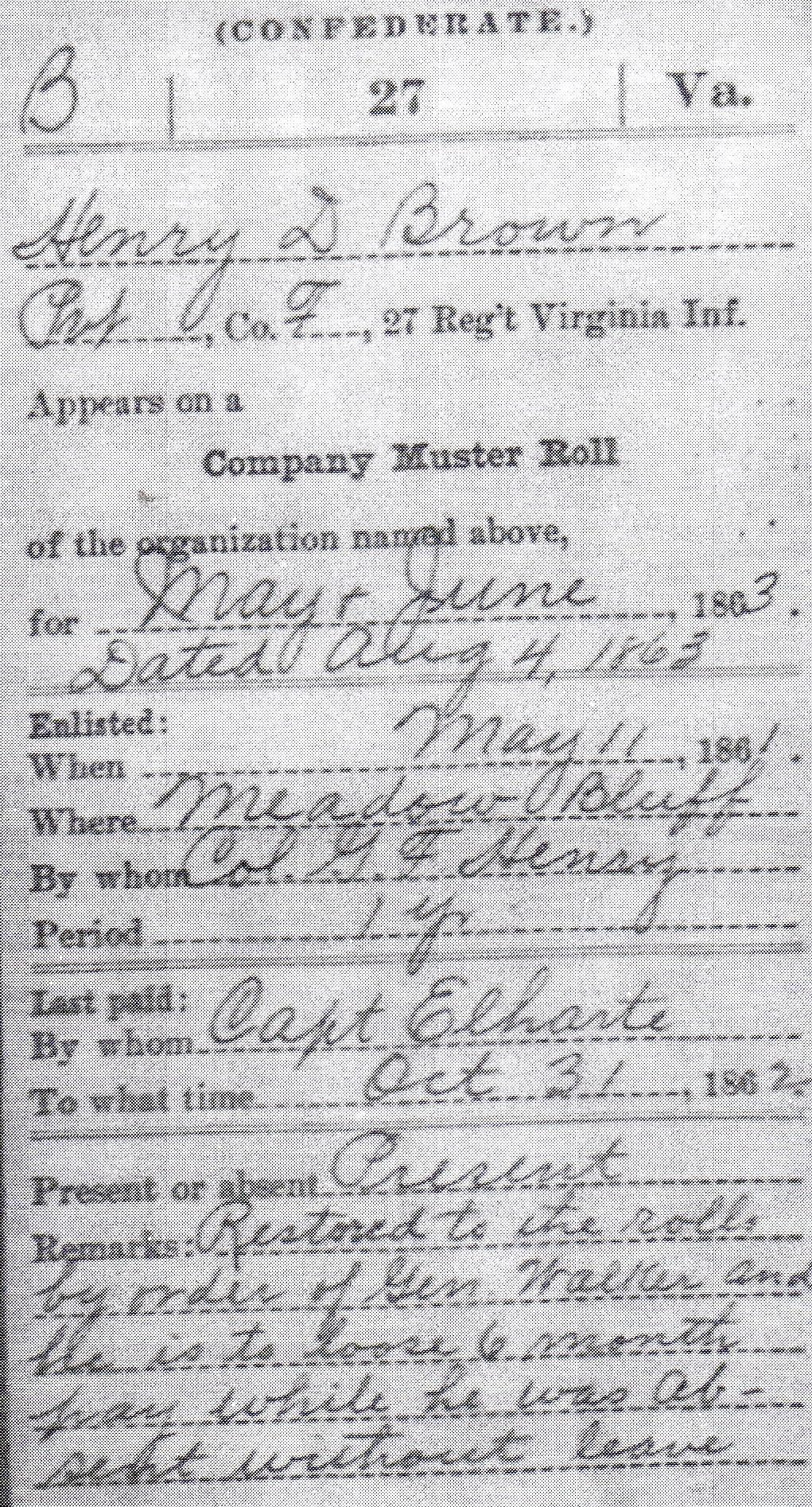
On May 1, 1864, Henry wrote Annie to tell her that both he and her brother were well but were “looking for a fight very soon.” That was an understatement as the Union Army began the Overland Campaign three days later by crossing the Rapidan River and attacking in the Wilderness.
Less than two weeks later, the 27th was positioned on the left of the famous “Muleshoe” at Spotsylvania. On May 12, a Union assault at Spotsylvania Courthouse ended the TwentySeventh’s effectiveness as a fighting force. Brown and almost 900 comrades were captured when their rifles failed to fire because of wet powder. Brown was taken to Belle Plains, the Union supply depot on the Potomac River in Stafford County, and arrived at Fort Delaware on the Delaware River, just south of Philadelphia, on May 21. Brown and many other captives were imprisoned there for the remainder of the war.
Bolton escaped capture that day. He almost survived the siege of Petersburg unhurt but was wounded in the left leg at Hatcher’s Run February 5, 1865. Furloughed on February 28, he went home, settled down, then married Sarah Further in 1868. They apparently had five children and moved to Illinois in the 1870s.
After being captured at Spotsylvania, Brown was held at Fort Delaware until the end of the war. He was released on June 19, 1865, and returned to Virginia.

Henry married Susan Brown from Rappahannock County on February 7, 1867, and they set
up housekeeping on a hilly farm near Sperryville. Part of the farm remains in family ownership. A daughter, Mary Virginia (Mamie), was born on May 20, 1868.
Henry Brown’s application for a pension included a letter from Dr. W.H. Amiss, dated January 27, 1896. The letter cited Brown’s loss of hearing caused by a concussion from a shell burst at Kernstown in 1862 that had caused him to become disabled later in life. Brown was awarded a pension of $15 per year.
Henry died in 1907 and Susan in 1933, age 90. They apparently are buried in unmarked graves on what was once part of their farm in Sperryville. Their daughter Mamie is buried there along with other family members. Mamie married Charles Kuhn, who was born in Germany in 1870. They had a son, George, who married Margaret Conroy, born in Roscommon, Ireland. George died in 1934 in Washington, D.C., while Margaret lived until 1968. Their daughter, Mary Elizabeth Kuhn, married William Blair Kamenjar. William and Mary Elizabeth lived in Rockville, Maryland. He died in 2002 and she passed in 2016. Veteran Both Sides
The exchange program ended after Major General Ulysses S. Grant took command of the Union forces just before the start of the Overland Campaign.
Annie Bolton given name was Ann Mildred and she apparently never married.
Bill Kamenjar’s great-great grandmother had a descendant who was a captain for the American forces in the Revolutionary War. Bill and sisters Christine, Mary Elizabeth, and Ann Margaret learned that their ancestor, Daniel Brown, was a captain in George Washington’s army. The credit for discovery and authentication of the personal information in this story came from Genealogist Karen Conair. The Civil War facts are scrutinized and provided by historians Don Hakenson and Ben Trittipoe. Contact the author at 703-971-4716 with comments or suggestions.
9 March 2023 9 March 2023 CivilWarNews.com CivilWarNews.com
Bill with a replica of a Parrott rifle, one of Union guns captured that day. Photo by Ben Trittipoe.
Reinstatement at Chancellorsville.
Leading the Way! Make history in Goldsboro this spring.
“They led the way,” is the title for the newest Civil War Trails sign in North Carolina which was recently installed in Goldsboro. On March 27th at 10 a.m., on the 158th anniversary of the historic event, join community leaders, descendants, and officials at 201 S. Center Street in
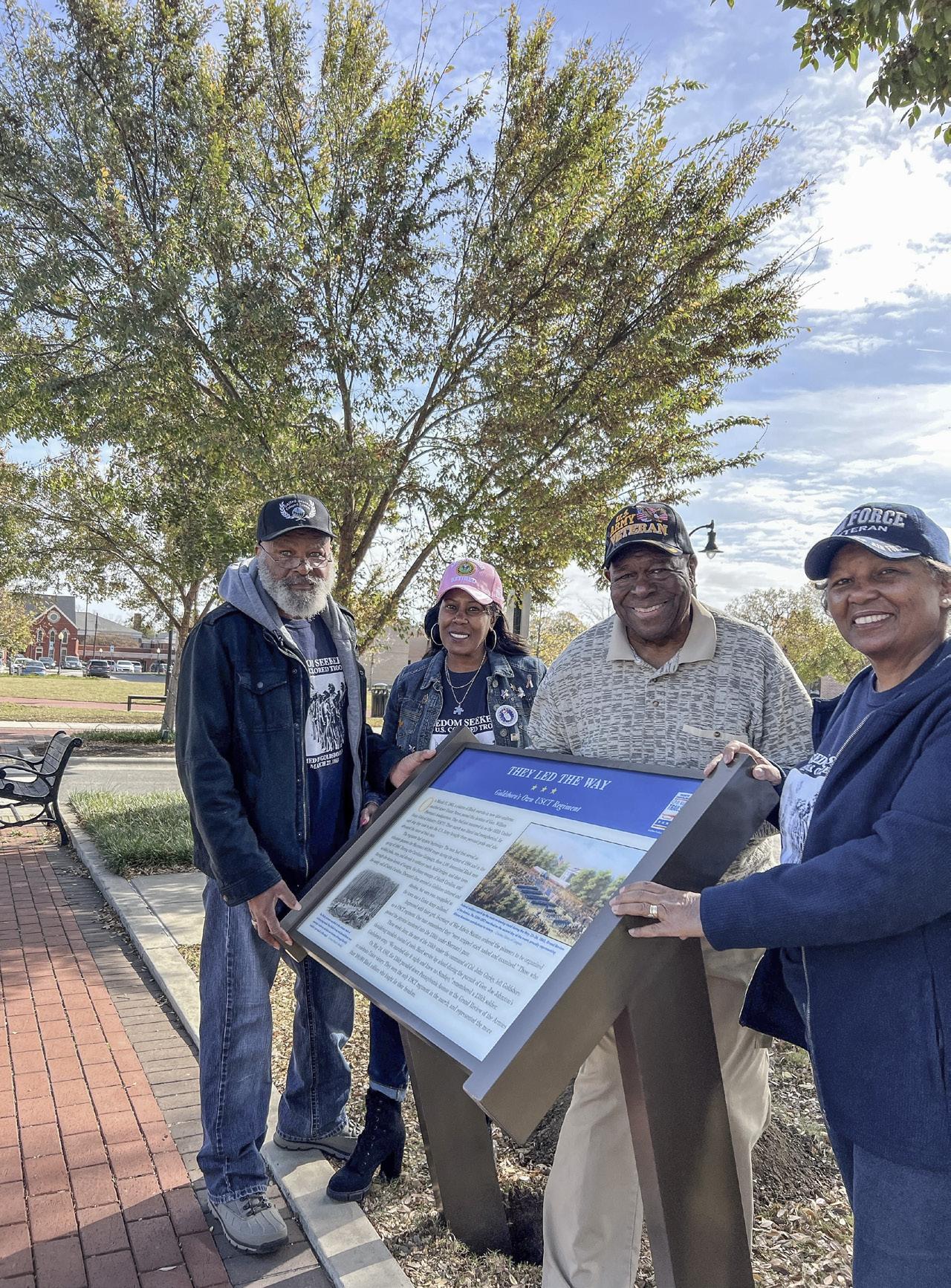
beautiful downtown Goldsboro as they dedicate the new site and remember the service of the men in the 135th United States “Colored” Infantry.
The story of the men in this infantry regiment was largely forgotten until recently. The 135th USCT Research Team, Inc. which was formed in 2016 by Amy and Jay Bauer and is made up of local citizens and regional historians who have spent innumerable hours exploring archives, delving into online sources, and tirelessly analyzing historic documents looking for information about the Black men who would ultimately serve in this infantry regiment.
Lt. Col. (retired) Deborah Jones, who is the secretary of the 135th USCT Research Team, Inc. said,
“It is exciting to see these once enslaved men recognized for their back breaking endeavors to provide Freedom for all!”
The new sign is part of the Civil War Trails program which connects visitors to over 1,400 sites just like this one. Across six states, each Civil War Trails site enables travelers to stand in the footsteps of historic events or people of the past. Despite seeing and hearing hundreds of stories each year their team found the Goldsboro truly inspirational.
“It’s amazing – to stand at one
site which tells encompasses the story of the Civil War,” said Drew Gruber, Executive Directors of Civil War Trails, Inc. “These black men entered town as formerly enslaved people and marched out as Federal employees, soldiers in the United States Army.”
Since each Civil War Trails site is promoted by municipal and state tourism office this ensures that visitors from around the world will be inspired to visit downtown Goldsboro and by the story of the men in the 135th. André Nabors, Partnership Relationship Manager for Visit NC said, “As we continue to get back to our travel mindset, we are ready to share the often untold stories and impact of many sites along the largest open-air museum, that is the Civil War Trails program!”
For more information about the ceremony on March 27th please contact Visit Goldsboro at 919-734-7922. Inspired to help the 135th USCT Research Team? Visit 135usct.org. Check out visitgoldsboronc.com to begin planning your trip and be sure to post your #signselfie @ civilwartrails when you visit this site. For more information about Civil War Trails call 757-378-5462.
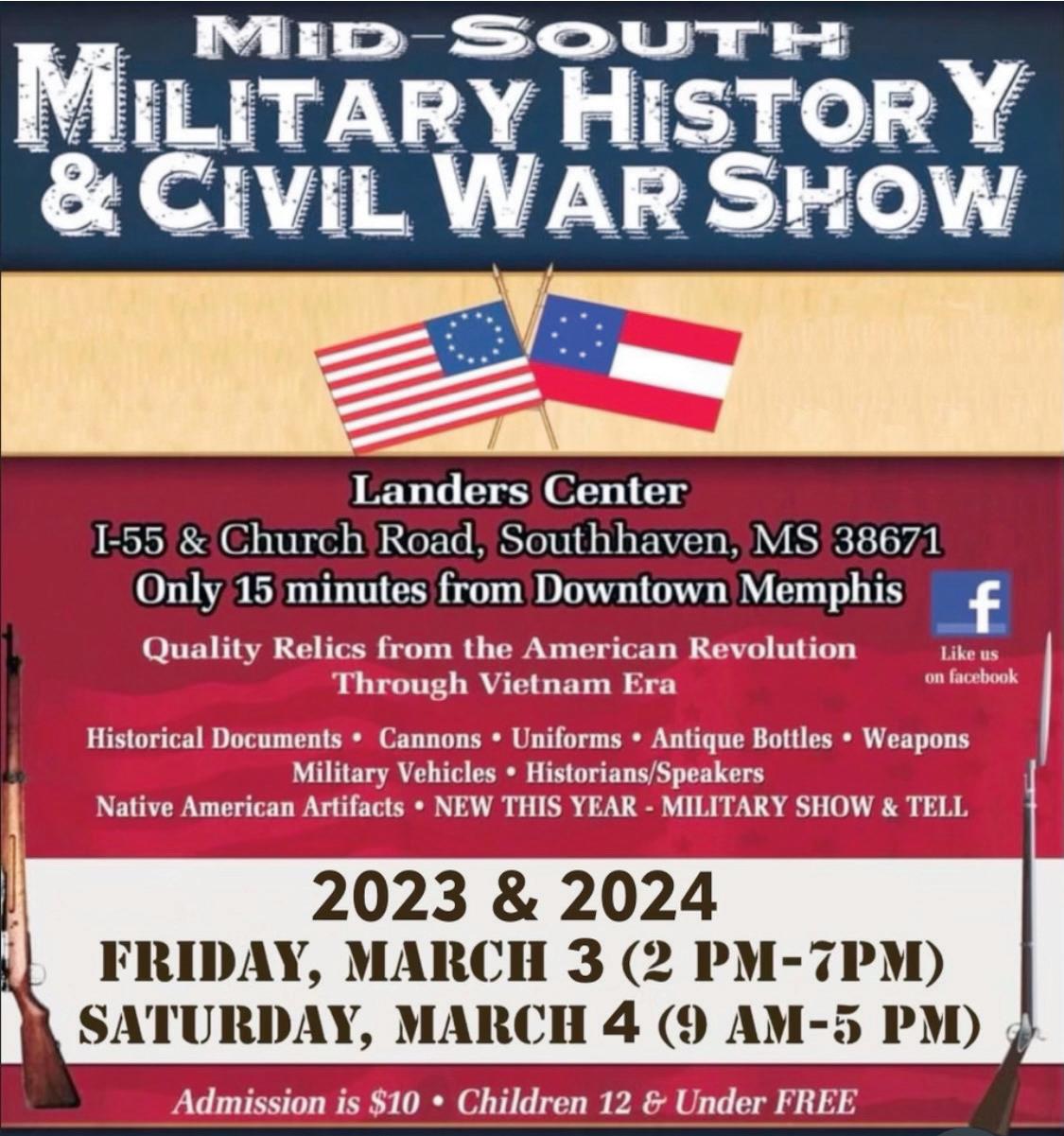

10 CivilWarNews.com March 2023 10 March 2023 CivilWarNews.com
Deborah Jones (left), Leonard Paul Sherrod Jr. (second from left), Cheryl Richards Harmon (second from right), and Donald Harmon (right) from the 135th Research Group, Inc. pose with the Civil War Trails directional sign which helps marks the new site located at 201 S. Center Street, Goldsboro, North Carolina. Courtesy Civil War Trails, Inc.
MILITARY
midsouthmilitaryhistory@gmail.com | facebook.com/MilitaryHistoryCivilWarShow (901) 832-4708 or (662) 279-0538
Donald and Cheryl Harmon (left), Leonard Paul Sherrod Jr. (second from right), and Lt. Col. (retired) Deborah Jones (right) help place the new interpretive sign which overlooks the site where the men of the 135th Regiment, many of whom were formerly enslaved. Presented By:
MID-SOUTH
HISTORY & CIVIL WAR SHOW
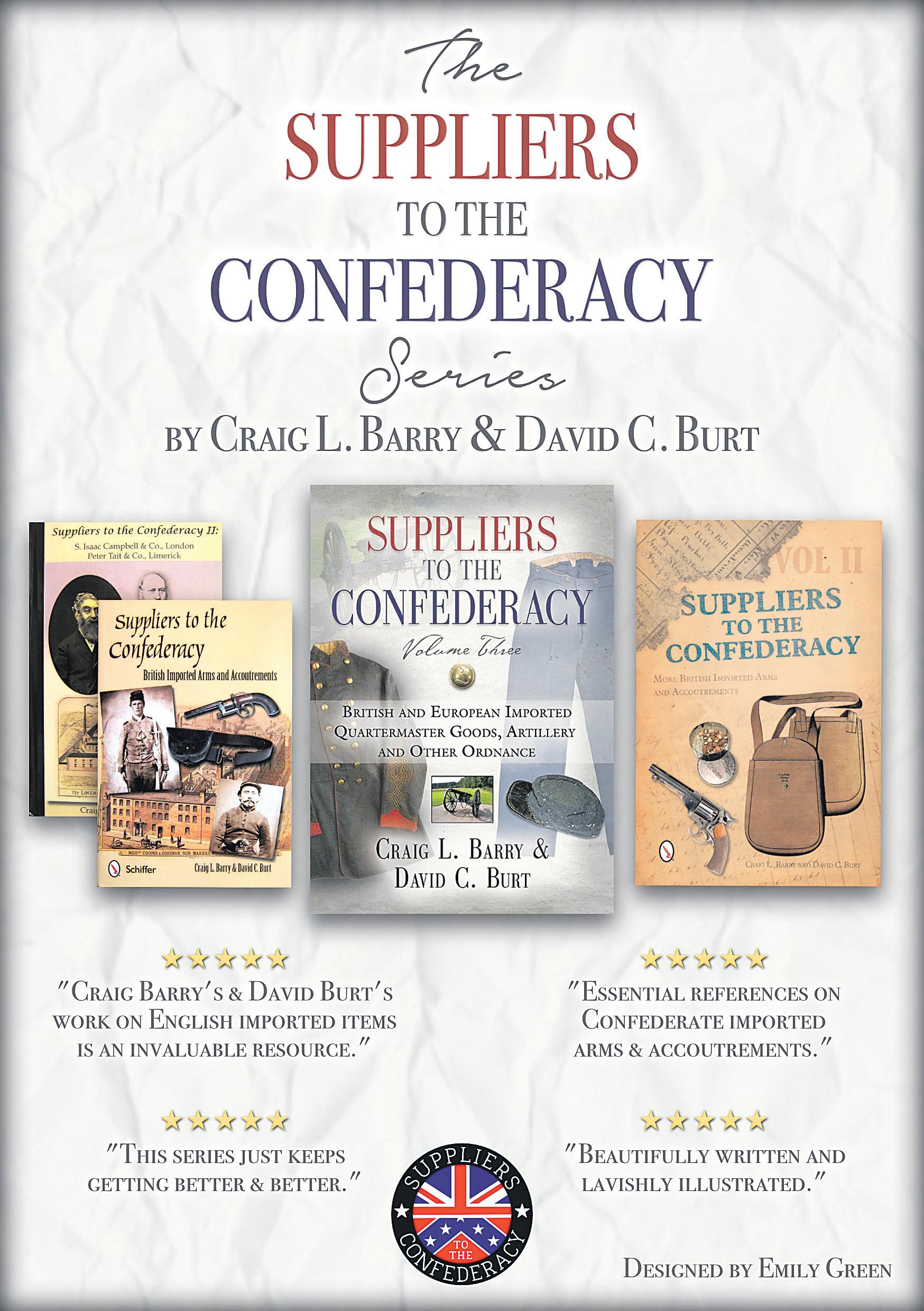







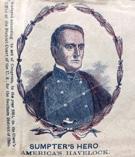






11 March 2023 11 March 2023 CivilWarNews.com CivilWarNews.com Deadlines for Advertising or Editorial Submissions is the 20th of each month. Email to ads@civilwarnews.com Historical Publications, LLC Civil War News • 800-777-1862 520 Folly Road, Suite 25 PMB 379 Charleston, SC 29412 www.CIVILWARNEWS.com UP-TO-DATE COVERAGE • PRESERVATION NEWS • BOOK REVIEWS SHOWS, LIVING HISTORY AND REENACTMENTS • HISTORICAL ARTICLES MONTHLY COLUMNS • CALENDAR OF EVENTS STAY INFORMED! Only $41.00/One Year • $71.00/ Two Years THE MONTHLY CURRENT EVENTS NEWSPAPER -FORCIVIL WAR ENTHUSIASTS SINCE 1974 12 ISSUES PER YEAR PRINT & DIGITAL EDITIONS AVAILABLE CALL OR SUBSCRIBE ONLINE TODAY! 2018 No. $3.50 America’s Monthly Newspaper For War Enthusiasts Never-Before Seen Scrapbook Sheds New Light—Provides Valuable Insights by days Lincoln’s troops, governorsclare supportpresident’s volunteer Lincoln Troops in D.C., mattered peopleconcerned the possibility Virginia southern sympathizers swooping kidnap his never-before scrapbook by thesecretary New Association, provides intocrisis nation’stoward collecphotos, correspondence, souvenirs by York collectionproximately patrioticcovers commented collection particular pivotal New regiments days much acted initial secession that, compromise worked New organization the seriously. January 1861, General Sandford, the divisionhour’s wasn’t this was declined. earlier, 9, Carolina West to Fort Military (NYMA) Major res support. West Fort simmered back burn Lincoln other expedition. approaching Charleston when Charleston firesurrender Sumter out attitude. 2020 America’s Monthly Newspaper issue: Cole the age college-powerfulWashington historytopics,our History and Preservation Community Mourns: The Loss of Legendary Historian Edwin Cole Bearssto of energy placescattlebattlefootsteps He left duringforEd Bearss’ All Time Favorite Civil War Booksautobiography. Army Richmond,daily.Expanded November Book Issue INSIDE EVERY ISSUE www.HistoricalPublicationsLLC.com
Soap
One subject that has been neglected in the study of mid19th Century material culture is soap. Traditionally, as far back as the Colonial-era, soap was produced in America primarily on the farm. It was easily made from by-products that resulted from the two most common activities of agrarian life, clearing of land for fields and slaughtering animals for meat. From the ashes of burnt wood mixed with water, alkali lye was produced. To this tallow or animal fat is added and the resulting mixture boiled to produce soap. There was not much more to it than that, though the process would be refined with time.
The major uses for soap were household applications, either washing clothes or the body. In textile manufacturing, particularly for pre-shrinking and compacting wool cloth, a process called “fulling,” or thickening and scouring woolens. Because Colonial-era America was largely
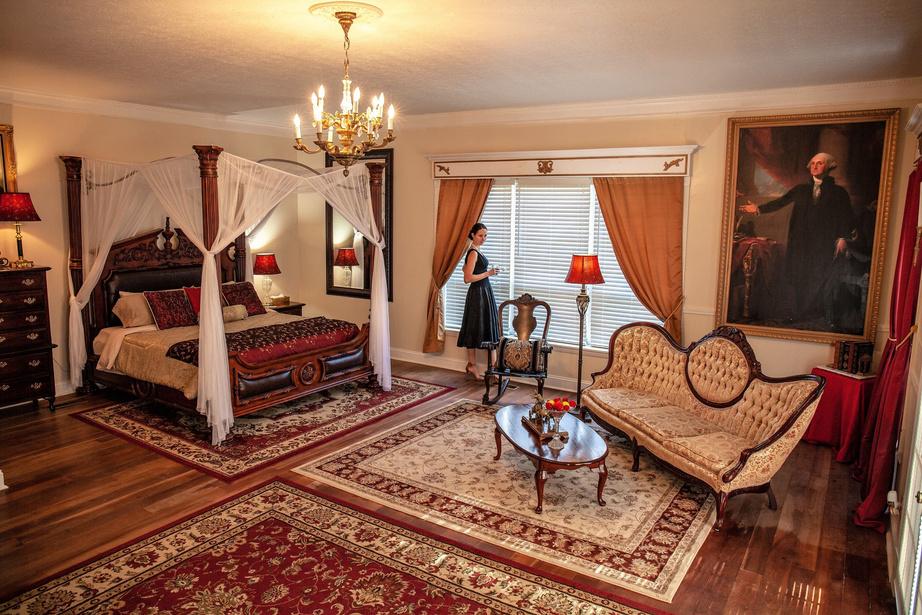
rural and agrarian, soap making remained widely scattered until near the time of the American Revolution. By that time any excess local soap production had turned into a minor commercial export item, but the trade was interrupted by the first war of American Independence in 1776. Soap remained a largely non-commercial item locally produced for home use for another fifty years.
By the late 1830s, due to increasing industrialization in the North, more of the population was now located in cities. The increased demand for soap could no longer be easily met on a local or individual household basis. The first commercial soap makers were founded near centers for the meat packing industry. One of the necessary ingredients of soap being tallow, this encouraged the first commercial soap makers to locate where animals were processed. For example, Cincinnati, Ohio, was one such meatpacking center, and in 1837 it attracted Messrs.’ Proctor and
Gamble. These two men who married sisters began the candle and soap making enterprise that still bears their name today. They were not alone as there were seventeen different soap making companies in Cincinnati alone.

A major change in the production of commercial soap occurred in the 1840s when manufacturers began to replace lye made from ashes with another alkali, sodium carbonate. Sodium carbonate, or “soda ash,” is a form of lye made through a chemical process which results in a purer compound than wood ash. The firms usually made soap in one pound bars, but some soap was produced in slabs sold to grocers, who wire-sliced the product for individual consumers, like a wheel of cheese.

There were few major brands and little advertising was directed at consumers. Soap factories remained mostly regional, centered in or nearby cities with
a meat packing industry before the Civil War. As a result of being located in Ohio, Proctor & Gamble became a major Federal supplier of soap and candles during the Civil War. New York and New England were also commercial hubs for candle and soap manufacturing. The following is an early advertisement for soap that appeared in Harpers Weekly:
“August 6, 1861.

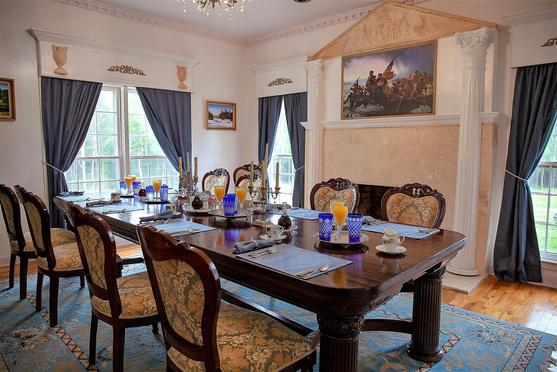
MY DEAR SIRS:
Your Soap is as good as ever. It seems that one box lasts almost a life-time. I am sure it will become a universal thing. Some of the farmers have given up making soft soap since using your Soap. They say it pays to sell their soap-grease and buy your Soap. Some say they save the price of the Soap in wood… Yours, &c.,
E. PERRY
The above soap is packed in boxes of sixty bars, one pound each, with directions for making each bar into “three gallons of handsome Soft Soap.” Price $5 per box, with a selection from a list of books, or a subscription to a newspaper gratis. Send for circular containing list of books and papers.
B. T. BABBITT
As the U .S. Civil War dragged on, soap and tallow candles became increasingly scarce for both soldiers and civilians. Letters from soldiers in the field often asked for these items which were sometimes omitted
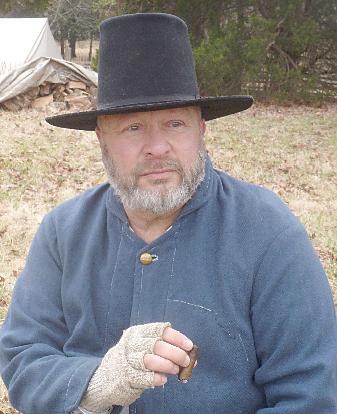
from their rations. Soap was considered a “camp ration” (four pounds per 100 men) and not issued to soldiers on the march. It was noted by J. Billings in Hardtack and Coffee that:
“The soap, candles, etc., were not issued to the soldier when on the march, as he could not carry them; but, singularly enough, as it seems to me, unless the troops went into camp before the end of the month, where a regular depot of supplies might be established from which the other parts of the rations could be issued, they were forfeited, and reverted to the government-- an injustice to the rank and file, who, through no fault of their own, were thus cut off from a part of their allowance at the time when they were giving most liberally of their strength and perhaps of their very hearts blood....”
In the Confederacy, a city of Richmond swelled in size during the war years and the lack of basic necessities made it a very expensive place to live. Candles and soap commercially made in New England before the war, were obviously no longer available. The Union blockade of Confederate ports prevented items like soap from being easily imported from Europe because priority was given to military arms and medicines for imported items run through the blockade. While there were many documented
12 CivilWarNews.com March 2023 12 March 2023 CivilWarNews.com
Servants at quarters of Prince de Joinville in front of Yorktown, May 3, 1862. (Library of Congress)
instances of smuggling personal necessities like soap and other items into the Southern states by Confederate sympathizers in the North, supply never came close to reaching the civilian demand for such essentials.
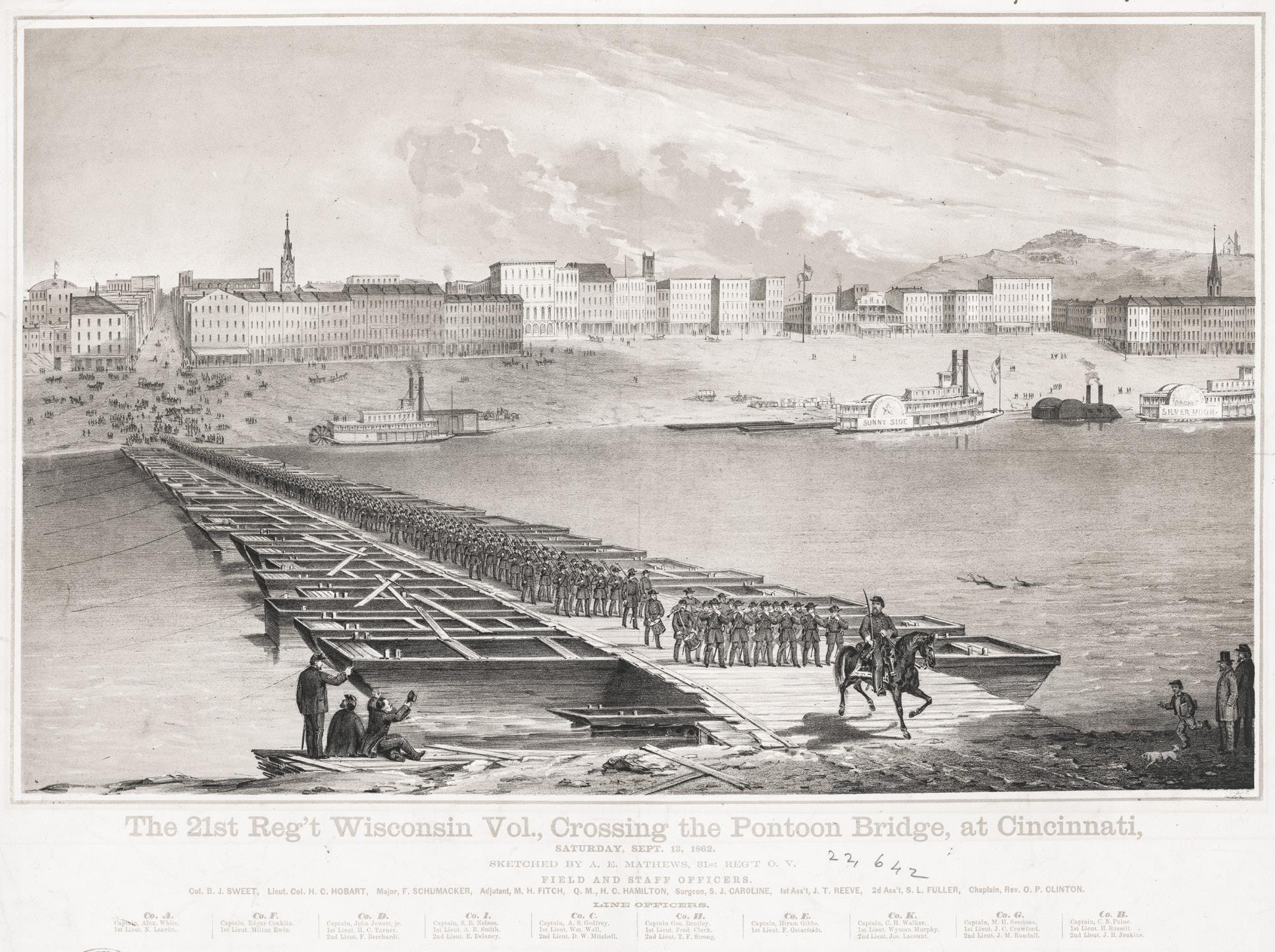
Soldiers received soap as part of their issues while in permanent camp, but it was not part of the marching rations. One officer, Nelson Miles, wrote in a letter to the Army & Navy Journal in 1863:
“Will you please call the attention of Headquarters to the necessity of a general order on the matter of personal cleanliness in the Army? Every correspondent of London journals has sneered at our Army in this respect… Bathing should be encouraged in warm weather. Prof. ______ has determined by experiment that a beleaguered garrison can hold out and subsist longer by half whenever the men bathe daily.”
Even if soldiers felt they could go without soap for extended periods, as so often proves the case, “necessity was the mother of invention,” and Southern civilians were resourceful people. Cottonseed was ground in a mortar to extract the oil and cooked with lye to produce a crude soap. Author Victoria Rumble wrote in Shortages and Substitutions of the War-time South: “As farm animals were taken by the army, both C.S.
and U.S., meat became scarce and with that came a shortage of fats to make soap and candles. Wax for candles was obtained by boiling the wax off myrtle berries and straining it, and homespun wicks several yards long were passed through a shallow pan of pine rosin and beeswax until approximately the size of a pencil then the long wick wrapped around a bottle, corncob or other item of similar size to produce a Confederate candle. Corn shucks and cottonseed were among the items resorted to for replacing fats in soap making.”
Here are some period receipts (recipes) for making several different Civil War-era soaps, from The Confederate Receipt Book published in 1863.
HARD SOAP
Pour twelve quarts of boiling water upon five pounds of unslacked lime. Then dissolve five pounds of washing soda in twelve quarts of boiling water, mix the above together, and let the mixture remain from twelve to twentyfour hours, for the purpose of chemical action. Now pour off all the clear liquid, being careful not to disturb the sediment. Add to the above three and a half pounds of clarified grease, and from three to four ounces of rosin. Boil this compound together for one hour, and pour off to cool. Cut it up in bars for use, and you are in the possession of a superior chemical soap, costing about three and a half cents per pound in ordinary times.

SOFT SOAP
Bore some holes in a lye barrel, put some straw in the bottom, lay some un-slacked lime on it, and
fill your barrel with good hard wood ashes, wet it, and pound it down as you put it in. When full, make a basin in the ashes and pour in water, keep filling it as it sinks in the ashes. In the course of a few hours the lye will begin to run. When you have a sufficient quantity to begin with, put your grease in a large iron pot, pour in the lye, let it boil, &c. Three pounds of clean grease are allowed for two gallons of soap.
COLD PROCESS SOAP

Cut chunks of glycerin into slices and heat on stove top at low heat. Add your favorite natural oils and botanicals such as rose petals, honey and oatmeal, spices such as cinnamon, and lemon or orange peel and pour the liquid mixture in molds. Chill for a half hour or so and then remove from the mold. Greasing the mold with cooking oil before filling will allow the bars of soap to release easily. Bars of soap should cure or rest for a week or so before using.
Craig L. Barry was born in Charlottesville, Va. He holds his BA and Masters degrees from UNC (Charlotte). Craig served The Watchdog Civil War Quarterly as Associate Editor and Editor from 2003–2017. The Watchdog published books and columns on 19th-century material and donated all funds from publications to battlefield preservation. He is the author of several books including The Civil War Musket: A Handbook for Historical Accuracy (2006, 2011), The Unfinished Fight: Essays on Confederate Material Culture Vol. I and II (2012, 2013). He has also published four books in the Suppliers to the Confederacy series on English Arms & Accoutrements, Quartermaster stores and other European imports.
13 March 2023 13 March 2023 CivilWarNews.com CivilWarNews.com HistoricalPublicationsLLC.com
– MAKER –LEATHER WORKS (845) 339-4916 or email sales@dellsleatherworks.com WWW. DELLSLEATHERWORKS.COM
Florence military prison series—”Washing up.” (Library of Congress)
The 21st Reg’t Wisconsin Vol., crossing the pontoon bridge, at Cincinnati, Sat., Sept. 13, 1862. (Library of Congress)
by Paul T. Scott
Today, Stafford County, Va., has a serene waterfront park again known as Aquia Landing after having been named Aqua Po in a 1960 naming contest. The name Aquia Creek comes from the Indian name “Quyough” meaning “the place of the gulls.” Calm breezes wash the beaches as swimmers and sunbathers enjoy the good life. The park is on a peninsula formed where Aquia Creek flows into the Potomac River about thirty-five miles south by water from Washington, DC.
Today’s calm belies the prewar and wartime activities there. Less so now, but in the years after the Civil War up through the 1950’s, one could see the remnants of pilings from wharves that once were partial building foundations, scattered railroad spikes, and carved and flattened Minié balls lost or discarded by soldiers stationed there.
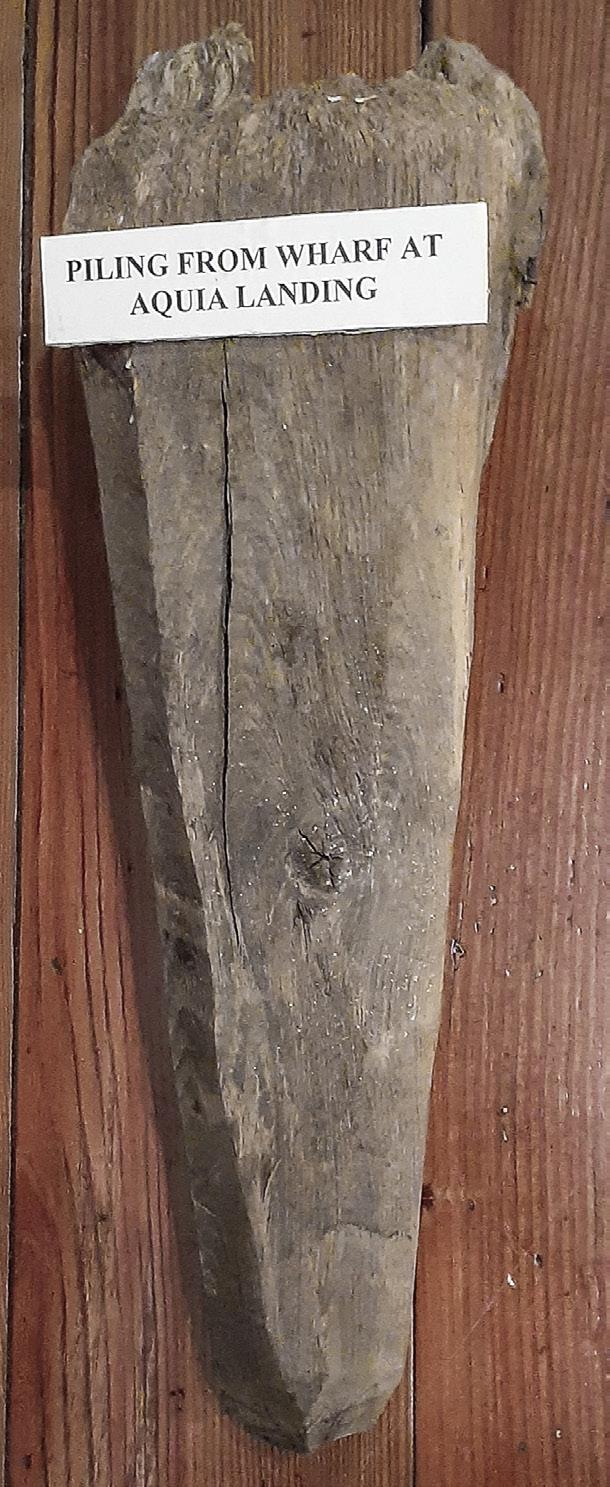
During the first half of the 19th century and before, travel between Richmond and Washington was a laborious and long prospect. It took days, not hours, due to inclement weather, muddy roads, and breakdowns of stagecoaches and commercial wagons. Passenger service and business trade were difficult. Long sought was a shorter way to the nation’s capital. The most efficient modes of travel were by steamboat and railroad.
The Richmond, Fredericksburg & Potomac Railroad Company was chartered as a stock
Aquia Landing and the RF&P Railroad
corporation on February 25, 1834, by special act of the General Assembly of Virginia. Construction of the rail line occurred in stages. The first rails were laid from Richmond to South Anna, then to Fredericksburg, then to Aquia Creek where the line terminated on the Potomac River. Wharves were built at this new Aquia Landing for steamboats. The rail cars were pulled by steam engine locomotives using high pressure steam to a cylinder with a large piston stroke. These steamboats carried passengers and commerce to and from Washington.
The Washington and Fredericksburg Steamboat Company serviced the wharves at Aquia Landing. In 1845, the RF&P purchased one-half of the company’s stock, and later renamed it the Potomac Steamboat Company. In 1854, the RF&P made extensive repairs to the Aquia Landing wharves and erected a covered way from the steamboat landing to the rail cars. By 1861, the RF&P owned 11 locomotives and four steamboats, indicating the success of its commercial and passenger rail services.
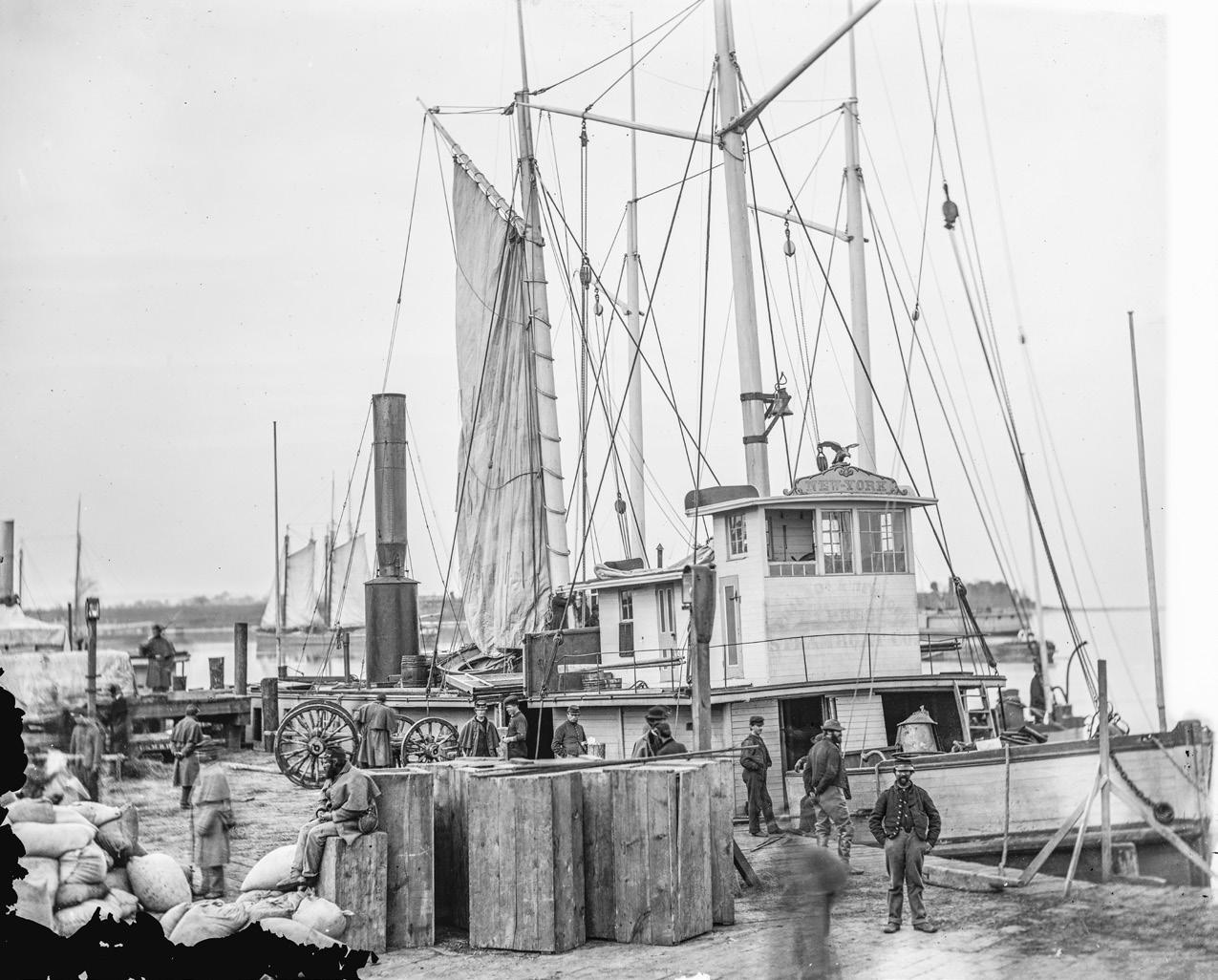
Upon Virginia’s secession from the Union on April 17, 1861, the four steamers of the Potomac Steamboat Company in Washington (the Powhatan, Mt. Vernon, Baltimore, and Maryland) were seized by the United States government. With the loss of its steamboats, the RF&P could no longer service the passenger or commercial trade on the Potomac River. To protect Aquia Landing, Virginia took possession of the RF&P property and dispatched Fredericksburg’s own 30th Virginia Infantry to hold and protect the rails and wharves
from capture by the Federals. The defenders constructed artillery redoubts on the heights above Aquia Creek. On the morning of May 31, 1861, Union gunboats arrived; an attempted landing was repelled by Confederate cannon fire.

During the spring 1862 Peninsula Campaign, General George McClellan moved his army toward Richmond, causing the Confederate forces at Aquia Landing to withdraw down the rails toward Fredericksburg. Fearing the wharves and buildings on Aquia Creek would fall into enemy hands, the Confederates burned them as well as the bridges over Accokeek Creek, Potomac Creek, and the Rappahannock River. Confederate forces then remained in Fredericksburg to protect the rail lines going south to Richmond.
To join the campaign against Richmond from the north, Major General Irvin McDowell would have to rebuild the rail line between Aquia and Fredericksburg. So, in April of 1862, Secretary of War Edwin M. Stanton retained the services of railroad engineer Herman Haupt, to rebuild the wharves, buildings, and tracks. What Haupt found were charred ruins and three miles of bare rail bed pointing south. The road bed was softened by spring rains and the bridges over the creeks and river had been thoroughly destroyed. They also would have to be rebuilt. Haupt was a graduate of West Point, who upon graduation
started a career in railroad construction specializing in bridge design and building. He became the Pennsylvania Railroad’s chief engineer, moving on to more challenging tasks suitable to his engineering skills. He was 45 years old when the Civil War began and had a stellar reputation in the railroad industry. Haupt became the Superintendent of the Construction Corps of the United States Military formed specifically for the Aquia undertaking.
Since no corps existed at the time, Colonel Haupt made do with a small crew of railroaders with three companies of soldiers. They used hand tools and labored under all weather conditions.
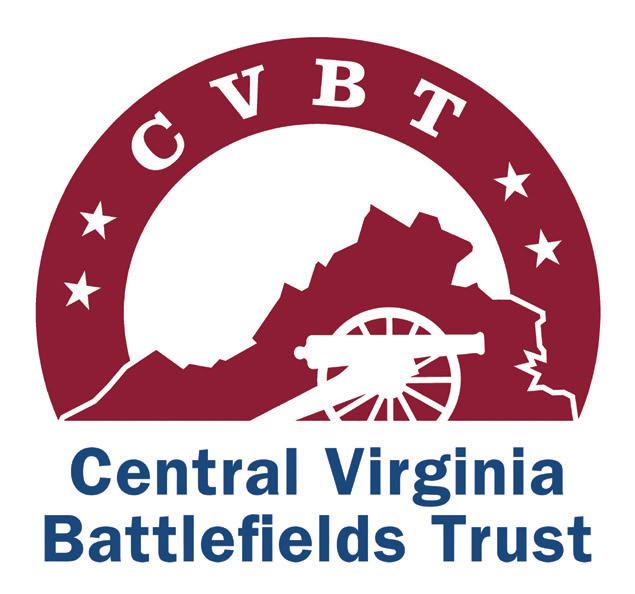
Working day and night, Haupt and his men were able to lay about one mile of track per day.
After rebuilding the docks and track at Aquia, he supervised building bridges over Accokeek Creek and Potomac Creek.
President Lincoln famously described the bridge over Potomac Creek as being built of “beanpoles and cornstalks.”
All this was accomplished by June of 1862. The bridge over the Rappahannock River to Fredericksburg was not rebuilt until after the War. Hence, the amphibious assault by Union forces over the Rappahannock River on December 13, 1862.
In August, however, General Ambrose E. Burnside, Commander of Union forces at the time, became overly concerned that Confederate
forces may retake Aquia Landing and disrupt the supply line from Aquia Creek. Although General Lee never attempted to take the rail lines north of the city, Burnside unwisely ordered the destruction of the wharves and buildings and the lines. Haupt described these losses as nothing short of “vandalism.” Haupt was also furious at the destruction of his personal pride, the doubletracked wharves he had designed for unloading box cars at Aquia Creek. Speculation has it that with so much material and cost, there was much waste in military commerce. Burnside may have felt it was more of settling shortages and accounts. Thus, such waste became hidden to history with no accounting during his command.
With the Battle of Fredericksburg looming, Burnside needed the ability to move large numbers of troops and massive amounts of military supplies. So, on November 18, 1862, now a Brigadier General,

14 CivilWarNews.com March 2023 14 March 2023 CivilWarNews.com
Aquia Creek Landing, Va. Wharf with transport and supplies. (Library of Congress)
Aquia Creek Landing, Va. Distant view of Federal supply depot. (Library of Congress)
Enlarged view of Federal supply depot.
Hand hewned sharp end of a piling from Aquia Landing wharf.
Haupt and his Construction Corps again began repairing the RF&P. Haupt discovered that the damage done by Burnside’s soldiers in August was more easily repaired than that done by the Confederates in April. By this time, the United States Military Railroad Construction Corps was experienced and by hiring civilians, the wharves were soon repaired and track restored.

The high bridge across Potomac Creek was replaced with a truss structure. During this time, thousands of enslaved people took the opportunity to ride the rails and steamboats north to freedom. Due to the heavy military engagements around Fredericksburg and thereafter westward at Chancellorsville, the Wilderness, and Spotsylvania Courthouse, war supplies came south; the wounded were evacuated north. As a result, there was very heavy traffic at the Aquia Creek steamboat wharves. To relieve some of this traffic, a branch line was constructed that ran south about a mile and a half below Aquia Creek with extensive wharves. It was officially named Burnside’s
Wharf, but the railroaders called it “Youbedam Landing.”
After the Civil War, Youbedamn Landing was abandoned; the RF&P Railroad lines were constructed north from Brooke, Va., through Quantico, and later to Washington. Some of the Aquia Landing material was taken and used for constructing the northern rail line. . Building foundations existed for years but gradually disappeared due to weather, recycling, pilfering, and shoreline erosion. The dock planks were removed leaving hundreds of pilings exposed well into the 1960’s when the Army Corps of Engineers cut them off at the creek bottom. The pilings were a severe hazard to navigation for many years until removed. They did provide a great fishing spot where one could move a rowboat into the pilings, tie off to them, and drop a line for abundant stiff back perch.
Local watermen even cut a 20foot section out next to the shore so they could move between the creek and river without going all the way around the pilings. Many a person on shore would wave frantically about the danger
as the watermen and other locals would cruise through that space grinning. Presently, there are no visible pilings. There are only red danger markers at the outer extent of the pilings to warn boaters to stay clear as there may still be some the Corps missed.
Built, destroyed, and rebuilt eight times, the RF&P Railroad’s Aquia Landing stands as a testament to man’s ingenuity and dogged determination.
The primary source for this article was “One Hundred and Fifty Years of History Along the RF&P Railroad,” by Bill Griffin.
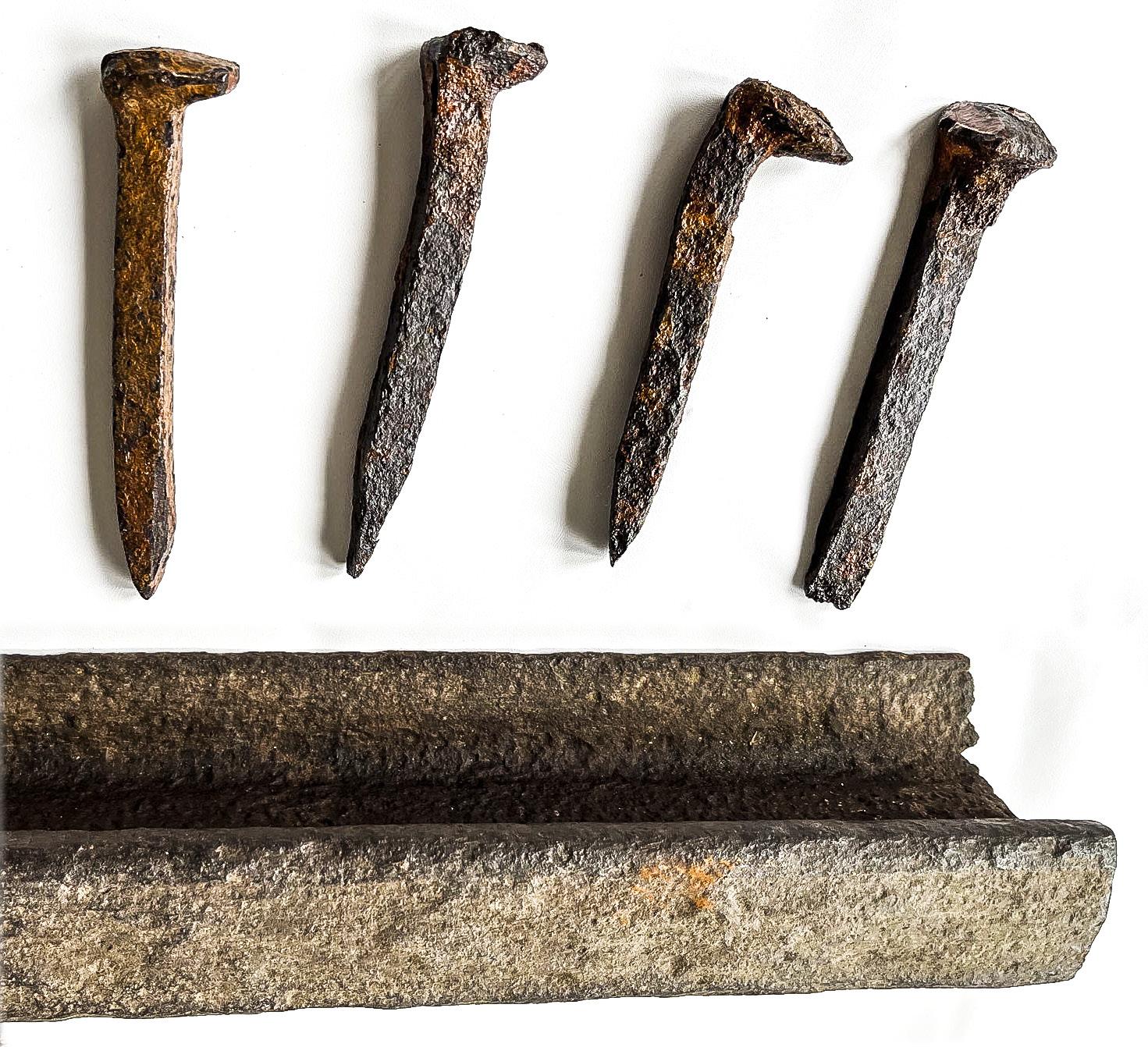

Paul Scott is a member of the Board of Directors of Central Virginia Battlefields Trust, Inc. CVBT is an authorized 501(c)3 organization dedicated to the preservation of Civil War battlefields. The mission of CVBT is to preserve land associated with the Campaigns of Fredericksburg, Chancellorsville, Mine Run, and the Overland Campaign including the Wilderness and Spotsylvania. For more information, see www.cvbt.org.

15 March 2023 15 March 2023 CivilWarNews.com CivilWarNews.com Deadlines for Advertising or Editorial Submissions is the 20th of each month. ads@civilwarnews.com Promoters of Quality Shows for Shooters, Collectors, Civil War and Militaria Enthusiasts Mike Kent and Associates, LLC • PO Box 685 • Monroe, GA 30655 (770) 630-7296 • Mike@MKShows.com • www.MKShows.com February 4 & 5, 2023 Chickamauga (Dalton) Civil War Show December 2 & 3, 2023 Middle TN (Franklin) Civil War Show l
l
Recovered U.S. Minié ball bullets from Aquia Creek Landing area. The two bullets in the center were flattened. The far right is a .69 caliber bullet made into a fishing sinker.
Railroad spikes and “T” rail railroad track from the Aquia Creek Landing supply train lines.
Aquia Creek Landing. Photograph shows a supply landing for the U.S. Army Quartermaster with railroad tracks leading up to the landing and sailing ships in the distance. (Library of Congress)
Trust Expands Campaign to Protect 42 Acres at Chancellorsville
The American Battlefield Trust is battling the clock and hungry developers to see a preservation victory come to life upon 42 acres at the Chancellorsville Battlefield located in one of the fastest growing areas in the nation. Regardless of suburban sprawl, it is the site of Robert E. Lee’s greatest military victory, still studied by military personnel all over the world.
Last May, the organization introduced the opportunity to save this acreage, including the site of Jackson’s flank attack and Dowdall’s Tavern. While donors answered the call for the amount the Trust specified, the estimated $450,000 in government grants were not obtained due to an unprecedented number of battlefield preservation projects unfolding across the nation. There were more applications than available funds, leaving the Trust to call on its loyal donors once more to bring all 42 acres at Chancellorsville across the preservation finish line.
On this hallowed ground, near Dowdall’s Tavern, New Yorkers and Pennsylvanians under Col. Adolphus Buschbeck made a stand along with the Ohio battery of Capt. Hubert Dilger. The brave Federals formed what is now
known as the “Buschbeck Line” and fought with great ferocity before they were overwhelmed by the Confederate onslaught.
Sunset and the confused intermingling of Jackson’s brigades compelled the general to call a temporary halt to reorganize. Even as darkness grew, Jackson was determined to renew the assault, believing he could trap Hooker’s Army of the Potomac and destroy it. But, in the darkening forest, a North Carolina regiment mistook Jackson’s small scouting party as the enemy. A few scattered shots and then a volley burst forth in the blackness, and Jackson reeled in his saddle, struck by three bullets. He died eight days later.
Over the years, the Trust and its partners have saved 1,322 acres of the Chancellorsville Battlefield in the surrounding area.
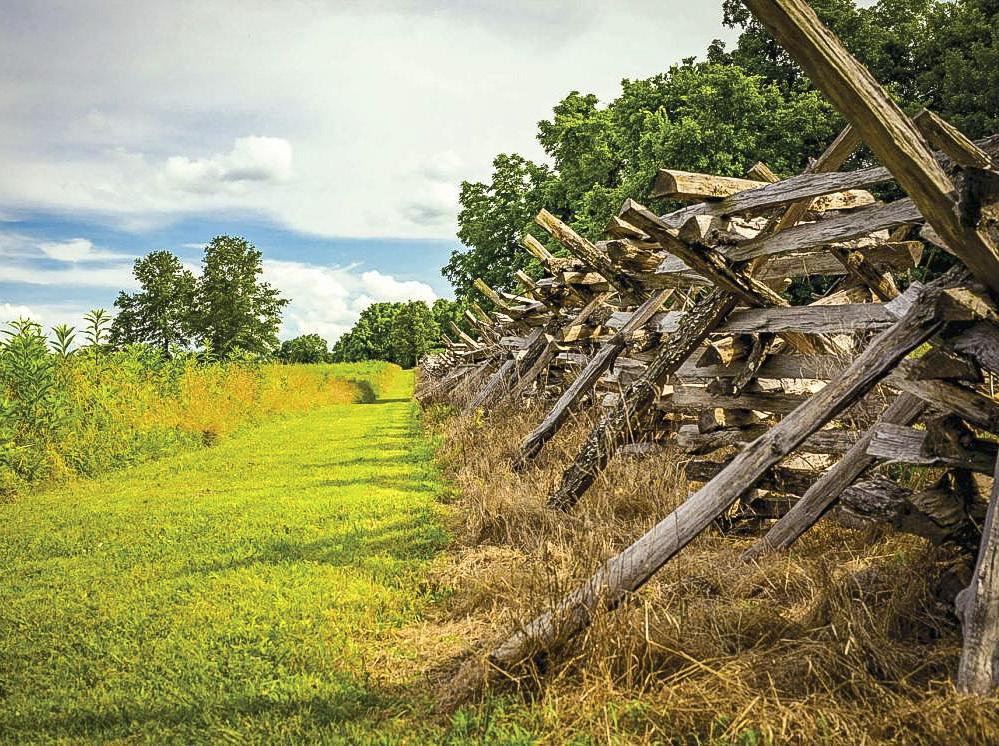

However, this extraordinary tract remained out of preservationists’ grasp until now. To help the Trust raise the final $450,000 and save these 42 hallowed acres, visit www.battlefields. org/42AcresChancellorsville.
Federal Legislation Delivers Multiple Benefits for Preservation
The Trust celebrated passage of the Omnibus Appropriations Bill in late December. This act
included several key provisions that will ensure America’s historic battlefields are preserved for generations to come. The bill was signed into law by President Biden on December 29.
“We appreciate the support from Congress and this administration as we continue to save these hallowed grounds and ensure the stories from the formative years of America’s history are told,” said Trust President David Duncan.
The bill included, for the third year in a row, full funding at $20 million for the American Battlefield Protection Program, providing matching grants to preserve, restore, and interpret endangered battlefield land. The bill also included $2.5 million to the National Park Service to allow for acquiring battlefield lands within NPS boundaries. Additionally, it included language expanding the boundary of Wilson’s Creek National Battlefield in Missouri to include portions of the Newtonia Battlefield.
The Return of Insightful Student Programs
Stunted by the pandemic, the “Great Task” Youth Leadership Program was revived this autumn after a two-year pause. Alongside
its partner, the Gettysburg National Military Park, the “Great Task” jumped back into action at the beginning of the 2022–2023 school year. Proving its successful track record, the program has already hosted four school groups and youth organizations from Arizona, Pennsylvania, and Maryland.
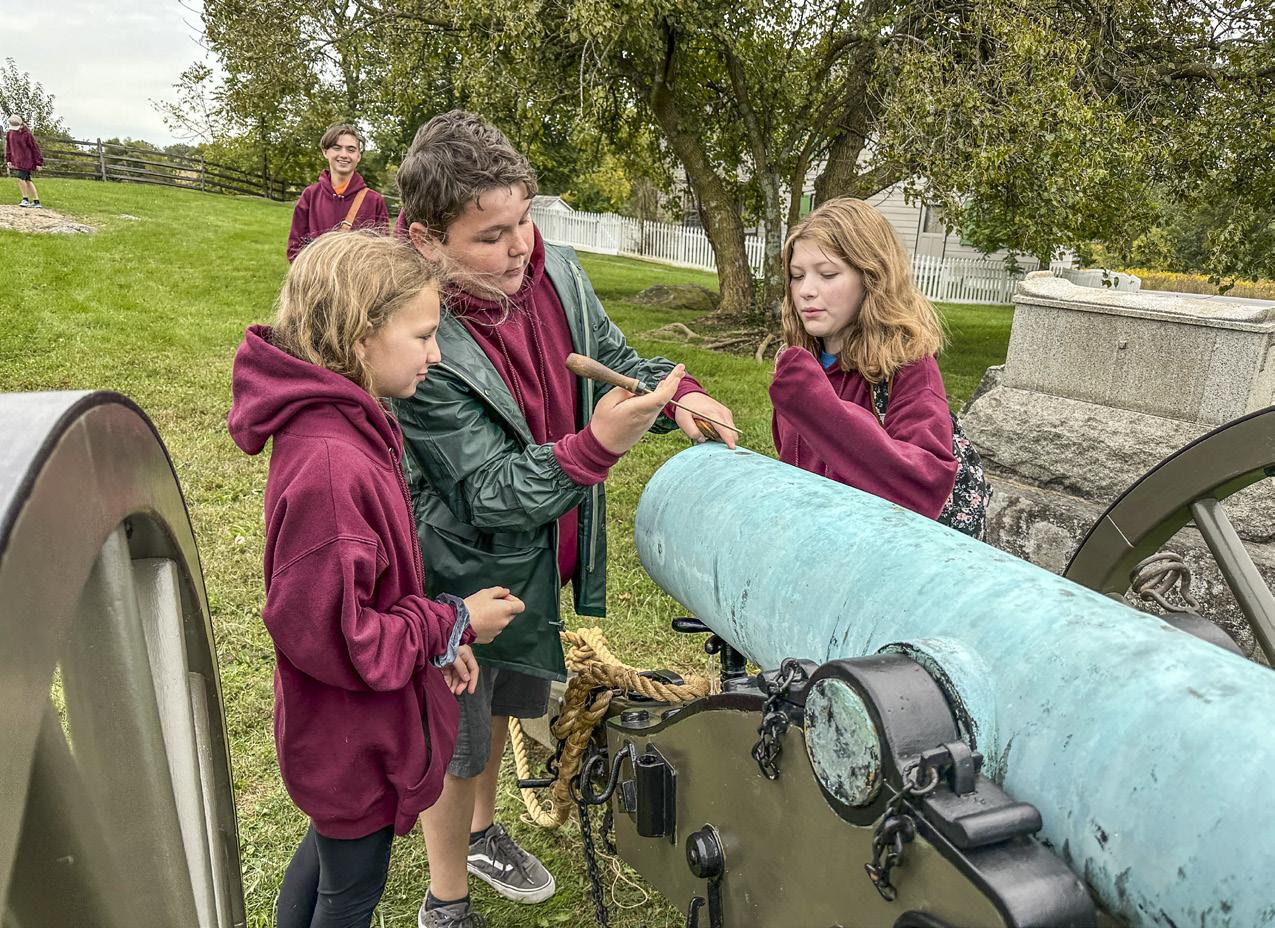
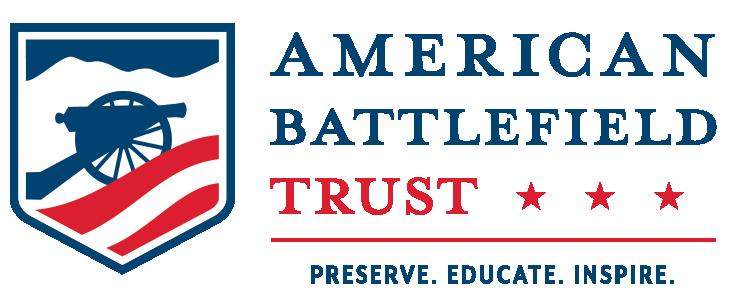
The program, supported by the Bowe Stewart Foundation, is founded on the ideals set forth by President Lincoln’s Gettysburg Address. By using the Gettysburg National Military Park as an outdoor classroom, the “Great Task” offers leadership and character-building experiences and the opportunity to learn about ordinary individuals and the weight of the extraordinary challenges they faced during the battle.
Meanwhile, the Trust’s Field Trip Fund had previously functioned as a bridge that could fill the financial gap needed to deliver students and teachers to battlefields and other historic sites. It has been slow to return to its pre-pandemic glory, but applicants are encouraged to apply.
For more information on the “Great Task” program, visit
www.battlefields.org/great-task. Regarding the Field Trip Fund, check out www.battlefields.org/ fieldtripfund.
Help Protect 108 Acres in the Virginia Piedmont
With an opportunity to save over 104 acres in the Virginia Piedmont, the Trust has launched a campaign that aims to secure 97 acres of hallowed ground at the Brandy Station Battlefield and 7 acres at the Cedar Mountain Battlefield. Taken together, they have a total transaction value of $5,697,826.
Tapping the state funds requested by Gov. Youngkin and appropriated by the Virginia legislature to help save land at Brandy Station, while applying for additional federal and state matching grants, the Trust hopes to cover 92% of the cost. Another boon to the effort: a major donor who is willing to match all gifts made, up to $225,000. This means that if we can raise the final $225,000 with all of the potential matching funds in place, contributions would be multiplied $25-to-$1. The historic value is unarguable.
At Cedar Mountain, a Confederate counterattack drove Union soldiers back, winning the Southerners the 1862 battle and eventually shifting fighting to Northern Virginia and giving Robert E. Lee the strategic initiative.
Meanwhile, Brandy Station was the site of the largest cavalry battle ever fought in North America. Fought in June 1863, the battle saw Confederate Gen. J.E.B. Stuart face off against Gen. Alfred Pleasanton in a battle to claim the strategic position at Fleetwood Hill.
The 97-acre tract at Brandy Station connects two major parts of the battlefield, land that donors
16 CivilWarNews.com March 2023 16 March 2023 CivilWarNews.com
Sunset at the Chancellorsville Battlefield in Spotsylvania County, Va. Photo by Chris Landon.
Wilson’s Creek National Battlefield, located near Republic, Mo.
Photo by Noel Benadom.
Arizona students participate in “Great Task” leadership and character-building activities. Photo by American Battlefield Trust.
Park Day participants repair fences at the Monocacy National Battlefield. Photo
helped preserve from the western edge of Fleetwood Hill extending northward for nearly four miles. It also covers one of the most threatened areas of battlefield land in the mid-Atlantic U.S., as its light industrial zoning makes it a target for developers.
With a nearly $5.7 million price tag, there is simply no way the organization would’ve been able to afford these 108 acres without the governor’s backing, and without the funds appropriated with bipartisan support in the Virginia legislature.

To learn more about this preservation opportunity, visit https://www.battlefields. org/108AcresVirginiaPiedmont.
Gear Up for 2023 Trust Events
Donor Thank You Weekend will take place February 24 -26 in Atlantic Beach, Fla. Open to all Color Bearer levels, this funfilled weekend in the Sunshine State will include tours of sites like the Olustee Battlefield, Fort
Caroline and more. Park Day will take place on April 15 at various locations nationwide. For 27 years, thousands of history lovers, families, Boy and Girl Scouts and more have come together to help keep our nation’s heritage preserved and well maintained at battlefields, museums, cemeteries and historic sites around the country. Whether you’re interested in participating or have a site you’d like to register, visit www.battlefields.org/parkday.
*Note: Sites should register by March 15 if they wish to be listed on the Trust’s website.
The Trust’s annual conference will be held May 18 – 21 in Franklin, Tenn. As a time for all Trust members to gather and embrace their passion for battlefield preservation, the organization looks forward to providing a diverse round-up of unforgettable experiences.
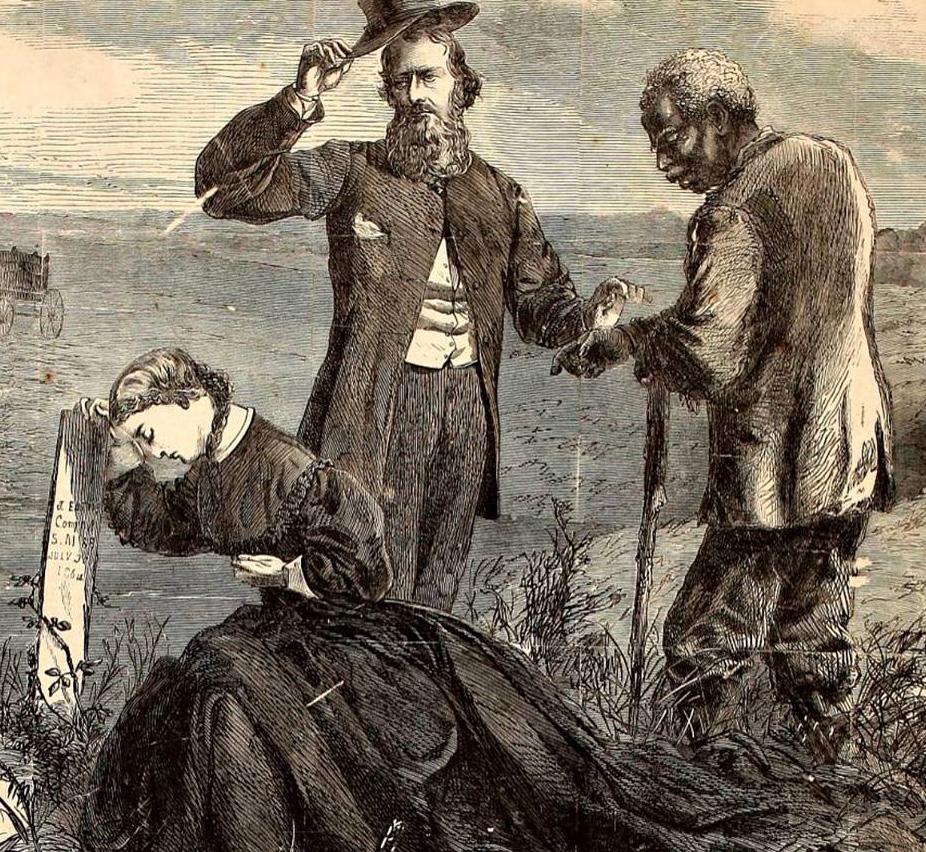
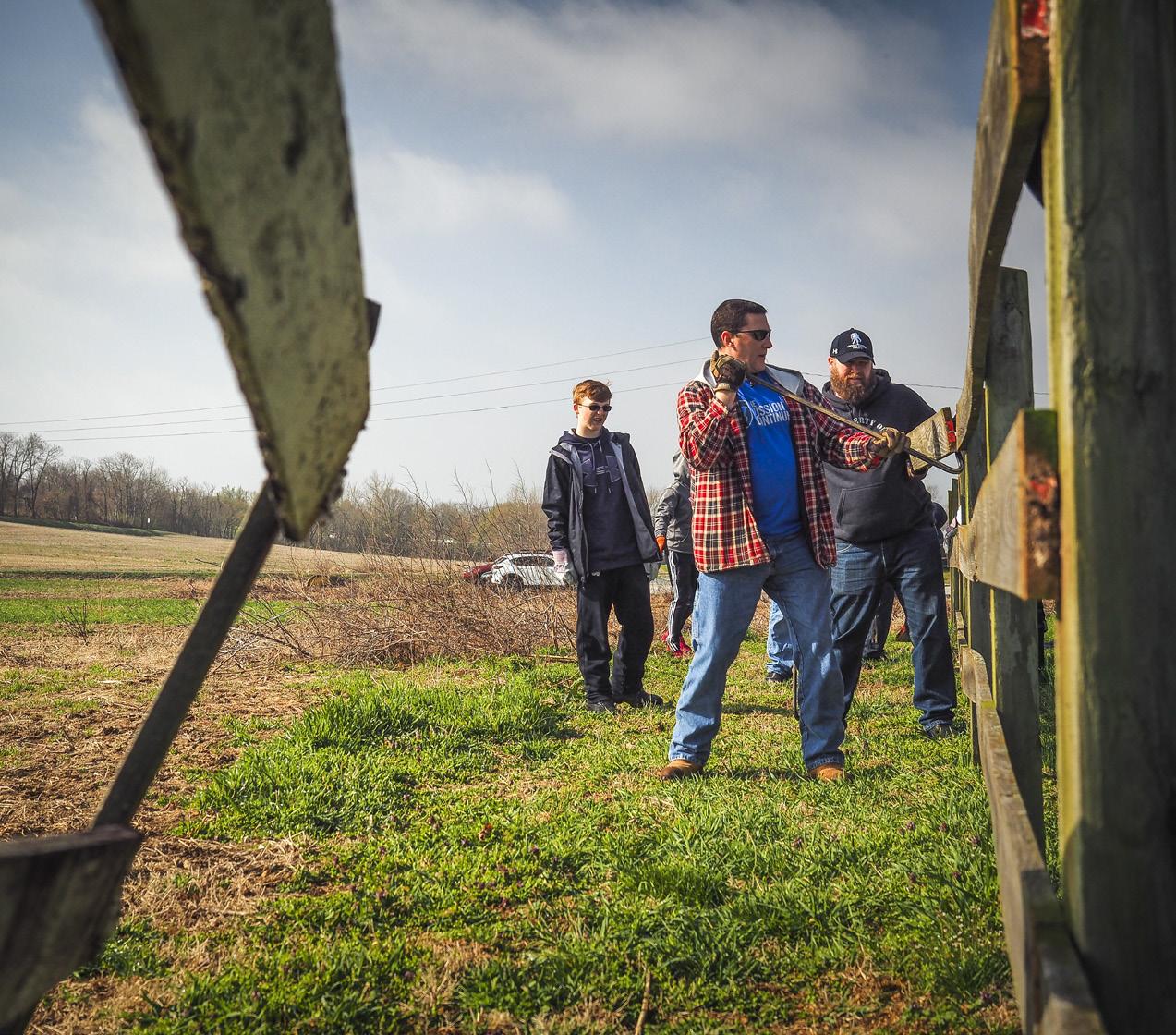
For more information, visit www.battlefields.org/events.
www.HistoricalPublicationsLLC.com

17 March 2023 17 March 2023 CivilWarNews.com CivilWarNews.com
by Matt Brant.
Brandy Station Battlefield in Culpeper County, Va. Photo by Buddy Secor.
48 E. Patrick St., Frederick, MD. 301-695-1864 / civilwarmed.org Divided by Conflict. United by Compassion. Publishers/Authors Send your book(s) for review to: Civil War News 520 Folly Road, Suite 25-379 Charleston, SC 29412 bookreviews@civilwarnews.com
the morning join the land forces attacking New Bern.
A prewar instructor at the U.S. Naval Academy, Wood was the grandson of former President Zachery Taylor. Realizing his
A Mortifying Affair


“The time is at hand when, if an attempt can be made to capture the enemy’s forces at New Berne, it should be done. I can, now spare troops for the purpose, which will not be the case as spring approaches.” Gen. Robert
E. Lee

On January 2, 1864, Gen. Robert

E. Lee wrote President Jefferson Davis suggesting an attack to recapture the second largest town in North Carolina, New Bern.
Gen. Ambrose Burnside had captured the railroad and river trade center on March 14, 1862. Lee sought a “large amount of provisions and other supplies … said to be at New Berne, which are much wanted for this army.”
Gen. George Pickett was selected to coordinate the infantry, artillery, and naval attack on New Bern. Pickett, best known for his namesake charge at Gettysburg, Penn., on July 3, 1863, graduated from West Point, fought in the Mexican-American War, and
served on the frontier. Twice widowed, he married “smuggled” bride, LaSalle “Sallie” Corbell, on September 15, 1863. Corbell was “smuggled” into Petersburg, Va. to avoid the wedding being used to capture Pickett.
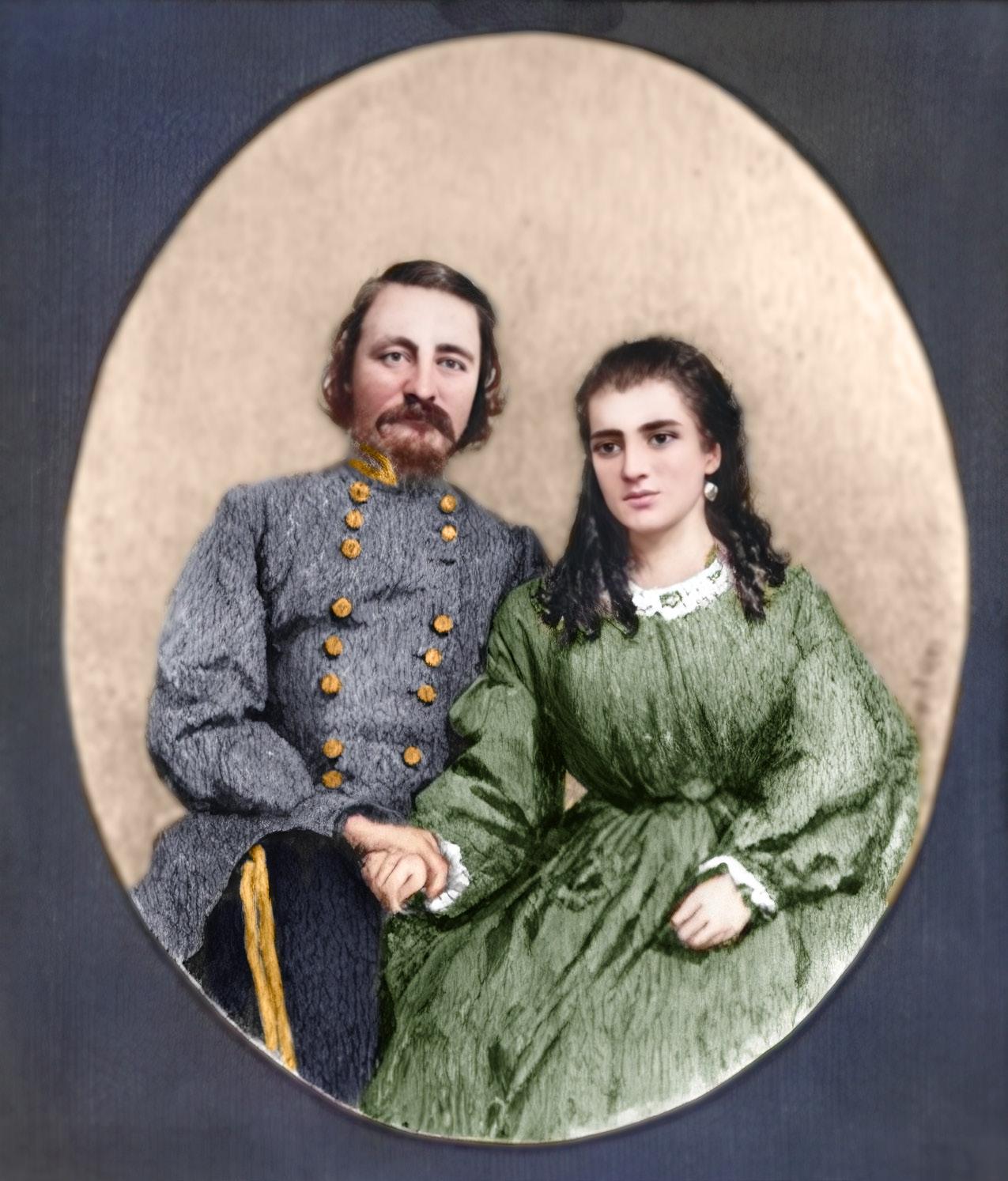
In fall 1863, Pickett’s Dept. Of Virginia and North Carolina was at subpar strength due to the Confederate strategy of sending troops where needed. In October 1863, New Bern became a Federal base to conduct raids focused on burning, pillaging, offering freedom to all slaves, and “insulting our ladies.” Morale plummeted; North Carolina suffered the highest desertion rate in the Confederacy.
Pickett deemed that the Federals, “like the Indians, only war on the defenseless,” and considered the raids a violation of the “rules of war.” Pickett’s response was to order, “any one caught in the act (negroes or white men) of burning houses or maltreating women must be hung on the spot.”
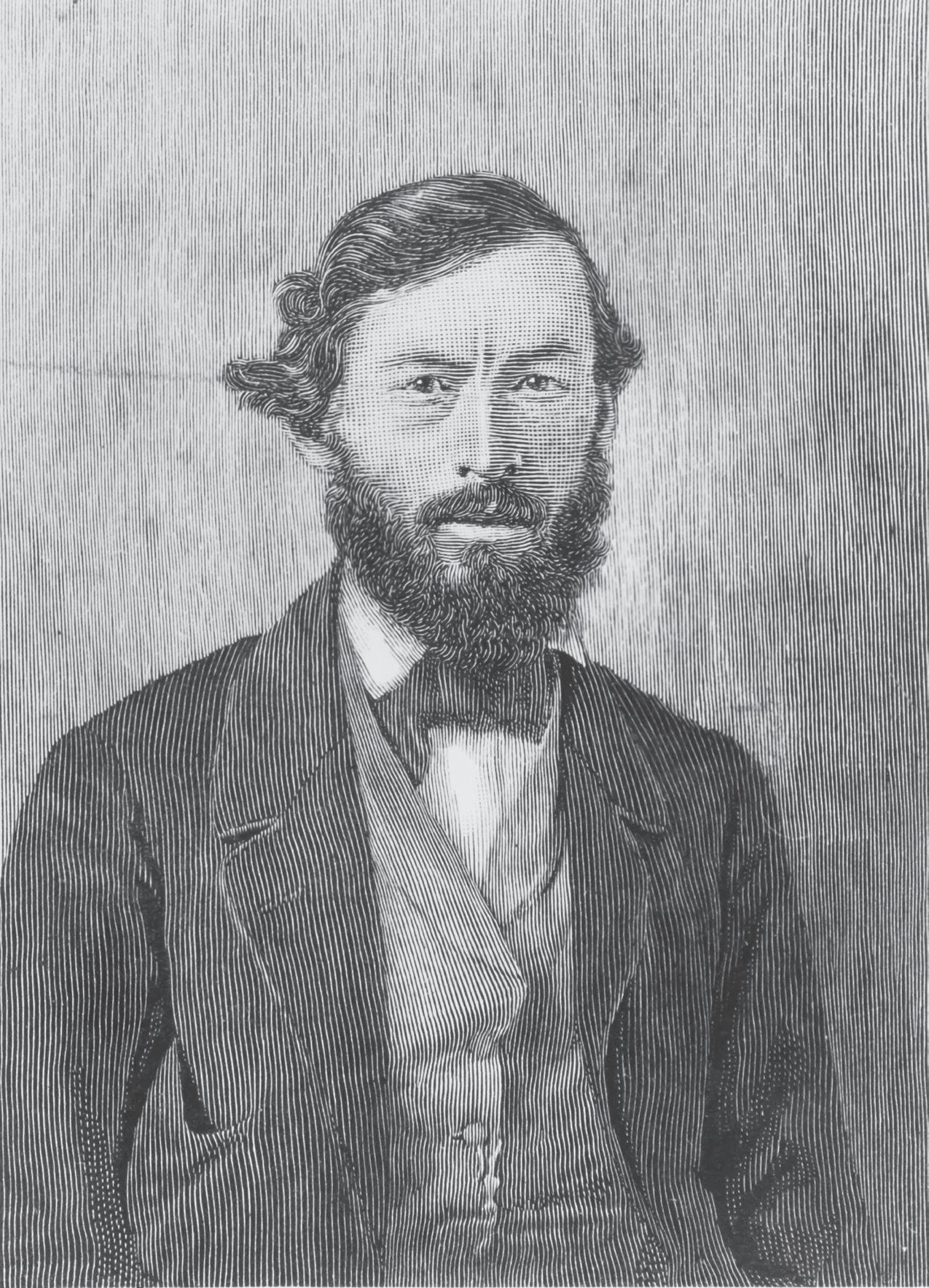
The plan for what became the February 1-3, 1864, Battle of New Bern was for all Southern
forces to converge on the town for a simultaneous attack. On January 30, 1864, Pickett set out from Kinston, N.C., with a force of 13,000 men. Pickett split his force into three columns. Gen. Seth M. Barton’s 4,500 men, eight rifled pieces, six Napoleon guns, and 600 cavalrymen were to approach New Bern from the south and enter the town via the railroad bridge. Col. James Dearing, with the 15th and 17th Va. Cavalry, was assigned to attack Fort Anderson across the Neuse with three piece of artillery and 300 troopers. From the northwest, Pickett and 26-yearold, North Carolinian Gen. Robert F. Hoke were to surprise the troops at Batchelder’s Creek and silence the guns in the star fort and batteries near the Neuse River. Commander John Taylor Wood, with 14 boats, was tasked with attacking gunboats in the Neuse during the night and in
plan to remain neutral wasn’t feasible, on October 3, 1861, Wood accepted a commission in the Confederate Navy, joining his uncle, President Jefferson Davis, his cousin, Gen. Richard Taylor,
and his brother, Col. Robert C. Wood Jr., in aligning with the Confederacy. Wood’s first responsibility was to recruit and train men to crew the ironclad USS Virginia. Serving as an aidede-camp (ADC) to Davis, the “Horse Marine” held both the rank of captain in the CSA Navy and as a colonel of cavalry, one of the few to hold dual rank.
For the attack, Wood assembled 33 officers and 220 enlisted men, including 25 marines. The men with 12 cutters and two large launches armed with 12-pdr. howitzers arrived in Kingston by rail on January 31. Using muffled oars, the men rowed down the Neuse River through the night. The men wore a white badge on their left arm and used the password “Sumter” to differentiate themselves from their foe. Unable to find any Federal gunboats at New Bern before dawn, they rowed back upriver to await nightfall.
The next night the Confederates spotted their prey, the 186 feet long USS Underwriter, anchored between two forts off New Bern. The 341-ton sidewheel steamer was powered by two 800 horsepower engines, crewed by 12 officers and 72 men, and
18 CivilWarNews.com March 2023 18 March 2023 CivilWarNews.com
Commander John Taylor Wood, CSN. Colorization © 2022 civilwarincolor.com, courtesy civilwarincolor.com/ cwn. (Naval History and Heritage Command)
Gen. Robert Hoke, C.S.A.. Colorization © 2022 civilwarincolor.com, courtesy civilwarincolor.com/cwn. (Public Domain)
General George E. Pickett, C.S.A. and LaSalle “Sallie” Corbell Pickett. Colorization © 2022 civilwarincolor.com, courtesy civilwarincolor.com/cwn. (Public Domain)
carried a 20-pdr. Parrott rifle and four 32-pdr. Dahlgrens. Wood called the men together to pray before attacking the formidable opponent. It was “a strange and ghostly sight, the men resting on their oars with heads uncovered, the commander also bareheaded, standing erect in the stern of his boat; the black waters rippling beneath,” wrote Midshipman Thomas Scharf.



The Underwriter’s bells struck at 2:30 a.m., revealing her location. “As I stood up and watched the line,” Lt. George W. Gift wrote, “it looked like a naval funeral procession.” Spotting the boats, the Underwriter “slipped her cable and made efforts to get up sufficient steam from her banked fires, to move off, or run the Confederates down.” The Rebels opened fire with the howitzer, hitting the pilot house. The Federals returned fire, “grapnels were thrown on board, and the Confederates were soon scrambling, with cutlass and pistol in hand, to the deck with a rush and a wild cheer, that rung across the waters, the firing from the enemy never ceasing for one moment.”
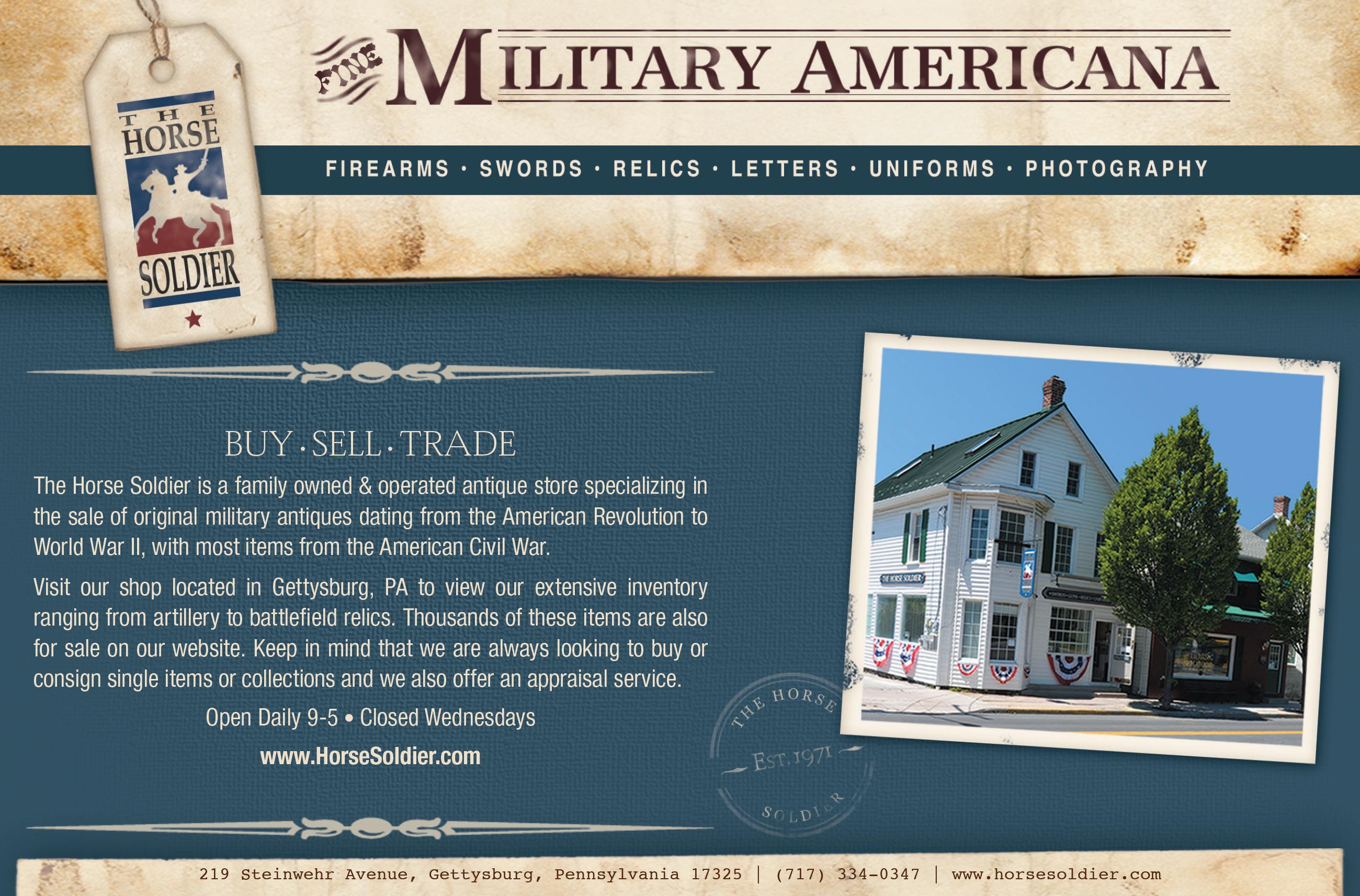
The “life-and-death struggle” lasted ten minutes before the Underwriter was captured. The Federal shore batteries then targeted the ship. Unable to generate enough steam to carry off their prize, all wounded were removed, and the ship set ablaze. The retreating Confederates “could see by sudden flashes in the sky, and by the dull, heavy booming sound which came to them upon the night air, that the shell-room was reached and that the explosion had begun.”
On January 31, Hoke camped without fires at Steven’s Fork, two miles from a Federal outpost. On the morning of February 1, he “threw some trees across the creek and crossed two regiments over.” to keep the Federals occupied while the bridge was repaired. Hoke marched his men over the creek, “routed them,” marched the nine miles to reach a spot within a mile of New Bern and waited for the other two columns to get into position. According to his wife, “Through a whole day of torture Pickett waited in deathlike suspense with the prize of Newbern almost within his grasp.”
Barton in the meantime easily captured a Federal “blockhouse.” After sending scouts ahead, Barton concluded that he was “unprepared to encounter obstacles so serious.” A lively artillery duel ensued lasting until the following day. Barton sent word that, “he had been entirely misinformed as to the strength of

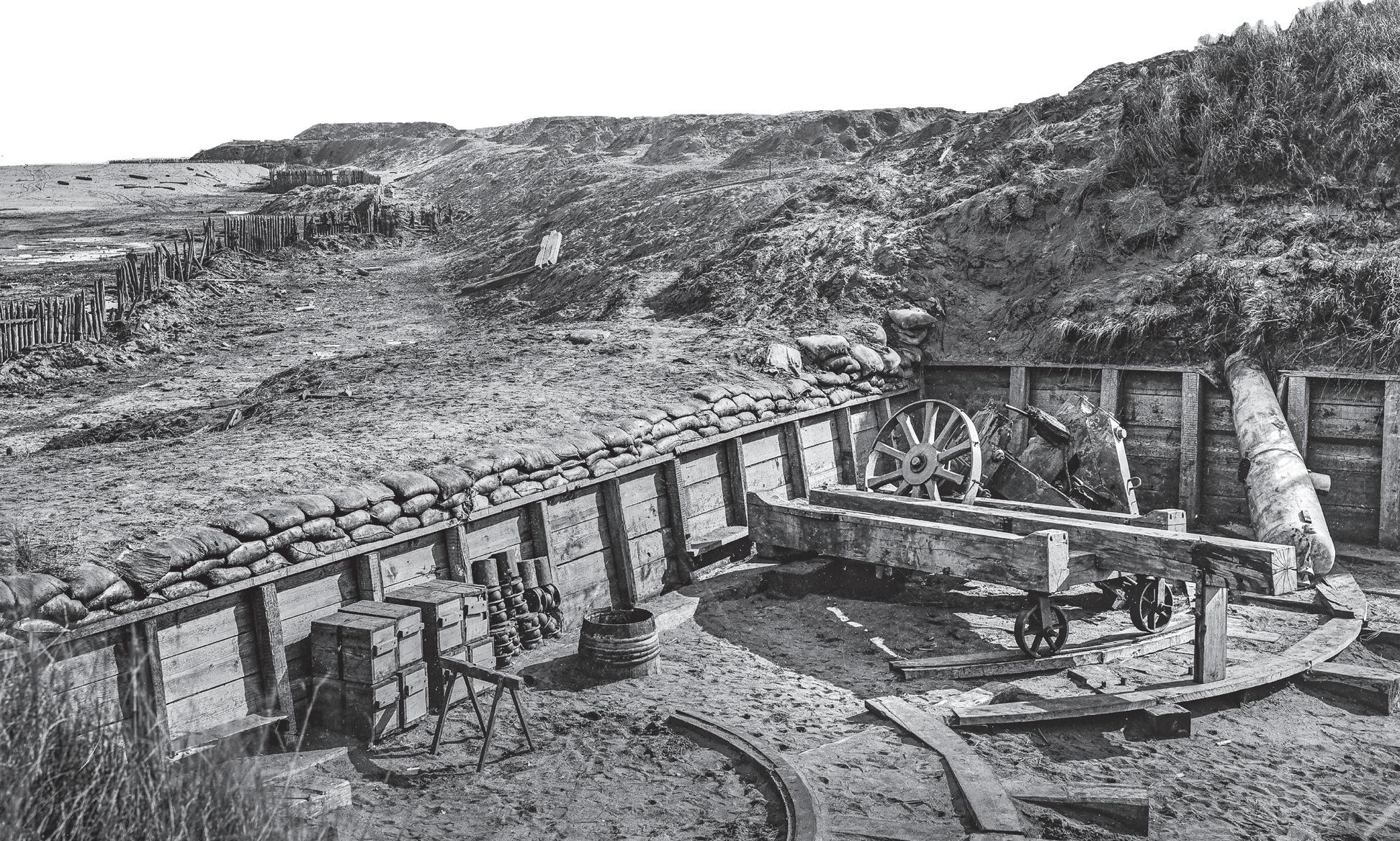
the place, and that he pronounced the works as too strong to attack and that he had made no advance and did not intend to, and that he had sent out twice his cavalry to cut the railroad and they returned without accomplishing it.” Dearing too reported that the fortifications were too formidable and decided against the assault. With the failure of two of his columns Pickett retreated on February 3.
Both Davis and Lee were disappointed the expedition didn’t achieve its primary objective. “It is difficult in a combined attack to regulate and harmonize on an extreme field all the operations,” acknowledged Lee. Lee did congratulate Hoke, “You and your gallant brigade accomplished your part of the work.”

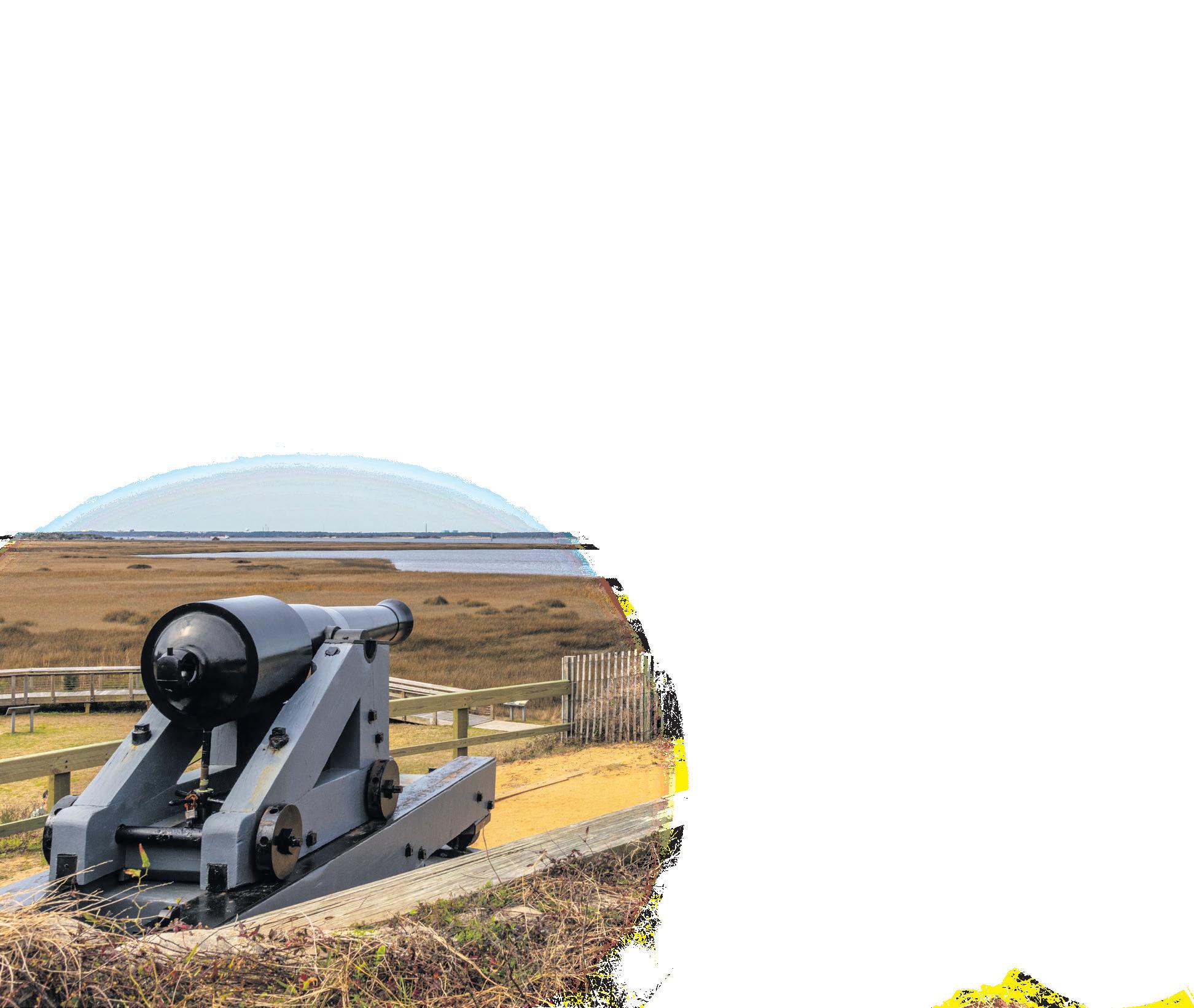
Both sides commended Wood. The Confederate Congress formally thanked the “Horse Marine” for all his “daring and executed plans.” After the War, U.S. Adm. David Porter wrote, “This was a rather mortifying affair for the navy … [but] it was to be expected that with so many clever officers, … such gallant action would often be attempted.”
Sources:
• Barrett, John G., The Civil War in North Carolina: The University of North Carolina Press, 1995
• Gordon, Lesley J., General George E. Pickett in Life and Legend: The University of North Carolina Press, 1998

• Bell, John, Confederate Seadog: John Taylor Wood in War and Exile: McFarland & Company, 2002
• Scharf, John, Tomas, History of the Confederate States Navy from Its Organization to the Surrender of its Last Vessel: Joseph McDonough, 1894

19 March 2023 19 March 2023 CivilWarNews.com CivilWarNews.com
Stephanie Hagiwara is the editor for Civil War in Color.com and Contact Mike at: 910-617-0333 • mike@admci.com Provenance a Must! Fort Fisher items wanted Civil War in 3D.com. She also writes a column for History in Full Color.com that covers
historical Visit our website for up-to-date event listings at: HistoricalPublicationsLLC.com interest from the 1850’s to the present. Her articles can be found on Facebook, Tumblr and Pinterest.
stories of photographs of
Mathew Brady Accused of Insider Trading While Visiting Grant in Virginia
by Bob Zeller
This story was originally published in the April 2014 issue of Battlefield Photographer, the journal of The Center for Civil War Photography
On Oct. 31, 1864, Assistant Secretary of War Charles A. Dana scrawled his signature, “C.A. Dana” on the outside of a highly sensitive three-page letter that would soon be making its way to headquarters of the Union Army at City Point, Va. Above Dana’s signature appeared these words: “Confidentially referred to Lt. Gen. U.S. Grant.”
Most pieces of correspondence arriving at army headquarters in City Point, Va., were routinely recorded into the army’s official register of correspondence and
alphabetically cross-indexed. But this letter was not a routine piece of correspondence. It survives to this day at the National Archives, lumped among letters that came to army headquarters but were never registered.1
The letter was written by LaFayette C. Baker, the war department’s spy master and Provost-Marshal of the War Department, who would gain the greatest fame of his star-crossed career in the pursuit and capture of John Wilkes Booth after the assassination of Abraham Lincoln. Baker, one of the most controversial figures in the North during the war, had a healthy appetite for rooting out scandal, real or otherwise, and seemed to see a conspiracy lurking in every dark corner.
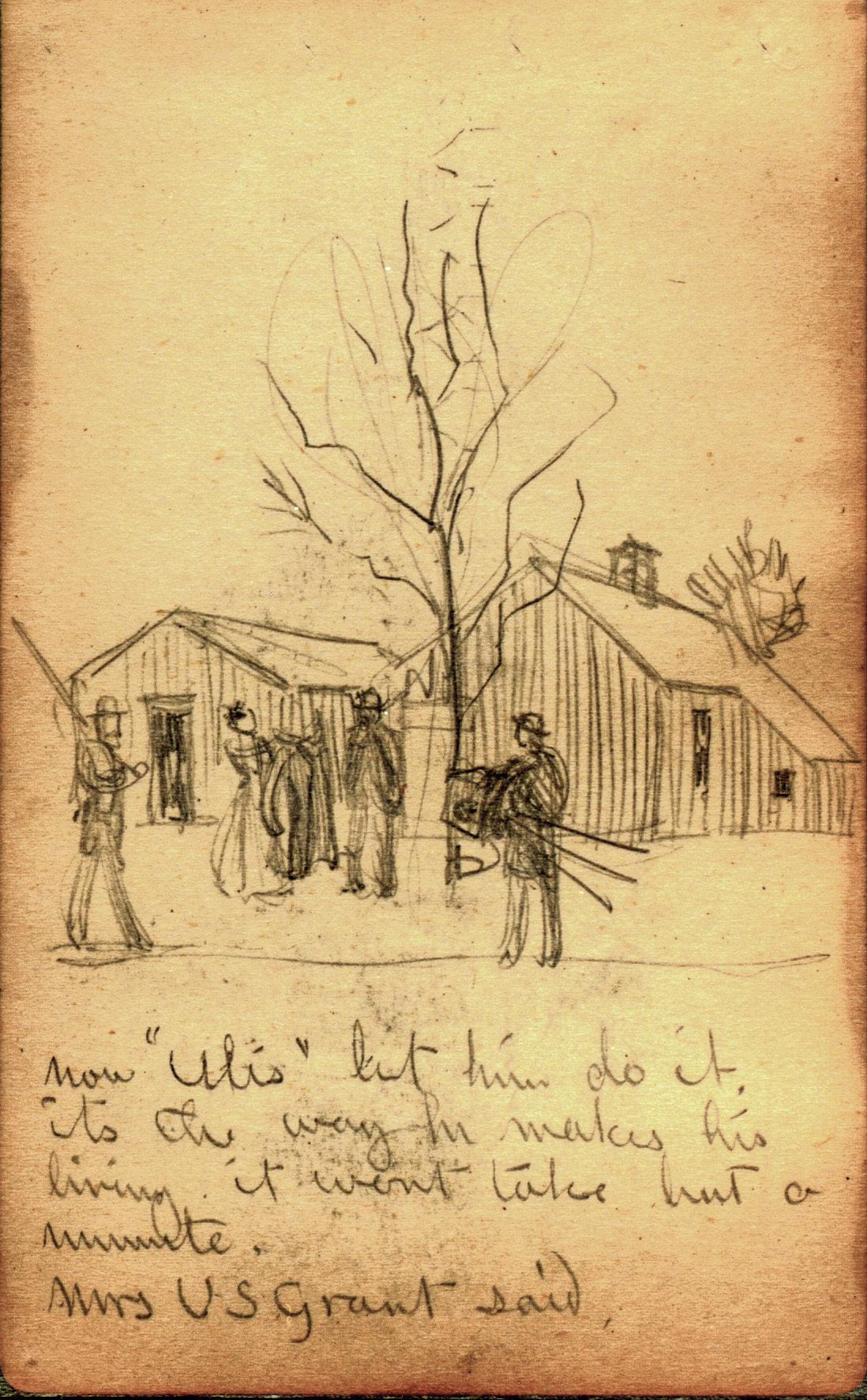
Now his sights were set squarely on the most heralded photographer in the North, Mathew B. Brady, the official photographer for U.S. Grant and the headquarters command of the Army of the Potomac. If Baker’s allegations were true, Brady, while gaining the confidence of Grant, was neck-deep in a scheme cooked up by Wall Street fat cats to gain confidential, advance information on the Union army’s efforts, giving them a trading advantage in the markets, which would go up or down depending on what the army did and whether it succeeded or not.
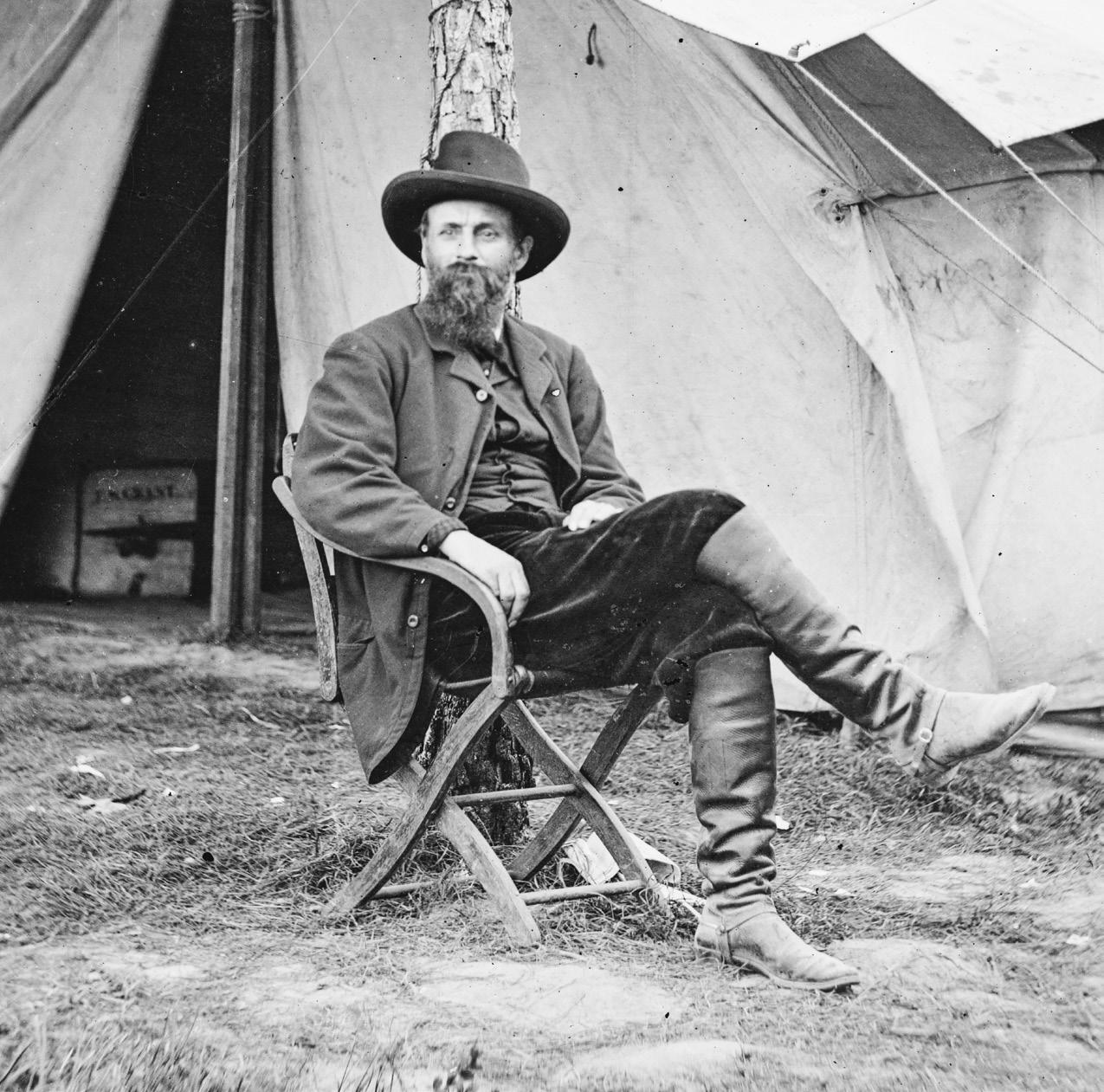
Writing from New York, Baker told Dana: “I have just come into possession of certain facts in relation to a plan arranged and devised by a number of prominent Wall Street Brokers for procuring information from the Army of the Potomac as to the success or defeat of General Grant’s intended movements on Richmond.”2
The previous spring, Baker wrote, Brady had been with Grant’s army, taking photographs of Grant and his generals. The more than 200 photographs that Brady took on that two-week excursion to the front in June 1864 are the best documentation of that visit, including several photos of Grant, group shots of generals, the well-known stereo view of Brady sitting with Gen. Ambrose Burnside and other
images with Brady in the photo. Back in Washington, Brady published a catalog of those images – a total of 231 in four different sizes, featuring 81 large photos ($1.50 each) and 84 stereo views (50 cents each). They apparently did not sell well, because extant, vintage original prints or stereo cards are exceedingly rare, indeed almost unheard of, in today’s antique
photo market. But many of the negatives of these images have survived and are preserved at the National Archives or the Library of Congress.3
If Baker’s report is to be believed, Brady had an ulterior motive in visiting Grant that went far beyond photography, and was unusually determined to make that visit happen. Baker alleged that when Brady requested permission to visit the army in 1864, it was “refused at the War Department.” After this denial, “Brady then applied to the President, who also refused to grant his request,” Baker wrote. Undeterred, Brady wrote to Grant’s wife, Julia, “to use her influence with the General to procure the desired pass,” he

20 CivilWarNews.com March 2023 20 March 2023 CivilWarNews.com
This rarely seen sketch by Civil War artist Charles Wellington Reed shows a photographer preparing to try to take Gen. Ulysses S. Grant’s photo at his headquarters in City Point, Va., as Grant’s wife helps him into his jacket. Reed’s hand-written caption reads, “’Now, ‘Ulis’ let him do it, it’s the way he makes his living, it won’t take but a minute,’ Mrs. U.S. Grant said.” (Library of Congress)
Assistant Secretary of War Charles A. Dana was photographed by Brady in Virginia in June 1864, the same time the alleged insider information scheme was supposedly taking place. (Library of Congress)
A Brady studio portrait of Lafayette C. Baker (National Archives)
“If Baker’s allegations were true, Brady, while gaining the confidence of Grant, was neck-deep in a scheme cooked up by Wall Street fat cats to gain confidential, advance information...”
wrote, which worked. In City Point, by photographing Grant and his generals, Brady “placed himself on the most intimate terms with these officers.” 4
The scheming brokers knew this, Baker’s sources told him, and “at once selected him as a medium through which they proposed to obtain the information desired.” Baker said Brady would write a telegram to his gallery in New York, requesting one of his artists to come at once to the army to assist Brady. Although no telegrams could be sent from the army just before or during an important movement without Grant’s approval, Brady would obtain the general’s approval, but not send the telegram until “a moment when the success or defeat of our Army will materially affect the Stock and Gold market,” Baker wrote.5
Baker said he was told of the scheme by “one of the principal (supposed) actors in the scheme, and can be relied upon as being strictly true.” And since Brady had “obtained the unlimited confidence of General Grant,” Baker said he “deemed it proper to communicate these facts to the Department in order that the General may know how he is being deceived. . .”6
What are we to make of this explosive letter, which has remained all but hidden in the army records since the day it was filed away as an unregistered piece of correspondence? Was there any truth to it?
We may never know for sure, but there is no record of any action being taken by anyone in
connection with the allegations, and no hint of the alleged scandal in any of the books or articles about Brady. A search of National Archives records reveals no record of any telegrams sent by Brady from army headquarters in June 1864, or any time that year. There is no record of any telegrams sent by his two primary assistants, David Woodbury and Anthony Berger. Additionally, there is no record of any letter or written application from Brady to the War Department asking permission to visit the army in 1864, and no refusal letter to Brady. Both Dana and Baker wrote war memoirs, but neither mention Brady in their narratives.
Dana could have provided Baker with a personal perspective of Brady’s camp activities that spring in Virginia because he was there. In fact, Dana could have been considered one of those whom Brady placed himself on intimate terms with, because Dana sat in front of Brady’s stereo camera for an individual portrait of himself in camp at Cold Harbor. This image was sold as a stereo view in the E. & H.T. Anthony & Co. War for the Union stereoscopic series.
LaFayette Curry Baker, who also sat in front of Brady’s camera during the war in one of his studios, took over the U.S. Intelligence Service, forerunner of the U.S. Secret Service, in 1862 at age 36, succeeding Allen Pinkerton. A big part of his job was rounding up traitors and other criminals, and his agents would bring in several men a day, logging their names into a register of arrests, mostly for desertion, disloyalty,
drunkenness, disorderly conduct, and selling liquor to soldiers.7 He was frequently accused of brutality and abuse of power in his work, and this eventually included Secretary of War Edwin M. Stanton, who had hired him. In 1864, Baker was relegated to the New York office after allegedly tapping Stanton’s telegraph lines, suspecting him of corruption. But while in New York, Baker seemed to dive into his tasks with undimmed zeal. After Lincoln’s assassination, Baker was summoned back to Washington by Stanton and placed in charge of the Booth manhunt.8
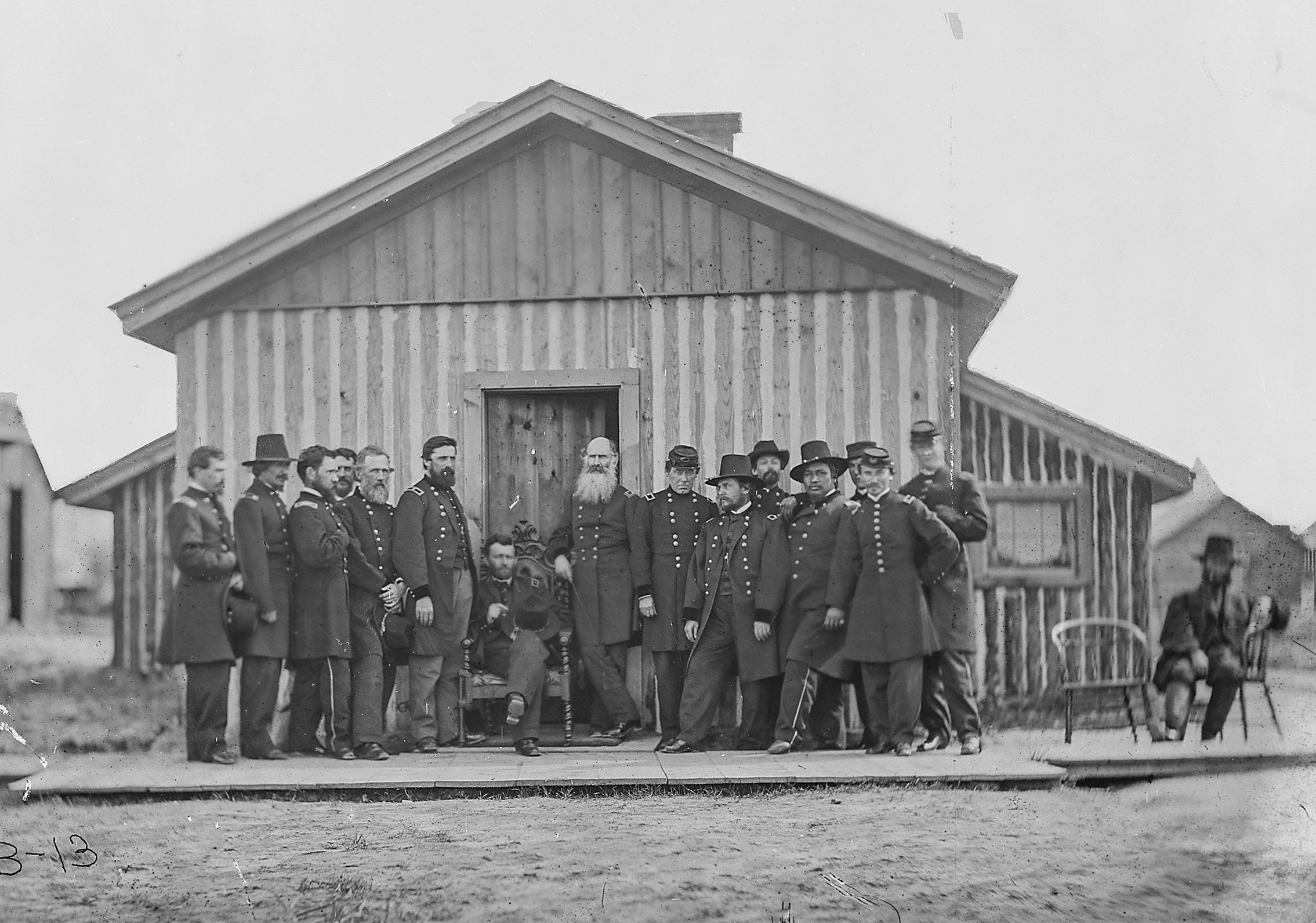
Chapter titles from Baker’s 1867 war memoir, History of the United States Secret Service, provide a telling summary of his wartime work, among them, “Treason and Traitors at the North”; “Disloyalty Among the Postmasters”; “Frauds by Government Employees and Others”; “Stealing-Smuggling Liquors Into the Army”; “Wealthy Traitors—Fruitless Schemes”; “Gigantic Vices of the National Capital”; “Counterfeiters and Counterfeiting,” and “Bounty Jumpers in Organized Bands.”9
Baker’s interest in photography seemed to be limited to how he might exploit it, and how it might be used salaciously. At the outbreak of the war, he attempted to pose as a photographer to gain access to Confederate leaders, a ruse that managed to get him arrested in Richmond. He escaped, returned to Washington, and began doing Stanton’s bidding after being appointed Provost-Marshal of the War Department in 1862.
In 1863, Baker launched a crusade against pornography. “I know of no lower grade of depravity than that of this shameless business,” he wrote. “The vile book, photograph and wood cut were scattered by sutlers, mail agents and others throughout the army. The art of photography and printing has flooded the country with these cheap and shameless appeals to the lowest and most brutal passions.” Baker said he seized $22,000 worth of the “vile goods” (about $405,000 in today’s dollars). He decided to make a bonfire of “this pile of sensual trash” and “our pure-minded President intimated that he would like to see the conflagration. It was kindled in front of the White House, and he enjoyed the sight. . .”10
Grant, in correspondence with his wife, Julia, took note of Brady’s presence in camp that June in Virginia. “Brady is along with the Army and is taking a great many views and will send you a copy of each,” he wrote on June 19, 1864, from City Point, just days after being photographed by Brady at Cold Harbor.11
Grant was clearly a fan of the 3-D photo. He had begun that June 19 letter to Julia by telling her he was sending her copies
of the three stereo views that Timothy O’Sullivan took of Grant and his generals from the window of Massaponax Church.
“To see them you will want a Sterioscope (sic),” he wrote. “Send to Covington for Buck’s, or buy one.”12

This was not the first time Grant wrote about 3-D Civil War photos while in the field. On April 3, 1863, he wrote Julia: “I sent to Buck by Capt Osband a lot of views taken at Hollysprings for him to look at through his sterioscope. I hope he has not left it behind.”13

Grant’s fascination with 3-D photos, alas, could not be shared by his wife. Julia was afflicted by strabismus, commonly referred to as crossed eyes, “which would have prevented her from experiencing the threedimensional sensation of the stereoscope,” writes Candice Shy Hooper, an independent scholar who published a book about the wives of Lincoln’s generals.
Although we may never know for certain whether any insider trading scheme actually occurred that spring, we do know that Grant was not only interested in photography and stereo views, he was also a fan of stock trading.
In the same June 19 letter where he mentions Brady, Grant goes on to relate to Julia: “Did I
21 March 2023 21 March 2023 CivilWarNews.com CivilWarNews.com
www.CollegeHillArsenal.com Tim Prince College Hill Arsenal PO Box 178204 Nashville, TN 37217 615-972-2418 www.CollegeHillArsenal.com
Gen. U.S. Grant and his staff were captured by Brady outside his headquarters hut in City Point, Va. — the same building depicted on the right in the sketch on the facing page. (National Archives)
tell you that my horse rail-road stock paid 5 per cent the last quarter? This makes that $5,000 investment pay over $100.00 per month.”14
The Baker letter, although unknown within Civil War photographic history circles, has not been hidden from deepresearch scholars. Grant’s June 19 letter to Julia is published in Volume 11 of The Papers of Ulysses S. Grant. The general’s mention of “Brady” is footnoted, and at the bottom of the page, without comment, is published the entire Baker letter. This is where Candace Hooper found the fascinating account, and in 2013 she generously passed it along to us, providing yet another fascinating episode in the Civil War adventures of Mathew B. Brady.
Endnotes:

1. LaFayette C. Baker letter to Charles A. Dana, Oct.
New York City
October 29, 1864
Honorable C.A. Dana
Asst. Secretary of War Washington, D.C.
Sir:
29, 1864; Letters Received, Unregistered; Records of the Headquarters of the Army, RG 108, M504, Microfilm Roll 233, National Archives and Records Administration, Washington, D.C.
2. Ibid.
3. “Brady & Co’s Catalogue of Photographs and Stereoscopes of Lt. Gen. Grant’s Late Campaign, June, 1864;” E 468, .7, copy on file at Prints and Photographs Reading Room, Library of Congress, Washington, D.C.
4. Baker letter.
5. Ibid.
6. Ibid.
7. “Arrests and Committals by L.C. Baker, Provost Marshal, War Department, From July 17, 1863 to October 16, 1863,”
Letters Received by Secretary of War, Main Series, 18011870; March 1864-June 1864, “A and B,” Roll 250, M221, National Archives and Records Administration, Washington,
D.C.
8. John Simkin, Lafayette Baker, biography, online at http://www. spartacus. schoolnet.co.uk/ USAbaker.Laf.htm
9. LaFayette C. Baker, History of the United States Secret Service, published by L.C. Baker in Philadelphia, 1867.
10. Baker, History, page 382-383.
11. Ulysses S. Grant letter to Julia Dent Grant, June 19, 1864, Papers of Ulysses S. Grant, Volume 11 (Carbondale, Ill., Southern Illinois University Press, 1984), pp 84-85.
12. Ibid.
13. Ulysses S. Grant letter to Julia Dent Grant, April 3, 1863, Papers of Ulysses S. Grant, Volume 8 (Carbondale, Ill.; Southern Illinois University Press, 1979), page 9.
14. Grant letter, June 19, 1864.

Bob Zeller is co-founder and president of The Center for Civil War Photography (www.
civilwarphotography.org), a nonprofit educational organization founded in 2001. He has published four books on the subject, including The Blue
and Gray in Black and White (Praeger, 2005), the only booklength narrative history about the war’s photographers and their accomplishments.
Until now, a daily account (1,630 days) of Georgia’s social, political, economic, and military events during the Civil War did not exist. In Day by Day through the Civil War in Georgia, Michael K. Shaffer strikes a balance between the combatants while remembering the struggles of enslaved persons, folks on the home front, and merchants and clergy attempting to maintain some sense of normalcy. Maps, footnotes, a detailed index, and bibliographical references will aid those wanting more.
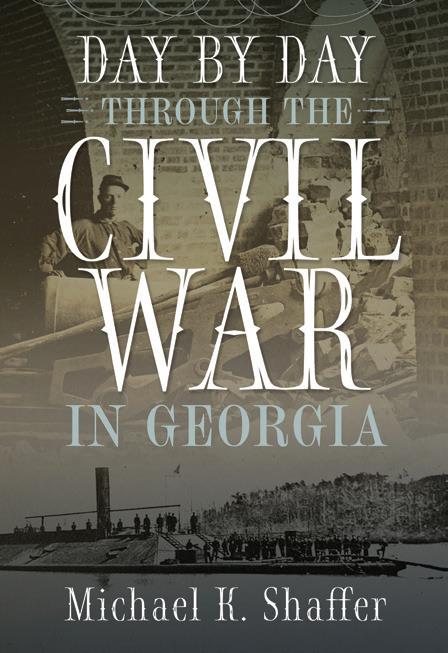
February 2022 • $37.00, hardback
Michael K. Shaffer is a Civil War historian, instructor, lecturer, newspaper columnist, and author. He is a member of the Society of Civil War Historians, Historians of the Civil War Western Theater, and the Georgia Association of Historians. Contact the author: mkscdr11@gmail.com
www.mupress.org • 866-895-1472 toll-free
Transcript of Brady Insider Trading Letter
I have just come into possession of certain facts in relation to a plan arranged and devised by a number of prominent Wall Street Brokers for procuring information from the Army of the Potomac, as to the success or defeat of General Grant’s intended movements on Richmond.
Some time last spring “Mr. Brady” the well known Daguerreotypist of New York, made application to Mr. Stanton for a pass to visit the Army of the Potomac for the purpose of taking views of Battle scenes, etc. The request of Mr. Brady was refused at the War Department, he Brady then applied to the President, who also refused to grant his request.
A few days afterwards, Mrs. Brady wrote a letter to Mrs. General Grant, asking Mrs. Grant to use her influence with the General to procure the desired pass. This letter obtained the wished for result, viz, the procuring of the pass from General Grant. Brady went to the Army and by his gratuitous offers to take the pictures of prominent Army Officers for the Illustrated papers in this city, placed himself on the most intimate terms with these officers.
The Brokers referred to, having learned Brady’s position in the Army, and knowing that he, Brady, possessed Genl. Grant’s confidence, at once selected him as a medium through which they proposed to obtain the information desired.”
It was understood by the Brokers referred to that immediately preceding or during any important movement or battle, that no telegrams could be sent from the Army without General Grant’s approval or endorsement.
Brady (then being with the Army of the Potomac), is to write and forward a telegram purporting to be addressed to one of his (Brady’s) Artists in this city, asking the Artist or employee to come to the Army at once to assist. This or some similarly worded telegram is to be taken by Brady to Genl. Grant for his endorsement, but to be held and forwarded at a moment when the success or defeat of our Army will materially affect the Stock and Gold market.
Inasmuch as Brady has obtained the unlimited confidence of General Grant (as he alleges), I have deemed it proper to communicate these facts to the Department in order that the General may know how he is being deceived by one to whom he has granted various privileges and favors.
The facts and circumstances herein stated have been obtained from one of the principal (supposed) actors in the scheme, and can be relied upon as being strictly true.
I am sir, your obedient servant, L.C. Baker
22 CivilWarNews.com March 2023 22 March 2023 CivilWarNews.com
Day by Day through the Civil War in Georgia
The first page of LaFayette C. Baker’s accusatory letter to Asst. Sec. of War Charles A. Dana about Brady. (National Archives)
National Archives Patent Drawings
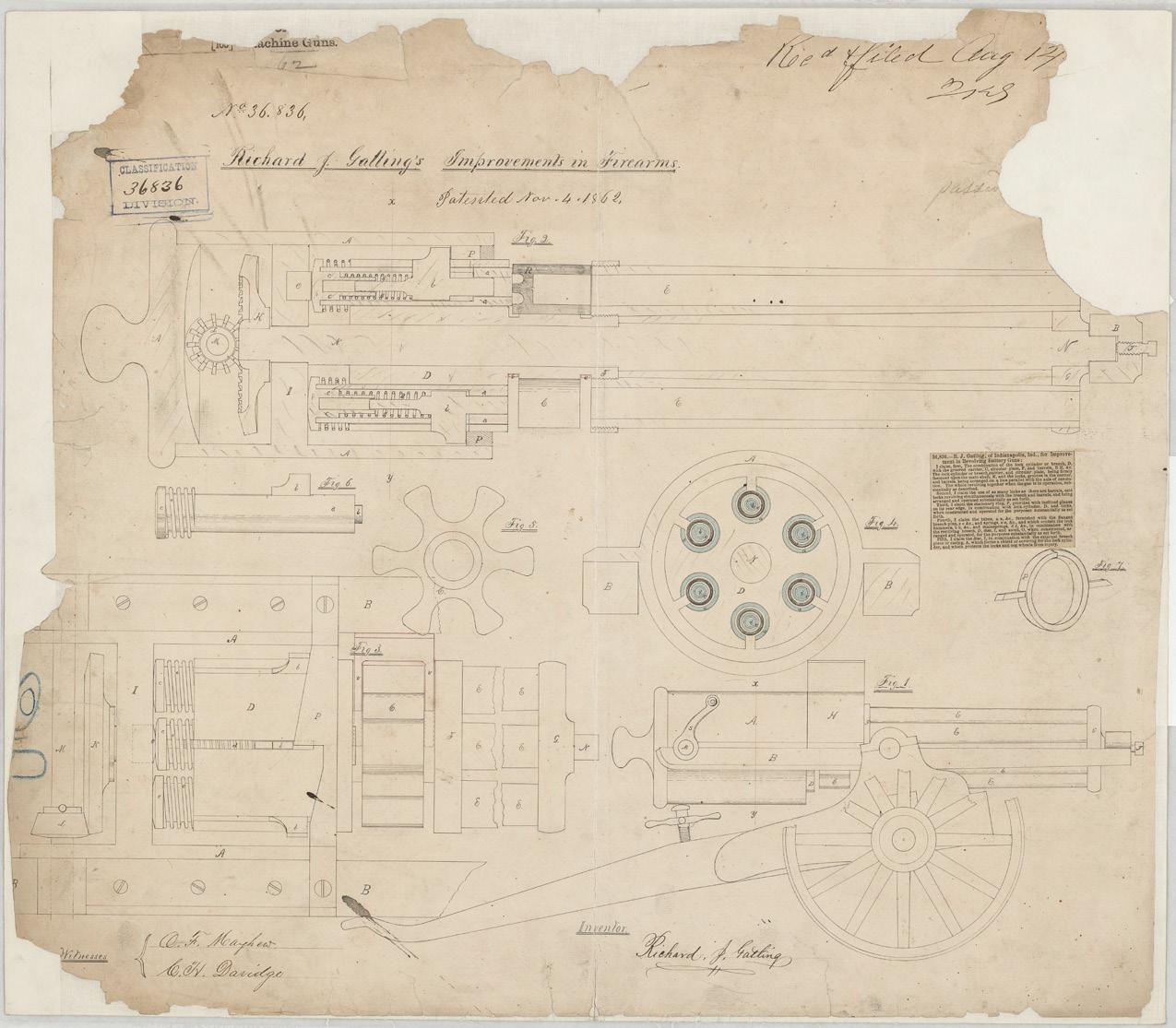
During the American Civil War, the trials and tribulations of soldiers sparked many enterprising individuals to submit various patent applications. The U.S. Patent Office awarded more than 19,000 patents during the war. (The Confederate Patent Office granted less than 300.) Ranging from new artificial limb designs (see image) to improved ambulances; enhancements in weaponry, efforts to combine various accouterments, and even a simple pencil; inventors busied themselves submitting designs. Thanks to the National Archives – see database: Utility Patent Drawings, 1837–1911, Record Group 241 at https:// catalog.archives.gov/searchwithin/305888 – researchers can view several wartime patents
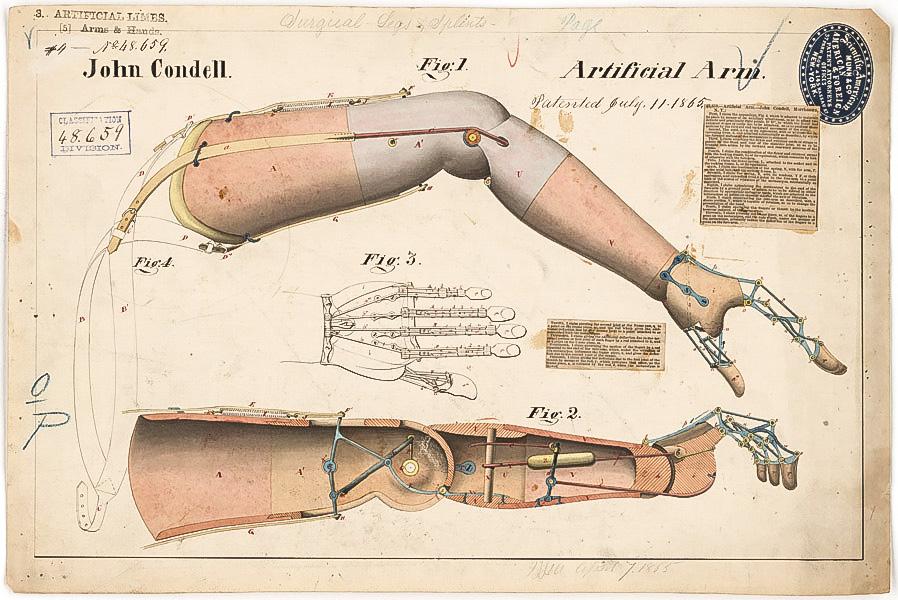
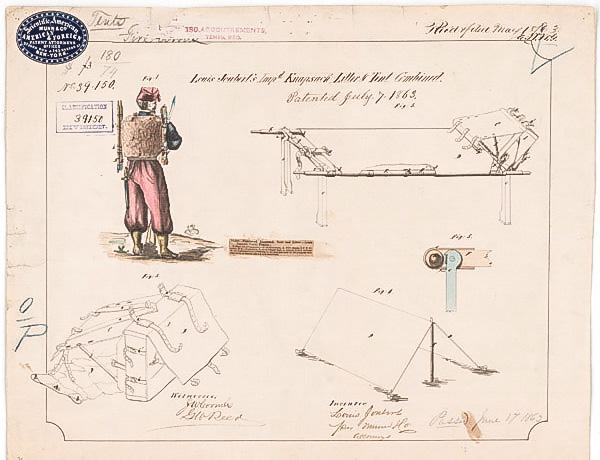
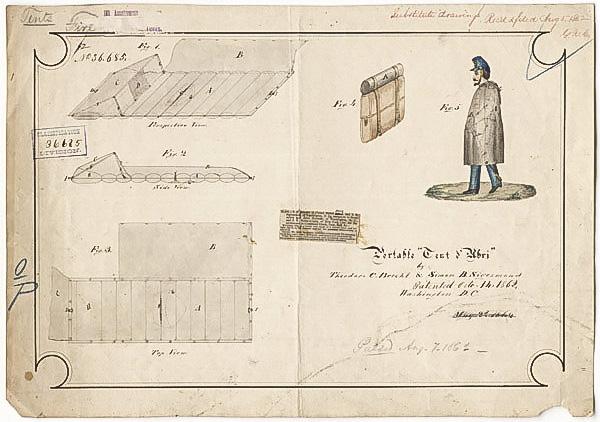

from over 92,000 digitized images. Try date searches (1861, 1862, etc.) to narrow results.
The following images offer a sampling of the work found within this database.
Spend time searching through this collection and continued
success in researching the American Civil War!
Michael K. Shaffer is a Civil War historian, author, lecturer, and instructor, who remains a member of the Society of Civil War Historians, Historians of the Civil War Western Theater, and the Georgia Association of Historians. Readers may contact him at mkscdr11@gmail.com or request speaking engagements at www.civilwarhistorian. net. Follow Michael on Facebook, www.facebook.com/ michael.k.shaffer, and Twitter @ michaelkshaffer.
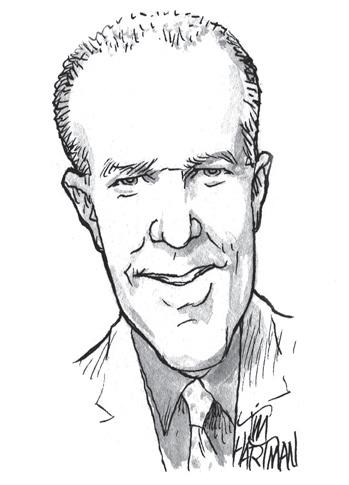
Gun Works, Inc.
Thousands of blackpowder hobbyists and aficionados, from history buffs and re-enactors to modern hunters and competitive shooters, trust

Patent for an artificial arm.
Gun Works for its expertise in all things blackpowder: guns, supplies, and accessories and parts for both reproductions and antique guns. Whether you’re just getting started or you’re a life-long devotee, everything you need is right here in
23 March 2023 23 March 2023 CivilWarNews.com CivilWarNews.com HistoricalPublicationsLLC.com
Ambulance wagon.
Knapsack-litter-tent
Portable tent.
combo.
Improvement to Gatling gun.
DIXIE GUN
INC. 1412 W. Reelfoot Avenue PO Box 130 Union City, TN 38281 INFO PHONE: (731) 885-0700 FAX: (731) 885-0440 EMAIL: info@dixiegunworks.com VIEW ITEMS AND ORDER ONLINE! www.dixiegunworks.com Major credit cards accepted FOR ORDERS ONLY (800) 238-6785 PROFESSIONAL SERVICE AND EXPERTISE GUARANTEED
TODAY! STILL ONLY $5.00! The tried-and-trusted choice of today’s blackpowder enthusiasts.
WORKS,
ORDER
DIXIE GUN WORkS’
Dixie
the 2023
catalog.
Rest on Arms Reversed
Confederate monuments, like war memorials generally, take numerous architectural forms, some common and some rare. Among the less frequently used forms are memorial stones, walls, benches, arches, gates and fountains; preserved industrial facilities; and (to my knowledge) one stained glass window. Obelisks and statues have been used much more often, with statues outnumbering the obelisks. With varying degrees of emphasis, these memorials serve several purposes: mourning the dead, praising the soldiers, defending their cause, conveying a message to the Confederates’ descendants, and expressing gratitude for peace and reconciliation. The architectural form chosen for a monument, its location, the inscriptions, and the decorative elements are all parts of the message.
An inscription quoting Isaiah 2:4 (“They shall beat their swords into plowshares…”) speaks of a nation weary of war and thankful for peace. Other inscriptions stress the soldiers’ bravery, perseverance
and honor.* The rightness of the cause is announced with such phrases as “They fought to maintain a just union” and “These men died in defence of the principles of the Declaration of Independence.” A draped obelisk topped with an urn, sited among soldiers’ graves in a cemetery, is obviously an expression of grief.
More common than any other form of memorial is the soldier statue. The bronze and marble soldiers stand in a variety of positions. Most are standing at parade rest, or some semblance of it; (Remember, these were citizen-soldiers, not professionals.) Some are marching with shouldered rifles, but not many. A few stand facing north, in the guard against infantry position, or to repeat, some semblance of it.**
The rest on arms reversed position, commonly seen in the United Kingdom and the Commonwealth, is rare in the United States. Here a soldier stands, head bowed, holding his rifle muzzle down, resting on the left foot. There are three such statues in Alabama and another in a similar pose. These Confederates are mourning their dead comrades. Georgia has one, kind of.
It depends on when you saw it.
Selma’s monument stands in Confederate Circle, on a piece of land owned by the local chapter of the United Daughters of the Confederacy, in the middle of city-owned Live Oak Cemetery. Built by the local Ladies Memorial Association, Selma’s statue is an old one, dedicated in 1878. It is noteworthy that the president of the LMA at the time was Elodie Breck Todd Dawson, the half-sister of Mary Todd Lincoln. The words inscribed on the monument’s base are wholly mournful in tone.
OUR CONFEDERATE DEAD.
HALLOWED THE DUST, WHERE SLEEP THE BRAVE.
DULCE ET DECORUM EST PRO PATRIA MORI.
THERE IS GRANDEUR IN GRAVES, THERE IS GLORY IN GLOOM.
(The last inscription quoted is from the poem “A Land Without Ruins” by Father Abram J. Ryan)
The superb condition of this monument shows that it has been well-maintained over the decades. The cost was $2,500. In 1880 a very similar statue was erected in the town of Camden, Alabama. One of the inscriptions below the grieving soldier articulates the builders’ continued belief in the justice of their peoples’ cause.
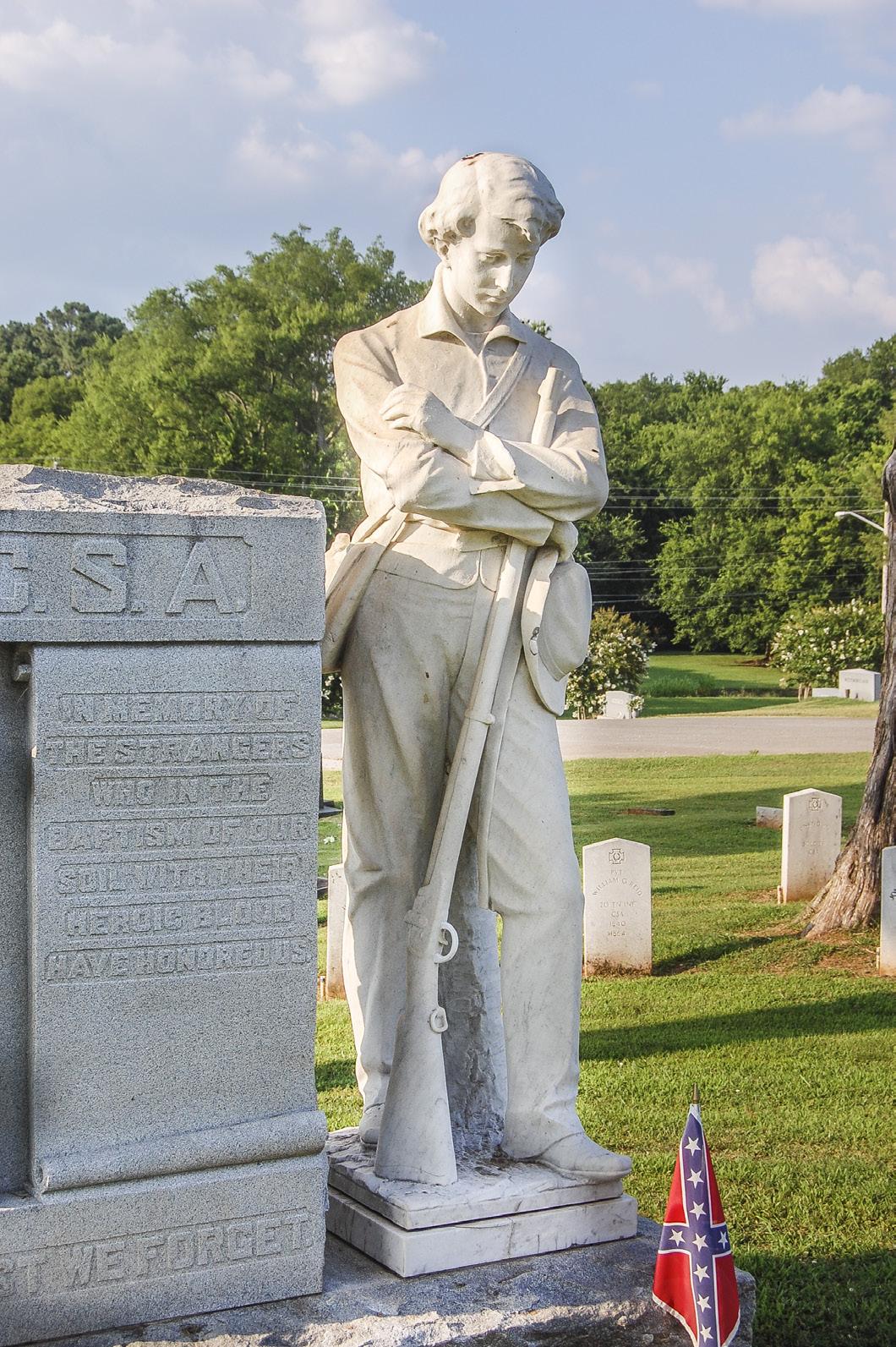
THEY GAVE THEIR LIVES FOR US; FOR THE HONOR OF ALABAMA; FOR THE RIGHTS OF THE STATES; AND FOR THE PRINCIPLES OF THE UNION AS THESE WERE HANDED DOWN TO US BY THE FATHERS OF OUR COMMON COUNTRY.
The builders, the Ladies Memorial Association and the Wilcox Monumental Association, quoted Father Ryan, as did the ladies in Selma and numerous other places.

WHEN MARBLE WEARS AWAY AND MONUMENTS ARE DUST, THE SONGS THAT GUARD OUR SOLDIERS’ CLAY WILL STILL FULFIL THEIR TRUST.
The quote is from the poem “Sentinel Songs.” The inscription identifies Father Ryan as the poet, which is unusual. His poems were so well known at the time that most people didn’t have to be told where the quote came from.
In Mobile, a statue that once topped a column in Magnolia Cemetery was shattered by lightning in 1931. The fiftyseven-year-old monument was rebuilt, minus the statue. You can still see the young Confederate, however; a remnant was saved and reused in a memorial erected in 1961. The soldier is (or was) standing at rest on arms reversed. His bowed head is
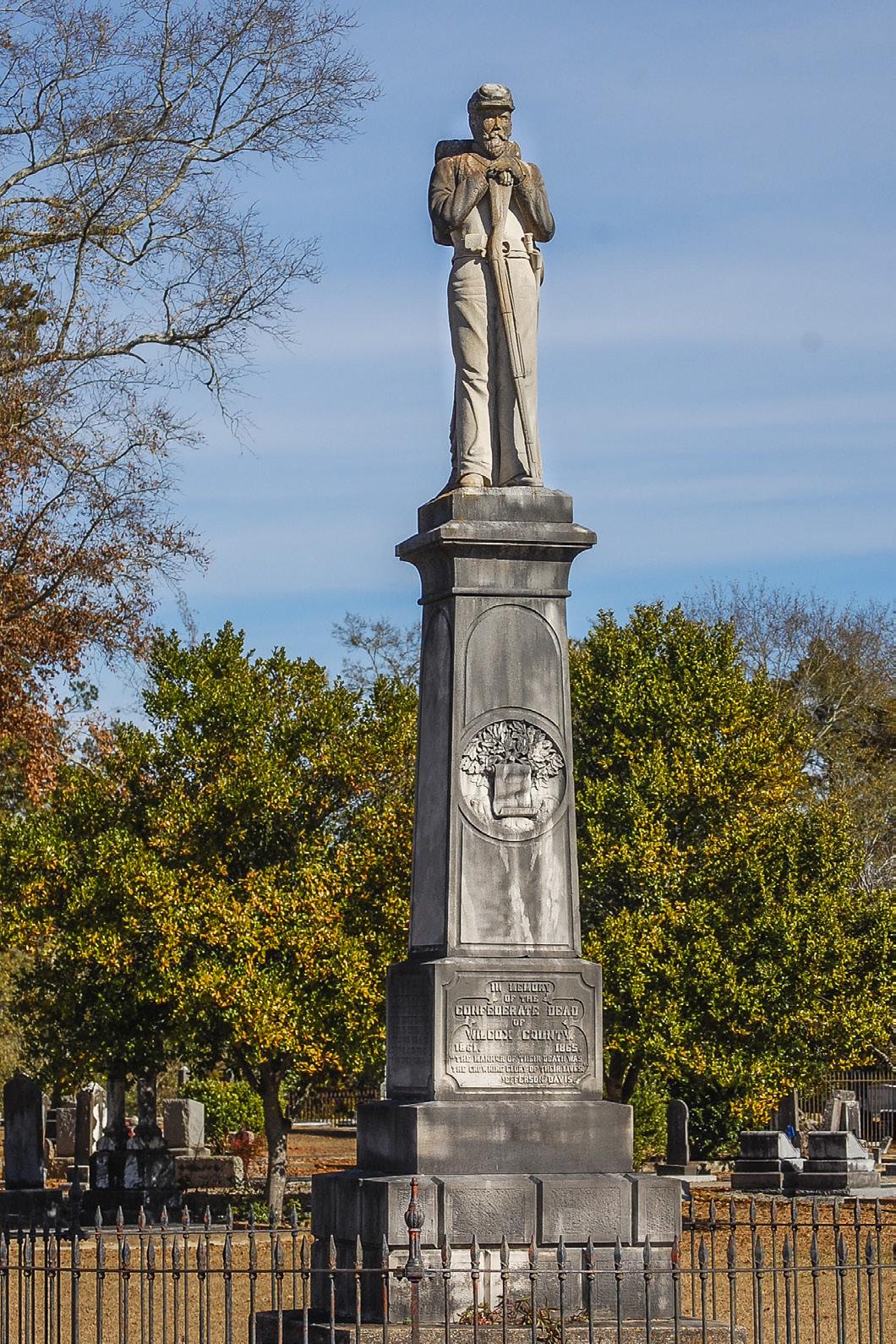
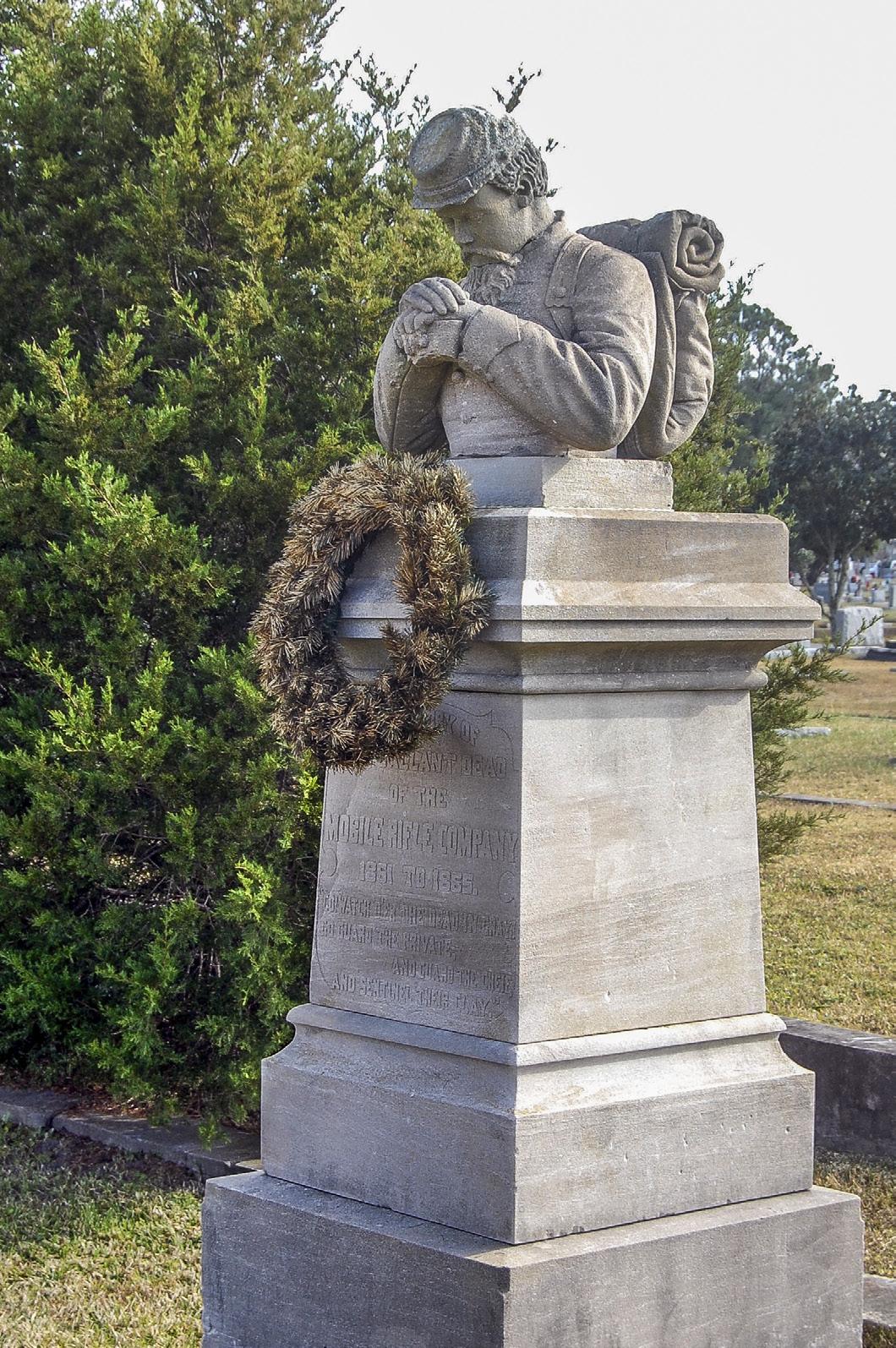
24 CivilWarNews.com March 2023 24 March 2023 CivilWarNews.com
Mobile.
Athens.
Camden.
(All photographs courtesy of the Alabama Department of Archives and History)
obvious. A close examination reveals that his hands are resting on the missing rifle’s butt.
The repurposing was done by the local camp of the Sons of Confederate Veterans.
Father Ryan’s “Sentinel Songs” is quoted again:
GO! WATCH O’ER THE DEAD IN GRAY!
GO GUARD THE PRIVATE, AND GUARD THE CHIEF, AND SENTINEL THEIR CLAY.
The northern Alabama town of Athens has two Confederate soldiers. The one pictured was originally standing on a column at the Limestone County Courthouse, erected in 1909. Soon, however, the mournful soldier was removed and replaced with a more typical soldier standing at rest. The original statue was moved to the Athens City Cemetery in 1912 by the local chapter of the United Daughters of the Confederacy. The soldier’s rifle is not reversed, but the message is nevertheless clear. The sad soldier looks down upon the
graves of 29 known and eight unknown Confederate dead.
In 2005 the local SCV camp erected the modern granite marker which lists the names and units of the known dead. The inscription reads:
IN MEMORY OF THE STRANGERS WHO IN THE BAPTISM OF OUR SOIL WITH THEIR HEROIC BLOOD HAVE HONORED US
Our last statue is in Savannah, Georgia, in Catholic Cemetery. Erected in 1910, it honors the men of the Irish Jasper Greens. The inscription reads:

IN MEMORY OF THE IRISH JASPER GREENS COS. A AND B FIRST VOL. REG. OF GEORGIA WHO DIED IN THE SERVICE OF THE CONFEDERATE STATES 1861-1865.
REQUIESCANT IN PACE.
The soldier is clearly standing at rest on arms reversed. I am told that in 1910 the rifle was placed muzzle down. Years ago, when I first photographed the statue, the rifle was MIA. Later, when the monument was restored, the brave Irish American volunteer was rearmed, but the rifle was installed muzzle up. Several months ago I showed a photograph of the restored statue to an audience which included a lady from Savannah. She told me there was a possibility that the rifle would be placed in its original, correct position. I have not visited Savannah since and do not know if this has been done.
Everyone who reads this column and views the accompanying images will be familiar with the Civil War’s terrible cost in terms of human life. More than a quarter of a million Confederate soldiers did not survive the conflict. When the memorials were built in Selma and Camden the wounds of war were still fresh, as evidenced by the physical forms chosen by the builders and the tone of the inscriptions graven on the stone. A generation later the loss was still deeply felt, as the statues in Athens and Savannah tell us. The replacement statue in Athens, however, is more typical of the memorials erected in the early years of the 20th century. As time passed and as wounds healed, the mournful aspect of Confederate monuments, though still present, was less emphasized.
*There are numerous examples, one of the oft-used quotes being “These were men whom power could not corrupt, death could not terrify, defeat could not dishonor.”
**It is a common misconception that all, or most, Confederate monuments of the soldier variety face north. They face every which-a-way.
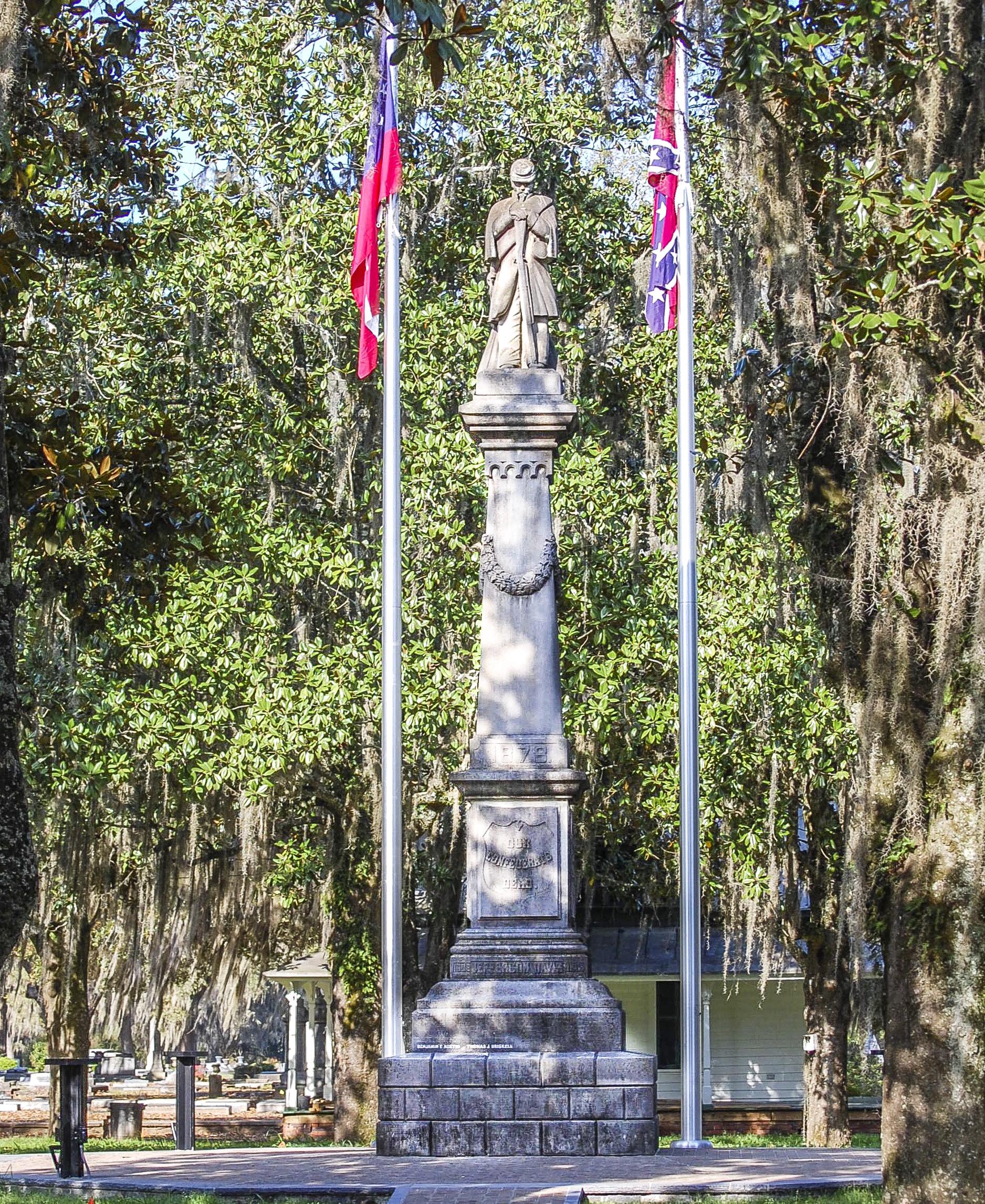
Gould Hagler is a retired lobbyist living in Dunwoody, Ga. He is a past president of the Atlanta Civil War Round Table and the author of Georgia’s Confederate Monuments: In Honor of a Fallen Nation, published by Mercer University Press in 2014. Hagler speaks frequently on this topic and others related to different aspects of the Civil War and has been a regular contributor to CWN since 2016. His email is: gould.hagler@gmail.com.
Waud Drawing, Funeral March
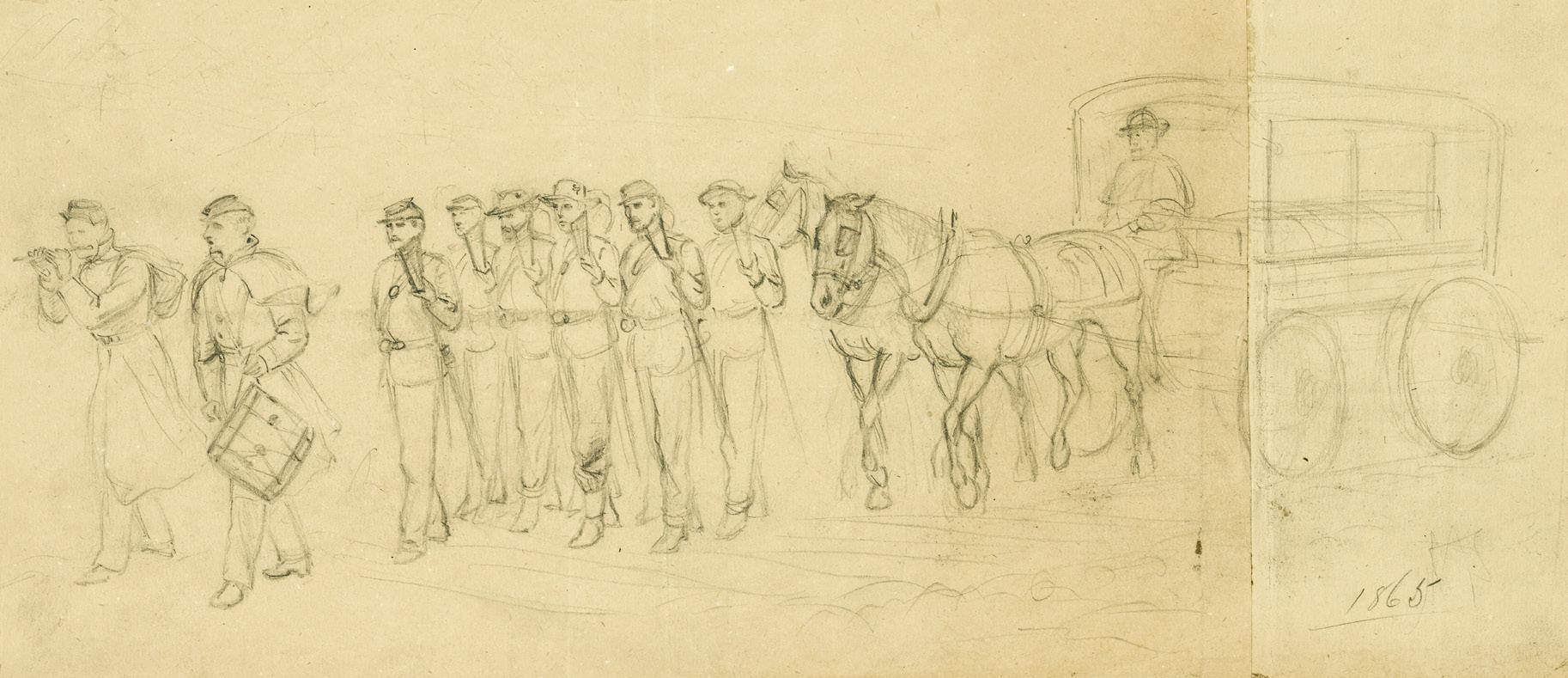
There is some confusion between the rest on arms reversed position and the reverse arms position. The former, as we have seen, relates to a soldier’s (or a statue’s) position while standing. The latter relates to the position of the rifle borne by a marching soldier. Both, obviously, connote mourning and respect for the fallen. Images of troops marching with arms reversed are not easy to find, but I did locate one from the Civil War by Alfred Waud.
And here is an excellent video on the subject: https://www.youtube.com/watch?v=-hq0V25pcyw. Selma.
25 March 2023 25 March 2023 CivilWarNews.com CivilWarNews.com
Savannah. (Photo by Gould Hagler)
Winslow Homer “The Sharpshooter”
The Graphic War highlights prints and printmakers from the Civil War discussing their meaning and the print maker or artist’s goals
American Winslow Homer is perhaps the most distinguishable artist of the 19th century. His late century paintings of postCivil War America are easily recognized as masterpieces of genre interpretations. They featured every day Americans quietly going about their lives throughout the last quarter of the century. Later in life he concentrated on the sea and its marvels and perils.
He began his artistic journey as an illustrator. He saw his first engraving published in Boston’s Ballou’s Pictorial Drawing-Room Companion in 1857. With the establishment of the new, brash Harper’s Weekly in New York City, and the decision by Ballou’s
to drop illustrated articles, Homer found himself, at the advent of the Civil War, working for the new and most popular weekly in America. He captured mid19th Century America through his work for both employers. His subjects were every day Americans going about their lives “riding, picnicking, and bathing in summer, in winter skating and sleighing.” As one author stated:
“the prevailing tone was less of sentiment than of innocent gaiety, with crowds of children giving the outings a family air.”1
With the onset of war, Homer became more than an illustrator; he was a “reporter” with the title of “artist-correspondent.”
Although he was still in his twenties and with little or no battlefield experience, he managed to insert himself into “the many facets” of the war and “still convey a remarkably broad picture of the” war “as it moved…year after year.” He managed to depict the human side of the war “recognizing the home front as well as the battlefield,
the hijinks along with the violence, and …sympathetic.”2 His range of topics included the frenetic interior scene entitled “The Great Russian Ball” to graphic illustrations of combat, “A Cavalry Charge,” and “A Bayonet Charge.”
Perhaps his most dramatic engraving came from his own painting. In what is often attributed as his first oil on canvas, Homer exhibited “The Sharpshooter,” a Berdan SharpShooter, in 1864. He had been working on it in 1862 when he produced an engraving of it for Harper’s Weekly. The engraving was entitled “The Army of the Potomac—A Sharpshooter on Picket Duty.” For one author, Homer’s step from “A Bayonet Charge” to the Sharpshooter “was a long step artistically.”3 Both versions of the subject include a solitary soldier, in a tree firing his long-sighted rifle toward an enemy soldier. It is unclear what type of rifle Homer was depicting in either version. Colonel Hiram Berdan’s 1st and
2nd Volunteer Sharpshooters were equipped with the Sharps New Model 1859 rifle. Berdan wanted to ensure that his men, who were especially outfitted in green uniforms to blend into the environment, had the most effective firepower available. Berdan requested that the “standard Sharps model with a few modifications” delivered to his men were to have “double ‘set’ triggers” with the elimination of the “spring loaded catch at the rear of the trigger guard plate that secured the combination trigger guard and lever in the closed position. The ‘set’ trigger involved a second trigger, the rear most, that could be pulled to take up the majority of the trigger pull weight, leaving a very light pull on the front trigger to fire the rifle. The lightweight pull of this ‘hair trigger’ added to the accuracy of the rifles in the hands of the trained marksmen.4
The November 15, 1862, wood engraving shows a sharpshooter in the trees taking aim at a faroff target. A canteen hangs off a branch and the soldier’s kepi sports an “A” indicating his company.

When Homer submitted his oil painting to the U. S. Sanitary Commission in Brooklyn in 1864, after the image had been engraved in Harper’s, he entitled it “Berdan Sharpshooter,” with subtle, minor changes. The painting shows the soldier in the
trees with much more foliage than the engraving. His company designation has been replaced by the diamond red badge of III Corps and the canteen has been deleted.
The subject matter of Homer’s engraving and oil painting created a moral dilemma for him. It was not unique to him as many saw the act of sharpshooting as unfair and unequal, secretive, and almost criminal. Some thirty years later, he revealed his uneasiness with the whole idea of a sniper, “I looked through one of their rifles once when they were in a peach orchard in front of Yorktown in April 1862. This is what I saw (here he sketched a person in the cross hairs of the Sharps Rifle)—not a soldier—but a camp follower & artist, the above impression struck me as being as near murder as anything I ever could think of in connection with the army & always had a horror of that branch of the service.”5
Despite his moral unease with the art, engraving and oil painting, “The Sharpshooter” remains one of Homer’s iconic works depicting the Civil War, and perhaps inadvertently, it’s horror and tragedy.
Endnotes:
1. Lloyd Goodrich, Winslow Homer’s America, New York, Tudor Publishing Co., 1969, 12.
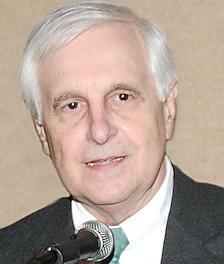
2. Philip c. Beam, Winslow Homer’s Magazine Engravings,

26 CivilWarNews.com March 2023 26 March 2023 CivilWarNews.com
Winslow Homer – A Sharpshooter on Picket Duty. (1976.125, Cleveland Museum of Art)
Winslow Homer, 19th century photograph. (Public domain)
New York, Harper Row, 1979, 13.
3. Barbara Gelman, The Wood Engravings of Winslow Homer, New York, bounty Books, 1969, x.
4. Tim Prince, https:// collegehillarsenal.com/berdansharpshooters-sharps-rifle
5. Winslow Homer letter to George C. Briggs, February 19, 1896 as cited in William R. Cross, Winslow Homer: American Passage, New York, Farrar, Straus, and Giroux, 2022, 87-88.
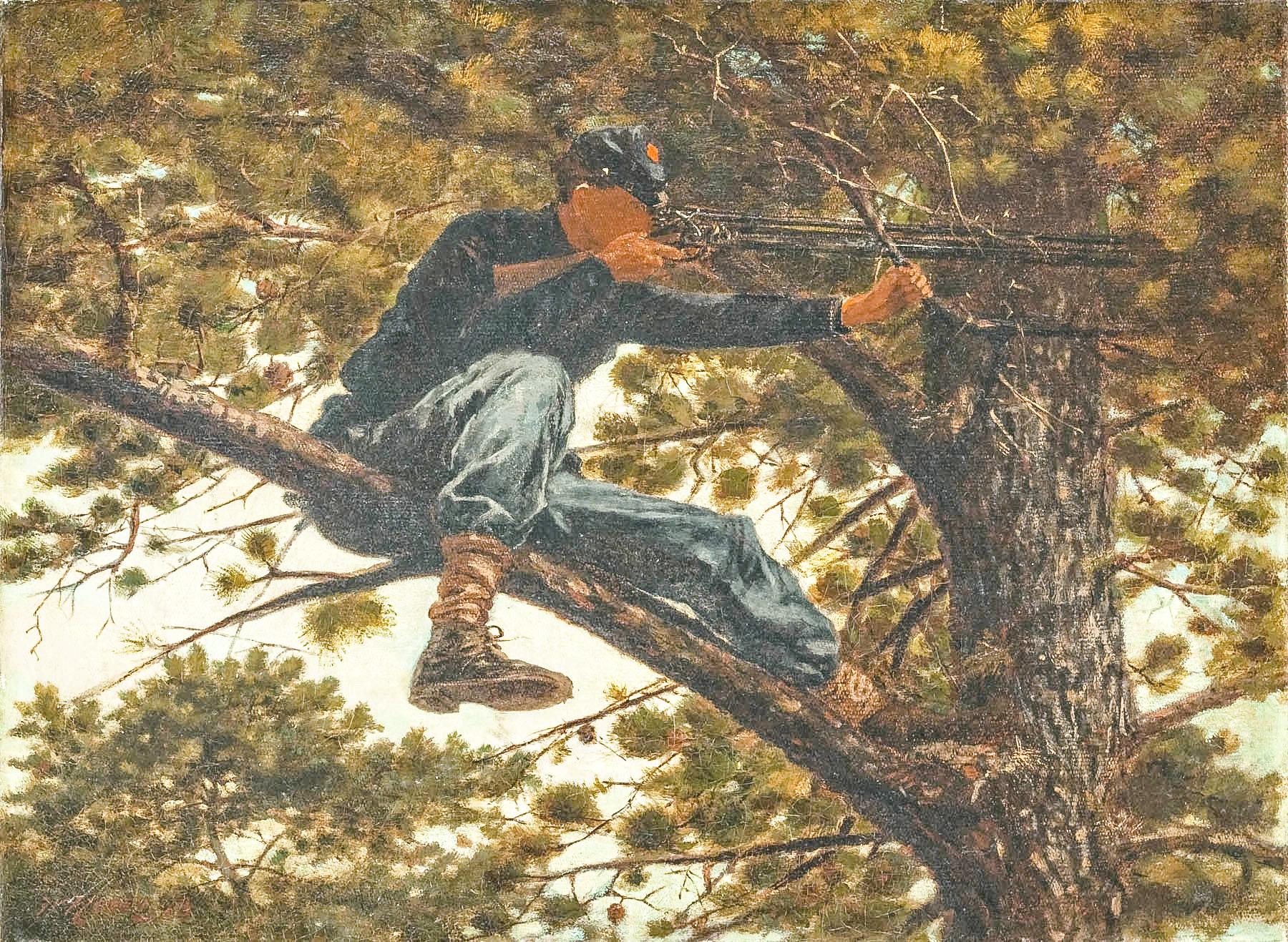
After 43 years in the museum field, Cilella devotes his time
collecting American prints and maps and writing. His most recent books are Upton’s Regulars: A History of the 121st New York Volunteers in the Civil War (U. Press Kansas, 2009). His two-volume Correspondence of Major General Emory
Upton, (U. of Tennessee Press, 2017), received the 2017–2018 American Civil War Museum’s Founders Award for outstanding editing of primary source materials. Upton’s love letters to his wife 1868-70, (Till Death Do Us Part) was published in

2020 by the Oklahoma University Press. His current book, the memoirs of Private Dewitt Clinton Beckwith of Upton’s Regulars for McFarland Press will be released this Spring.
Ulysses S. Grant

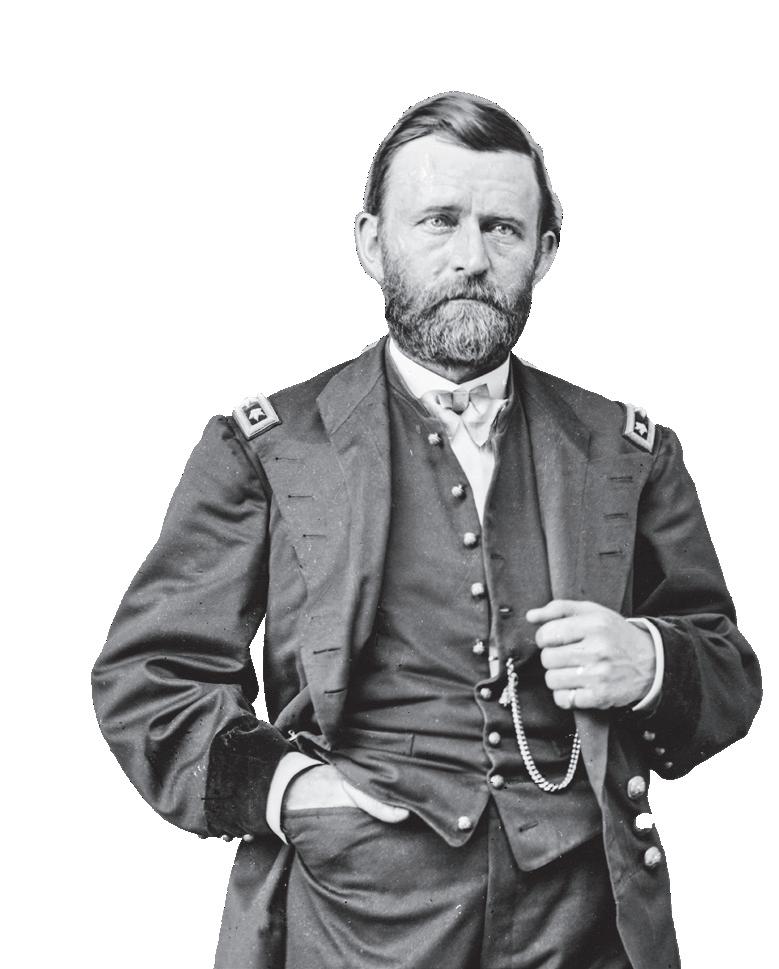
HQ: generalgrantbyhimself.com
E-Telegraph: curtfields@ generalgrantbyhimself.com
Portrayed by E.C. Fields Jr., Ph.D.
Signal Corps: (901) 496-6065
Facebook@ Curt Fields
Forth Worth Texas)
27 March 2023 27 March 2023 CivilWarNews.com CivilWarNews.com Learn more about our current efforts
Hallowed Ground. When you visit battlefields of the Revolutionary War, the War of 1812 and the Civil War, you are standing where history happened. With the help of our supporters and partners, the American Battlefield Trust has saved more than 55,000 acres at 150+ sites in 25 states — creating outdoor classrooms where the past can come alive. Join us and protect America’s past by saving these endangered battlefields. www.battlefields.org Chancellorsville Battlefield, Virginia. THERESA RASMUSSEN Subscribe or Renew Online at CivilWarNews.com
This is
Winslow Homer’s oil painting, “The Sharpshooter.” (Courtesy Amon Carter Museum of Art,
Georgia (“Little Washington,” as they call it), when Sherman’s Yankee hordes swept across Georgia in their march to the sea. Judge Garnett Andrews’ estate, “Haywood,” escaped the enemy’s path, but the invasion of her state, and the stories she heard about it, led Fanny to start writing a journal just before Christmas 1864.1 She kept at it, with daily entries running into August 1865. She didn’t intend it for print, but late
A Feisty Red-head Has Her Say
Biographers say that writing about individuals, telling the story of their lives, brings them so close to their subjects that the writers feel as if they are in their company.

(It is said that Dr. Freeman, while writing his biography of Lee in the 30’s, walked past the General’s famed statue on Monument Avenue, addressing it as “Good morning, General Lee” and “Good evening, General Lee.”) By this view, the writer not only follows the subject’s life, but almost shares it, absorbing its experiences, even making them his.
That’s not quite what happened between me and Frances Andrews, but it’s close.
I’ve had an edition of Eliza Frances Andrews’ The War-Time Journal of a Georgia Girl for years. I bought it, charming dust jacket and all, for $5.75 a long while ago. Like many of you, I found the recent pandemic quarantine a fine time—‘cause we had so much of it—to peruse my bookshelves for an old classic that I’d never made the opportunity to read. In so doing I entered the realm of a young Southern woman—an intelligent, lively conversationist with a sparkling wit and straightforward manner. In appearance she was of middling height, slender, and graceful in her movements. She was also a striking redhead, with a face full of freckles. In short, I’ve spent a couple of years with Fanny Andrews.

Born on a middle Georgia plantation in 1840, Frances— everyone called her “Fanny”— received a good education at the local girls’ school, then went on to graduate from a “female college” in 1857. Fanny was twenty-four, living at home in Washington,
in life she dusted off her pages, spiffed up the prose, and found a New York publisher.
The War-Time Journal of a Georgia Girl was first published in 1908. It was reprinted by Macon’s Ardivan Press in 1960, which is the edition I have; Mercer history professor Spencer Bidwell King, Jr., wrote a fine introduction.2 Since then it’s seen several paperback reprints, including one in 1997 from the University of Nebraska Press, with a foreword by Jean V. Berlin.
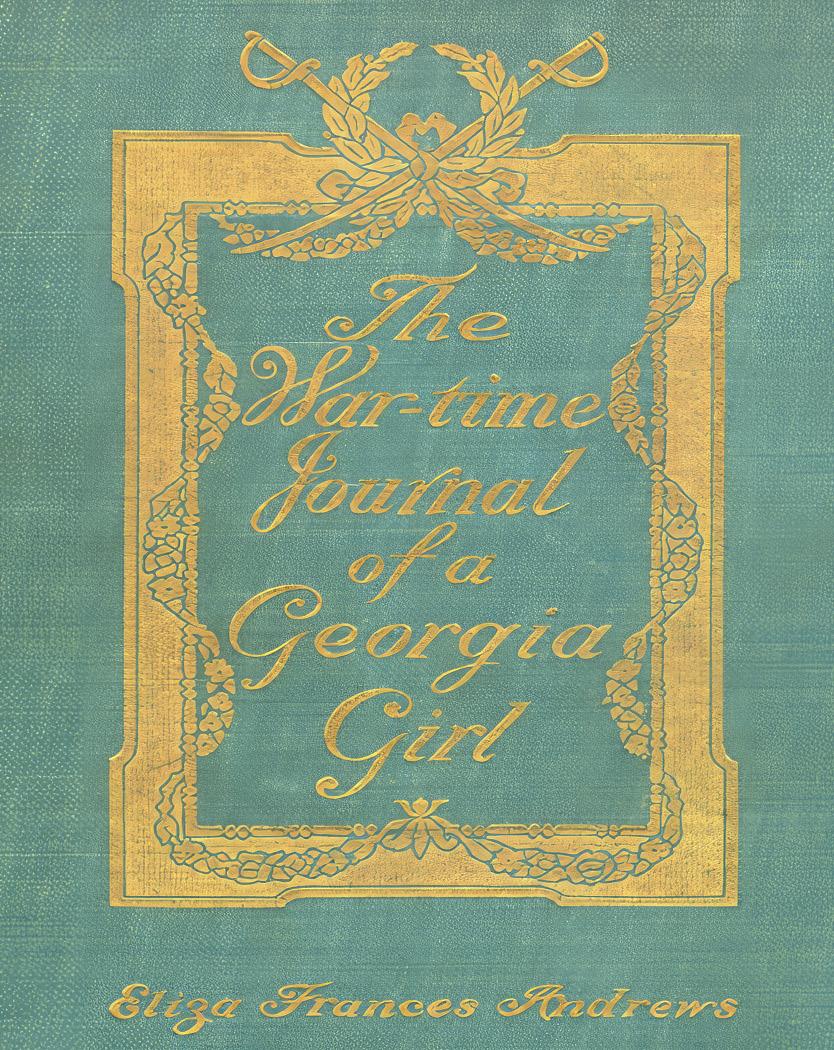
As she prepared her diary for print, Fanny made a point of not softening her expressions of wartime passion, including hateful words directed at Yankees. She unapologetically intended her journal to be “expressive of the animosities of the time,” which is one of the main reasons historians and scholars of Southern literature have so often been drawn to its colorful and often entertaining text.
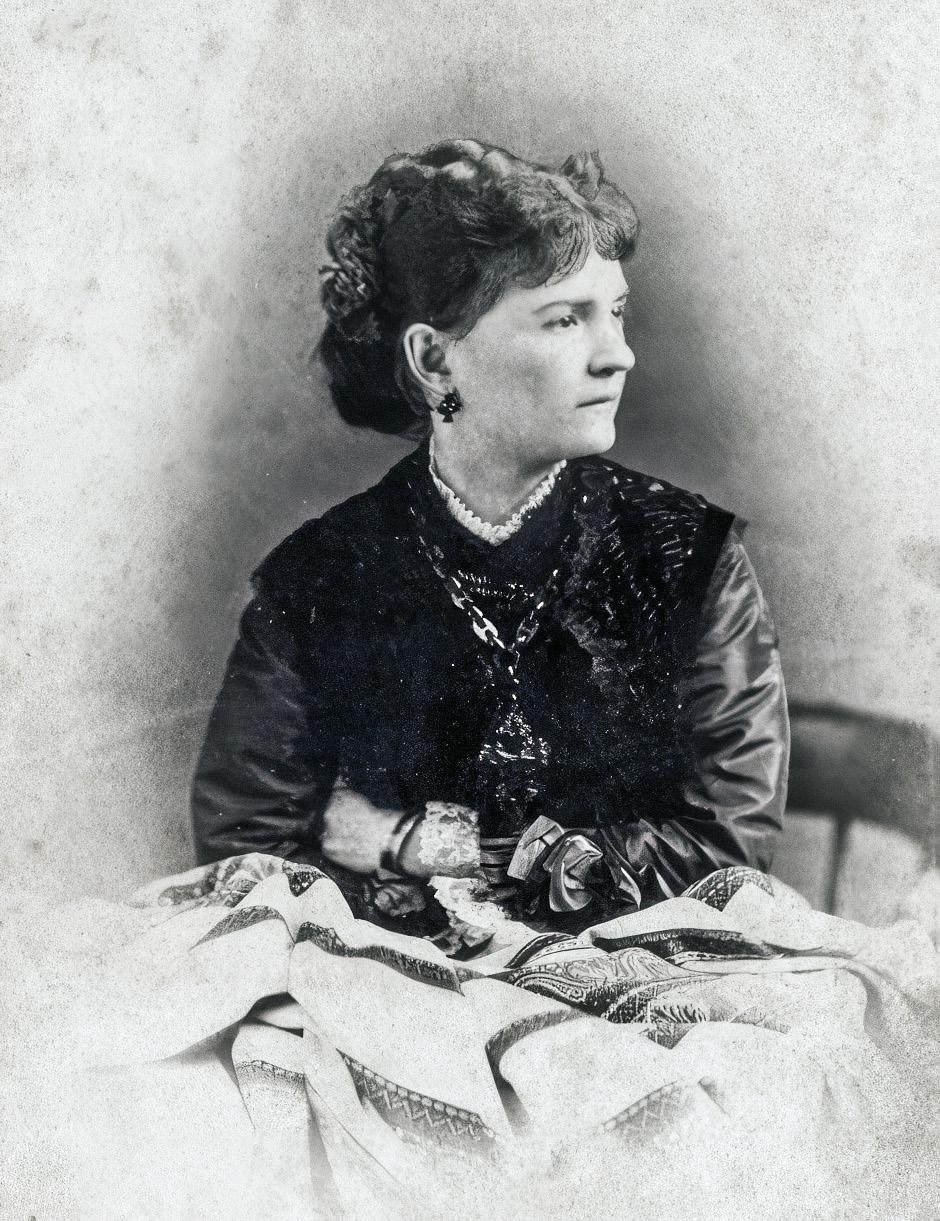
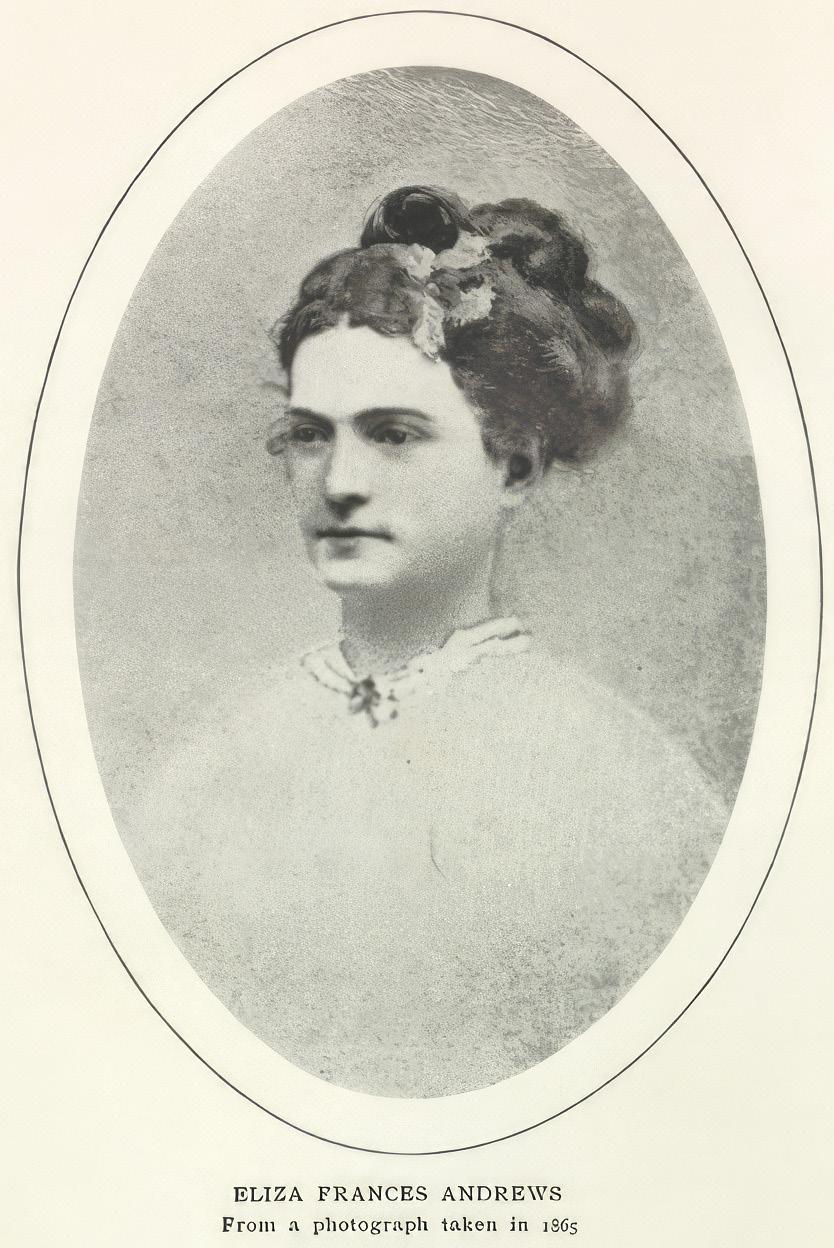
“I thank the Lord I am not a Yankee,” Fanny confided in another, shorter journal which she kept during 1870-72. Dr. Kitt Rushing, of the University of Tennessee, found this postbellum diary in her brother’s papers in Chattanooga as recently as 1998. He edited it and saw to its publication by the University of Tennessee Press in 2002.3
When I proposed a new edition of Andrews’ The War-Time Journal of a Georgia Girl, this time with a foreword and commentary by myself, Dr. Marc Jolley, Director of Mercer University Press, happily agreed. Our new volume (320 pages, hardcover) is just out. Among other pluses (as we see them), ours is the first work to combine portions of both Andrews’ wartime and postwar journals. Note portions: I chose those passages most expressive of Fanny’s Southern patriotism, wartime emotions, and dismay (often disgust) at Yankee ways,
which animated the feisty redhead into her last days. She was a Rebel to the end, and seemed not to care if she offended postwar readers with her commentary. This included her remarks on black folk, both the family servants and later as freed people. These have led to recent scholars, even Dr. Rushing, to term Andrews’ writing “racist.” I do not make this aspersion, and note in our book that the r-word was not even coined until 1928, finding common use in the mid1930s, just in time for Hitler’s Germany.4
Fanny Andrews seems never to have tired of writing about Yankees. Yankee, of course, dates from a much earlier time, when Dutchmen in New York disparagingly referred to Jankees. As Mencken points out, the word has since then been “a term of derision.” Yet Yankees eventually turned it into something they were proud of, such as “Yankee ingenuity.” But as Mencken further notes, “during the Civil War, as everyone knows, Yankee became a term of disparagement again, applied by the people of the South to all Northerners.”

A case in point is the tale from Father Abram Ryan, the Catholic priest-turned poet of the Lost Cause. One day he saw his young niece gazing upon a painting of Jesus’ crucifixion. He asked her if she knew of the infidels who had crucified her savior. “O yes I know,” she said, “the Yankees.”5 It was in this very vein that
Fanny Andrews wrote about them in her private diary. (My Northern friends will wince, but they will join me in remembering Donald Davidson’s reminder that we are “still Rebels, still Yankees.”6) In January 1865, for example, she wrote, “I used to feel very brave about Yankees, but since I have passed over Sherman’s track and seen what devastation they make, I am so afraid of them that I believe I should drop down dead if one of the wretches should come into my presence.” Indeed, it was the Yankees’ depredations against helpless Southern civilians that so enraged Miss Andrews. “Those dreadful Yankees” had left a poor woman without provisions; they had burned a village and left it “charred and black as Yankee hearts.”7
It was even worse when, after Appomattox, Yankee conquerors came to stay in Washington. They strode the streets as if owning them, showing discourtesy to every citizen. One, Fanny noted, walked by “without even touching his hat, as the most ignorant Confederate would have done.” She was not alone; friends avoided church “while such bitter hatred as they feel towards the Yankees have a place in their hearts.” When the Federal garrison in town came to include Black soldiers, Fanny thought that a race war loomed, “and we shall have only the Yankees to thank for it.”
Her father, Garnett, had been a Unionist just before the war
28 CivilWarNews.com March 2023 28 March 2023 CivilWarNews.com
The War-Time Journal of a Georgia Girl, published in 1908.
Eliza Frances Andrews. Courtesy of University of Tennessee at Chattanooga Lupton Library Special Collections.
I Thank the Lord I Am Not a Yankee, published January 2023.
who had opposed secession. In talking with him Fanny worked at being considerate. Once, after such a conversation, she confided privately,
I would have done justice to Yankee virtues, if they had had any, but since that infamous march of Sherman’s and their insolence in bringing negro soldiers among us, my feelings are so changed that the most rabid secession talkers, who used to disgust me, are the only ones that satisfy me now.8
Today’s idiom is “C’mon, Fanny, and tell us what you really think,” but we don’t have to coax her.
Yankee, Yankee, is the most detestable word always ringing in Southern ears. If all the words of hatred in every language under heaven were lumped together into one huge epithet of detestation, they could not tell how I hate Yankees….I used to have some Christian feelings towards Yankees, but now that they have invaded our country and killed so many of our men and desecrated so many homes, I can’t believe that when Christ said “Love your enemies,” he meant Yankees.9
One afternoon Fanny and a friend were taking a walk downtown when “two drunken Yankees ran across the street at Mary and me and almost knocked us down, whooping and yelling with all their might.” “And the Yankees pretend to be a civilized people!” she exclaimed.
“It is sad to think how things are changing. In another generation or two, this beautiful country of ours will have lost its distinctive civilization and become no better than a nation of Yankee shopkeepers.”10
Alas, it was into the den of these very Yankee shopkeepers that Fanny ventured in the summer of 1865 after a Northern relative had invited her up for a visit. It didn’t take long at Cousin Lilla’s house for her to notice that “Yankee ideas of hospitality are very different,” she observed. “There is a primness about a Yankee house, that keeps me in constant terror lest I should put something out of order….The Yankee way is much more economical and orderly than ours—but I can’t help liking ours best.” Even the way they talked caused cringes: “I cannot get over my horror of that abominable lingo
that all these Yankees have—it sounds so coarse, so unrefined.”
“The more we see of Yankee society, the less we like it,” our diarist confessed. One afternoon Lilla led a carriage ride through Newark, and all she could talk about in pointing out the big mansions was how their owners had made their money. “They all belong to merchants or manufacturers,” sniffed our diarist, who commented that in the South men distinguished themselves as planters or soldiers. “Almost everyone of the elegant residences that have been pointed out to me,” she sniffed, “are owned by people who have grown suddenly rich by the manufacture of shoe pegs, trunk straps, or some contemptible little thing of that sort.”
A Yankee manufacturing town like Newark is certainly not the place that one would choose for its society. Give me a thousand times over, our elegant Southerners, with their poor old dilapidated homes. I would rather today, marry a poverty stricken Southerner without a home, than be mistress of one of these splendid establishments with a miserable plebeian who knows nothing beyond the shoe peg and tape business, for its master. It is people, and not their surroundings, that make society.
“I thank the Lord I am not a Yankee,” she entered in her journal that September, after having gotten more than a taste of her cousin’s lifestyle.11
When Fanny returned to Washington, she turned to occasional writing. Perhaps it was the disciplined composition of her journal that led Frances to reckon that she had a knack for it— cacoethes scribendi, as they used to call it, the knack for writing, or maybe the urge to. Either way, in as early as February ’65 she wrote about “the career I have marked out for myself,” meaning that of writing, and affirmed that her pursuit of it would leave no time for marriage. She was so determined to succeed that in June 1865 she declined to sign a friend’s photograph book until she had become a “celebrated female.”12
Back then, there weren’t many vocational paths open to women, teaching being among the most common. Andrews, though, didn’t like the idea of being stuck with “a black-board and twenty stupid children.” But women novelists could write and sell their writing, even if it were under a pseudonym.
Fanny’s was “Elzey Hay”: Elzey came from the name of a family friend, Confederate general Arnold Elzey, and Hay, probably taken from the name of the family home.
She scored her first hit with an article for the New York World that appeared on August 21, 1865. Others followed, including one titled “Dress Under Difficulties,” about Southern women’s efforts to look fashionable even amidst wartime shortages of sartorial finery. The essay appeared in Godey’s Lady’s Book, the popular women’s magazine published in Philadelphia.
There were outlets closer to home, though, and one was Scott’s Monthly Magazine. Founded in Atlanta shortly after the end of the war, the monthly featured pieces on war history, short fiction and items of general interest. Between spring 1866 and fall of ’69, Scott’s carried eight articles by Elzey Hay. It was Scott’s that first let the cat out of the bag as to its contributor’s identity, when one volume’s index listed a piece, “In Fashion and Out of Fashion,” by “Miss Fannie Andrews.” By 1872, it was pretty well known in the American literary world that “Elzey Hay” was Frances Andrews. She explained the reasons for her several years of anonymity in an article at the time.
“The great beauty of anonymous writing is to protect one against the bores and the other annoyances of a small reputation, till one can claim the advantages of a great one,” she declared. In truth, Frances Andrews probably did not possess a “great” reputation; but as a young single woman of thirtysomething years, she had reason to be pleased with what she had accomplished so far.13
One of the features of our I Thank the Lord I am Not a Yankee is that we have collected all eight of Miss Andrews’ pieces appearing in Scott’s (from extant issues at the Atlanta History Center), and reprinted them. So far as we know, this is the first time they have been published together.
At work on novels during this time, Frances had her first, A Family Secret, published in 1876. Several more followed, during which years she nurtured a keen interest in botany. She wrote several texts on the subject, as well as articles for scientific journals. As another bonus in our book we reprint “Botany as a Recreation for Invalids,” in which she relates how, after ill health sent her for a long sojourn in Florida, she hunted and collected lots of local flora, all the while cuing readers how easy it would be for them, too.14
For years Miss Andrews taught French and literature at Wesleyan
Female College in Macon, Georgia, and lived out her days, purposefully having never married, in Rome, Georgia. She departed this life in December 1931, and is buried in Washington’s Resthaven Cemetery.15
I recently gave a presentation to the Washington Civil War Round Table, and thought of getting into town a little early to pay a visit to Resthaven. But I didn’t, as I wondered what I would say to her at her gravesite that I had not already said to her during the time we’ve been together.
I’m an old Rock ‘n’ Roller, so I’ll close with lyrics from The Band’s song, “The Weight,” Robbie Robertson’s hit on Music from Big Pink (1968):
Catch a cannon ball now to take me down the line My bag is sinkin’ low and I do believe it’s time To get back to Miss Fanny, you know she’s the only one Who sent me here with her regards for everyone
Yep, it’s time to get back to Miss Fanny. For those seeking to join me, I heartily recommend The War-Time Journal of a Georgia Girl.
Notes
1. Barbara B. Reitt, “Eliza Frances Andrews” in Kenneth Coleman and Stephen Charles Gurr, eds., Dictionary of Georgia Biography, 2 vols. (Athens: University of Georgia Press, 1983), vol. 1, 29-31.
2. Eliza Frances Andrews, The War-Time Journal of a Georgia Girl 1864–1865, ed. by Spencer Bidwell King, Jr. (Macon: Ardivan Press, 1960).
3. Eliza Frances Andrews, Journal of a Georgia Woman 1870–1872, ed. by S. Kittrell Rushing (Knoxville:
University of Tennessee Press, 2002).

4. Stephen Davis, ed., I Thank the Lord I Am Not a Yankee: Selections from Fanny Andrews’s Wartime and Postwar Journals (Macon: Mercer University Press, 2023), 283 n.
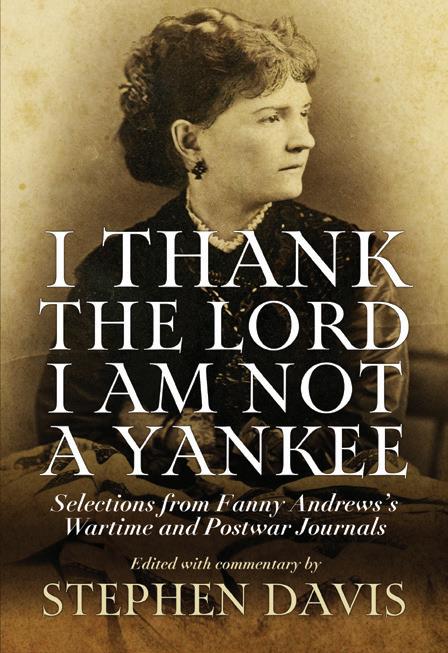
5. Stephen Davis, What the Yankees Did to Us: Sherman’s Bombardment and Wrecking of Atlanta (Macon: Mercer University Press, 2012), xvii.
6. Donald Davidson, Still Rebels Still Yankees and Other Essays (Baton Rouge: Louisiana State University Press, 1972 [1957]).
7. I Thank the Lord I Am Not a Yankee, 12, 14, 29.
8. Ibid., 123, 147, 159-60.
9. Ibid., 31-32, 59.
10. Ibid., 173, 175.
11. Ibid., 284, 288-90, 292-93, 295, 304.
12. Ibid., viii-ix.
13. Ibid., 184-85, 187, 305; [Mary T. Tardy], The Living Female Writers of the South (Philadelphia: Claxton, Remsen & Haffelfinger, 1872), 216.
14. Ibid., 305-309; Charlotte A. Ford, “Eliza Frances Andrews, Practical Botanist, 1840-–931,” Georgia Historical Quarterly, vol. 70, no. 1 (Spring 1986), 63-80; Miss E. F. Andrews, “Botany as a Recreation for Invalids,” Popular Science Monthly, vol. 28 (April 1886), 779-81.
15. Charlotte A. Ford, “Eliza Frances Andrews: A Fruitful Life of Toil,” Georgia Historical Quarterly, vol. 89, no. 1 (Spring 2005), 25-56.
Steve Davis’ ruminations on General Lee, “Why Robert E. Lee Still Matters,” which appeared in our January issue, are now posted on the website of the Abbeville Institute.
Edited
February
29 March 2023 29 March 2023 CivilWarNews.com CivilWarNews.com
Eliza Frances Andrews (1840–1931) received a strong education and was a successful writer and educator. Her War-Time Journal of a Georgia Girl surely ranks among the most observant and intelligent wartime memoirs by a Southern woman.
with commentary by Stephen Davis, I Thank the Lord I Am Not a Yankee includes selections of her wartime and postwar journals which are most expressive of her Confederate patriotism and Southern pride.
“I Thank the Lord I Am Not a Yankee...”
toll-free www.mupress.org
2023 • $35.00, hardback Stephen Davis is author of ten books on the Civil War, most of which treat the Atlanta Campaign. His two recent volumes on Confederate General John Bell Hood have won several prizes, including the Fletcher Pratt Award of the New York CWRT.
www.mupress.org 866-895-1472
www.emergingcivilwar.com
From the Editor
I frequently describe myself as a “Stonewall Jackson fanboy.” People who know me find it amusing, but I wonder how people who don’t know me take it.
Dead Confederate generals are well out of fashion these days. Most people don’t bother with nuances and assume the word “Confederate” equals “Lost Cause.” The terms aren’t interchangeable, but that conflation is an unfortunate part of the Lost Cause’s legacy. It has made all things Confederate almost radioactive these days. In fact, I’ve seen that radioactivity spill over to the Civil War writ large, where people think it’s all a bad thing to be interested in.
I prefer to think in terms once laid out for me by my friend John Coski, historian at the former Museum of the Confederacy: there’s a difference between the

study of the Confederacy and the reverence of it. The former is important if we want a fuller understanding of our own history; the latter inhibits and clouds understanding.
This all came to mind for me the weekend of Jackson’s 199th birthday. Also, I recently spent time in New Orleans tracking down a pair of Stonewall Jackson monuments in two of the city’s historic cemeteries. New Orleans, a place Jackson never visited, is the only location that still has two Jackson statues on display.
I have a fondness for Jackson because he was my gateway into the Civil War. When I first met him, I had my eyes clouded by magnolias and moonlight. In the two-plus decades since, I’ve come to appreciate what a truly human man he was, filled with inconsistencies, successes and failures, and crazy quirks (and not just the stereotypical lemon sucking). He had a mixed record as a commander, and the cause he fought for was deeply flawed, but he was unwavering in his affection to his family and his devotion to God and duty as he understood it, perhaps too rigidly at times, it seems to me.
There’s an old saying that you should never meet your heroes, and that would be true for me and Stonewall. He doesn’t strike me as someone I’d want to have a beer with, especially since he didn’t drink. But I’ve found a lot to admire about him and a lot to learn from him. I acknowledge his faults and imperfections and even embrace them with humor. Most importantly, there remains for me that sentimental attachment one has for all old friends, even after life has taken them on different roads.
That is what it means to me to be a Stonewall Jackson fanboy.
— Chris Mackowski, Ph.D. Editor-in-Chief, Emerging Civil War
Ninth Annual Emerging Civil War Symposium at Stevenson Ridge
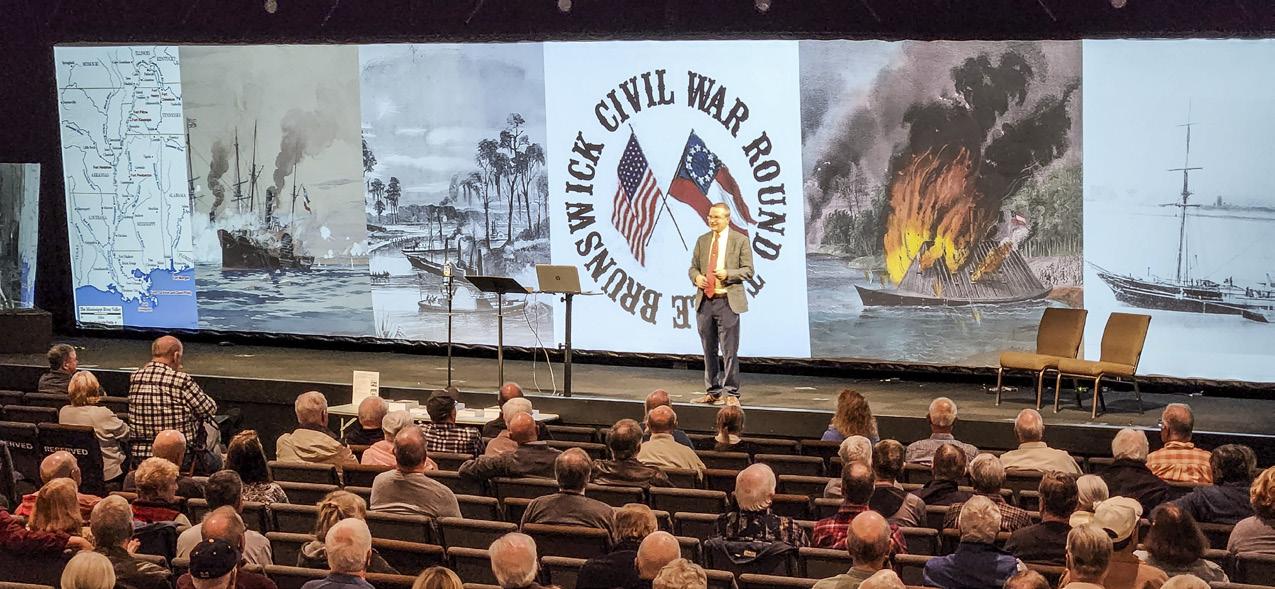

If you’re thinking about attending the 2023 Emerging Civil War Symposium, don’t delay getting your tickets! We anticipate selling out by the
spring.
This year’s Symposium will focus on “1863: The Great Task Before Us,” touching on a variety of military history topics in our programs and tours. Follow the Symposium Spotlight blog posts on Wednesdays as we announce the speaker panel and other exciting details. More details, and a link to order tickets, are on the website.
Join us on August 4-6, 2023, at Stevenson Ridge in Spotsylvania, Va., for an in-person weekend of history, discussion, and camaraderie!
ECW News & Notes
Sarah Kay Bierle enjoyed starting 2023 by hiking Second Manassas Battlefield on the 2nd day of January!
Neil Chatelain was busy over the winter break from classes with a Christmas trip to New Orleans to see family and do lots of research and writing. He had a blast speaking about his book Defending the Arteries of Rebellion at the Brunswick, N.C., Civil War Round Table on January 3. It was a wonderful group that had over 300 in attendance!
Stephen Davis’s new book is just out: I Thank the Lord I Am Not a Yankee: Selections from Fanny Andrews’s Wartime and Postwar Journals (Mercer University Press, 334 pages, $35 hardback). It’s a new edition of Andrews’ The War-time Journal of a Georgia Girl (1908) and her postwar diary (2002); rather, excerpts from both books, chosen by Steve as most expressive of her Confederate patriotism, Southern pride (even in defeat), and continued excoriation of Yankees.
Bert Dunkerly has been working with Appomattox Court House Historian Patrick Schroeder to edit Chris Calkins’ The Battles of Appomattox Station and Appomattox Court House (originally published in 1987). The book has been updated and has new maps and photos. Savas will be releasing it this spring.
Phill Greenwalt writes from the Caribbean: “Off my right shoulder, where the cannon is

pointing, is the island of St. Eustatius (Sint-Eustatius). On November 16, 1776, in response to the United States vessel Andrew Doria firing a salute, the governor of the Dutch island, Johannes de Graaff, ordered a reply salute fired by guns of the island’s defenses. This was the first salute given to an American vessel and flag following the Declaration of Independence signed that summer in Philadelphia. President Franklin D. Roosevelt presented a plaque to the island in 1939. Some cool American history in the warm Caribbean.”
Meg Groeling’s neighborhood has been hit hard by the heavy California rains. She says: “Still paddling.” Steward Henderson
gave a Martin Luther King Day presentation at Jubilation in Fredericksburg, Va., on Monday evening: “African Americans in the Civil War: Predecessors to Dr. Martin Luther King Jr.” About 50 of their residents attended. Jubilation by the Silver Companies is a seniors’ luxury community. In February, he will present the “United States Colored Troops in the Overland Campaign” for the Chambersburg Civil War Seminars as part of a line-up that also includes ECW’s Dan Davis, Chris Mackowski, and Kris White, among others.
Pat Kelly-Fischer is looking forward to finally meeting some ECW folks in person in February, and taking advantage of being on the East Coast to visit the Monocacy and Antietam battlefields for the first time.

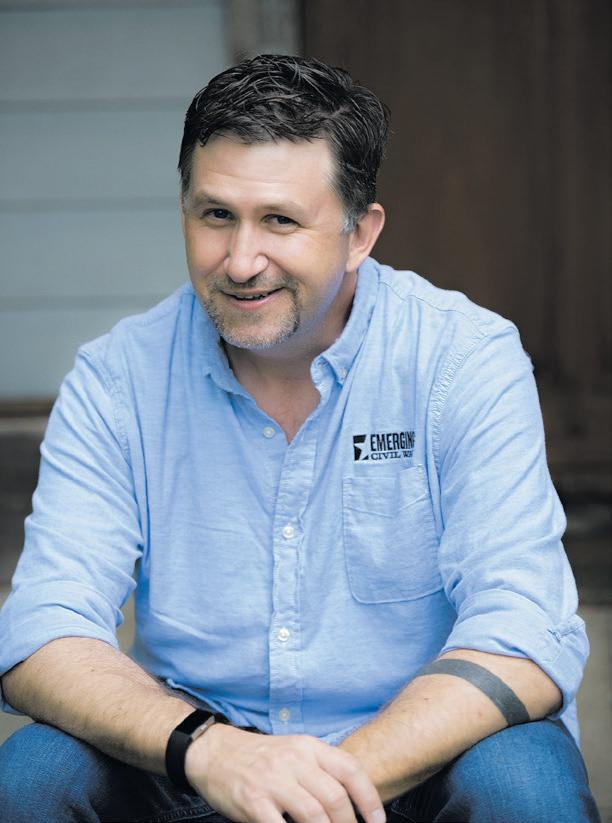
From Frank Jastrzembski and his work with Shrouded Veterans:
“Government-issued veteran headstones for Colonels George W. Gowen and John W. Kester recently arrived at St. Luke’s Episcopal Churchyard in Germantown, Penn. Gowen was killed at Petersburg, Va., in 1865. Kester died at the Friends Asylum in Philadelphia. Both markers will be installed this spring.
“Two projects need support:
“First, Colonel Semyour Tredwell Moore’s veteran headstone arrived at Wooster Cemetery in Wooster, Ohio, but the cemetery won’t install it until the $216 foundation fee is paid. You can send an email to fjastrzembski10@jcu.edu if you’re interested in donating to help cover the expense.
“Second, there’s an ongoing project to mark the grave of Brigadier General Jean Napoleon Zerman’s grave in Colma, Calif. His wife and grandfather will also be honored on the custom marker. You can read about Zerman’s fascinating life as a soldier of fortune and donate to this cause
30 CivilWarNews.com March 2023 30 March 2023 CivilWarNews.com
Chris Mackowski
Phill Greenwalt found Revolutionary War history in the Caribbean.
A bust of Stonewall Jackson adorns the side of a Confederate monument in New Orleans’s Greenwood Cemetery.
Kris White, Garry Adelman, and Chris Mackowski made a cameo daytime appearance on Bourbon Street as part of a video project for the American Battlefield Trust.
Neil Chatelain defends the arteries of rebellion for the Brunswick (NC) Civil War Roundtable.
by visiting the GoFundMe page at the link below: https://www. gofundme.com/f/jean-napoleonzerman-headstone-fund.”
Chris Kolakowski has appeared several times on the podcast Vanguard: Indo-Pacific, the official podcast of the Consortium of Indo-Pacific Researchers (most recently Episodes 10 & 11): https://anchor.fm/vanguardindo-pacific/episodes/Episode11-Lessons-from-World-War-IIin-the-Philippines-e1tdma9/aa95un6q.
Also, the Wisconsin Veterans Museum is partnering with the CWRT of Central Louisiana on a monthly series called Wisconsin Wednesdays, covering a variety of topics related to the Badger State in the Civil War. These happen on the 3rd Wednesday of each month. Check out the CWRT’s Facebook page for details: https://www.facebook. com/groups/245132430424589.
Chris Mackowski, Kris White, and Garry Adelman visited New Orleans in early January to film a virtual field trip for the American Battlefield Trust. Aimed at middle- and high-school students, the virtual field trip is intended to tell the city’s story through expert interviews and visits to its most famous and most historic sites. Kris is the project coordinator and Chris, the on-air host. The trip included a visit to Jackson Square, special access at the historic Cabildo, a walk through the French Quarter, a tromp across the Chalmette battlefield where the Battle of New Orleans took place, a riverboat cruise down the Mississippi, gumbo at the New Orleans School of Cooking, beignets at Café Du Monde, explorations of historic “cities of the dead,” live jazz, a behindthe-scenes visit to Confederate Memorial hall, and a tour the National World War II Museum. Because it’s a field trip for school students, Kris, Chris, and Garry confined their Bourbon Street visit to the daytime (pictured).
ECW Bookshelf
Hot off the press: Grant at 200: Reconsidering the Life and Legacy of Ulysses S. Grant, coedited by Chris Mackowski and Frank J. Scaturro, published by Savas Beatie. https://www.savasbeatie.com/ grant-at-200-reconsidering-thelife-and-legacy-of-ulysses-sgrant.
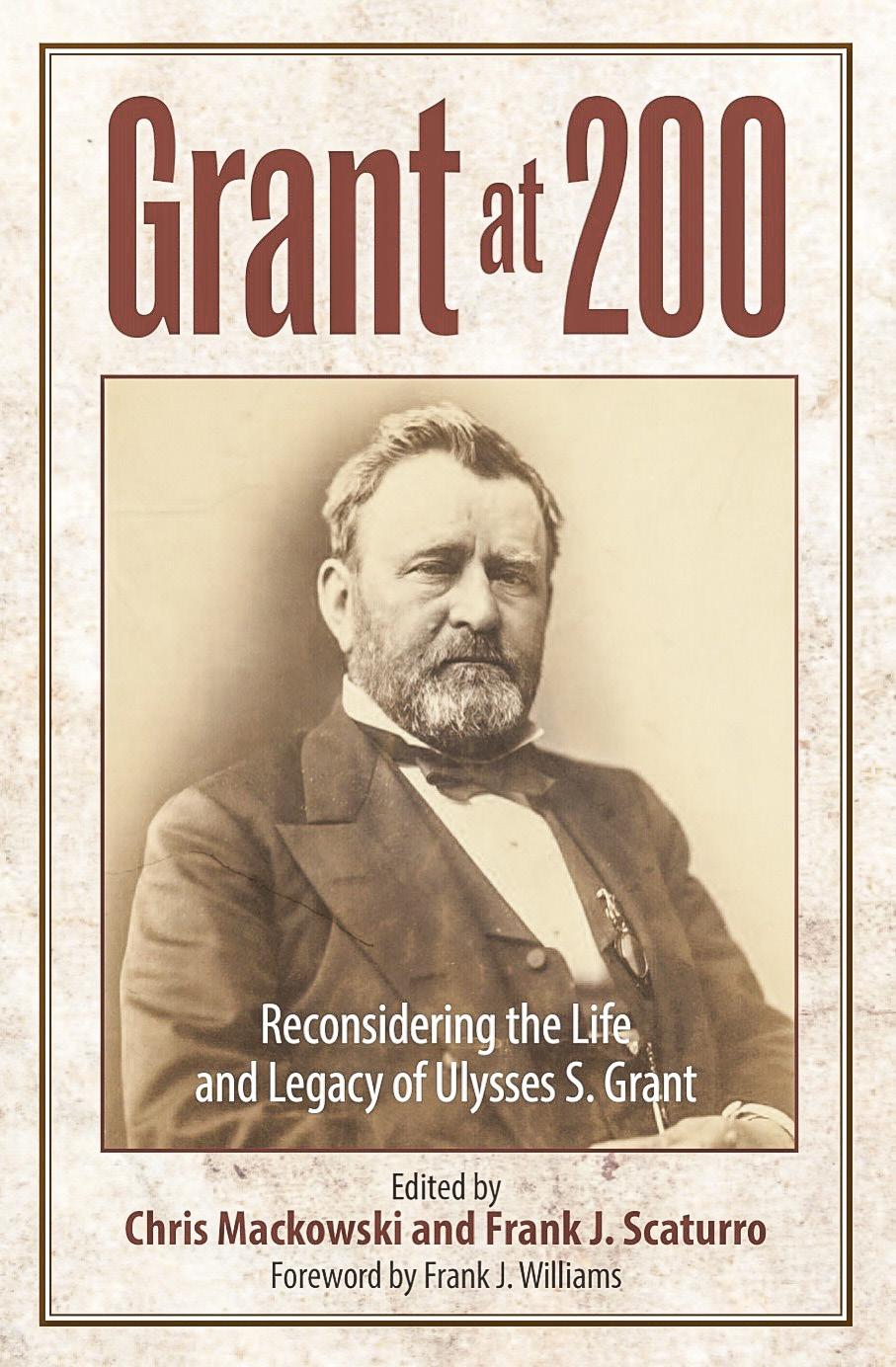
“This is one of the coolest projects I’ve ever been able to work on,” Chris says. “It not only features essays by an A-list of Grant scholars, but we actually have contributions from all six living U.S. presidents.”
Grant at 200 celebrates the bicentennial of the birth of a man whose towering impact on American history has often been overshadowed and in many cases, ignored. This collection of essays by some of today’s leading Grant scholars offers fresh perspectives on Grant’s military career and presidency, as well as underexplored personal topics such as his faith and his family life.
Contributors:
Charles W. Calhoun
Ulysses Grant Dietz
Alvin S. Felzenberg
Curt Fields
Gary W. Gallagher
Ben Kemp
Chris Mackowski
John F. Marszalek
Nicholas W. Sacco
Frank J. Scaturro
Ryan P. Semmes
Timothy B. Smith
Joan Waugh
Ronald C. White
Frank J. Williams
ECW Multimedia
On the Emerging Civil War Podcast in January:
• ECW historians Chris Mackowski and Kris White talked about the impact of the Emancipation Proclamation on its 160th anniversary.
• ECW’s new chief historian, Cecily Nelson Zander, shared her goals for her new position in a wideranging conversation that also touched on the role of women in history and the value of public history for understanding the Civil War.
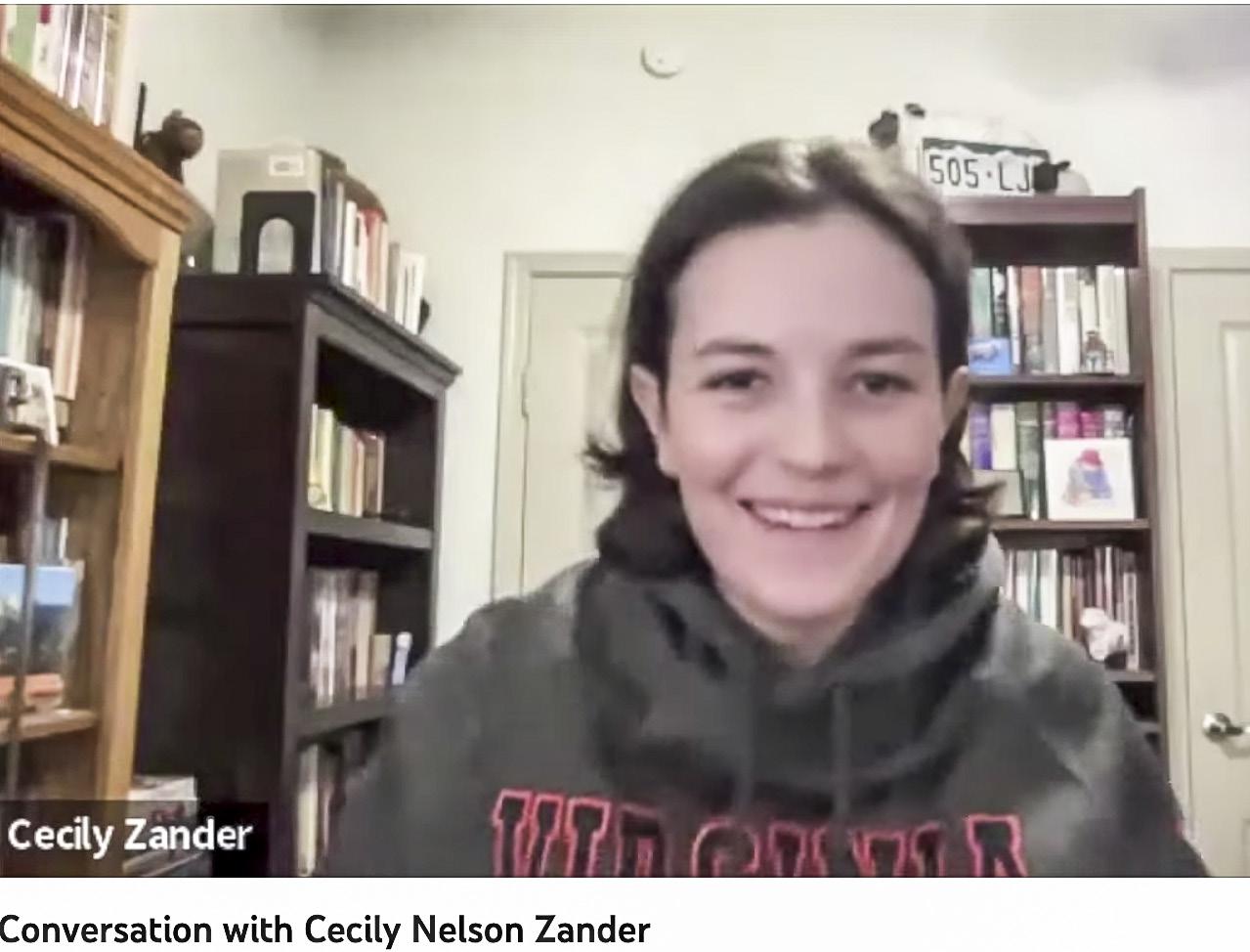
The Emerging Civil War Podcast is available through Spotify, Apple Podcasts, and wherever fine podcasts are available. You can also subscribe to our podcast through Patreon (https://www.patreon.com/ emergingcivilwar), where we are now also offering exclusive bonus content for subscribers. That’s just $3.99/month, and proceeds go toward defraying the production costs of the podcast.
In January, for Patreon-only content, we featured a talk Chris Mackowski gave at Grant Cottage about Ulysses S. Grant as a writer.
Civil War Artillery Book
392 page, full-color book, Civil War Artillery Projectiles – The Half Shell Book. For more information and how to order visit the website www. ArtillerymanMagazine.com or call 800-777-1862.
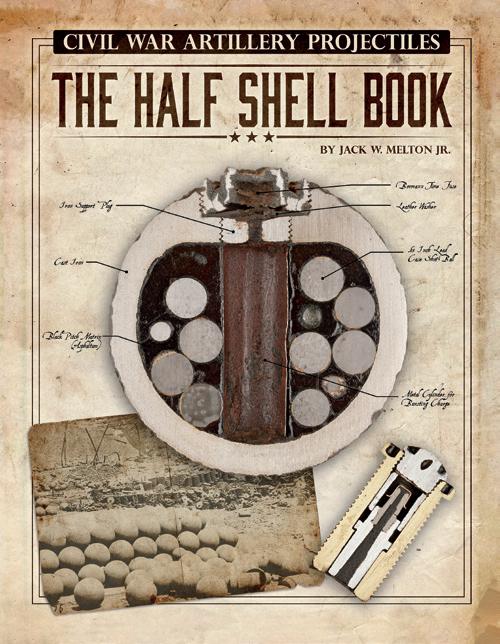
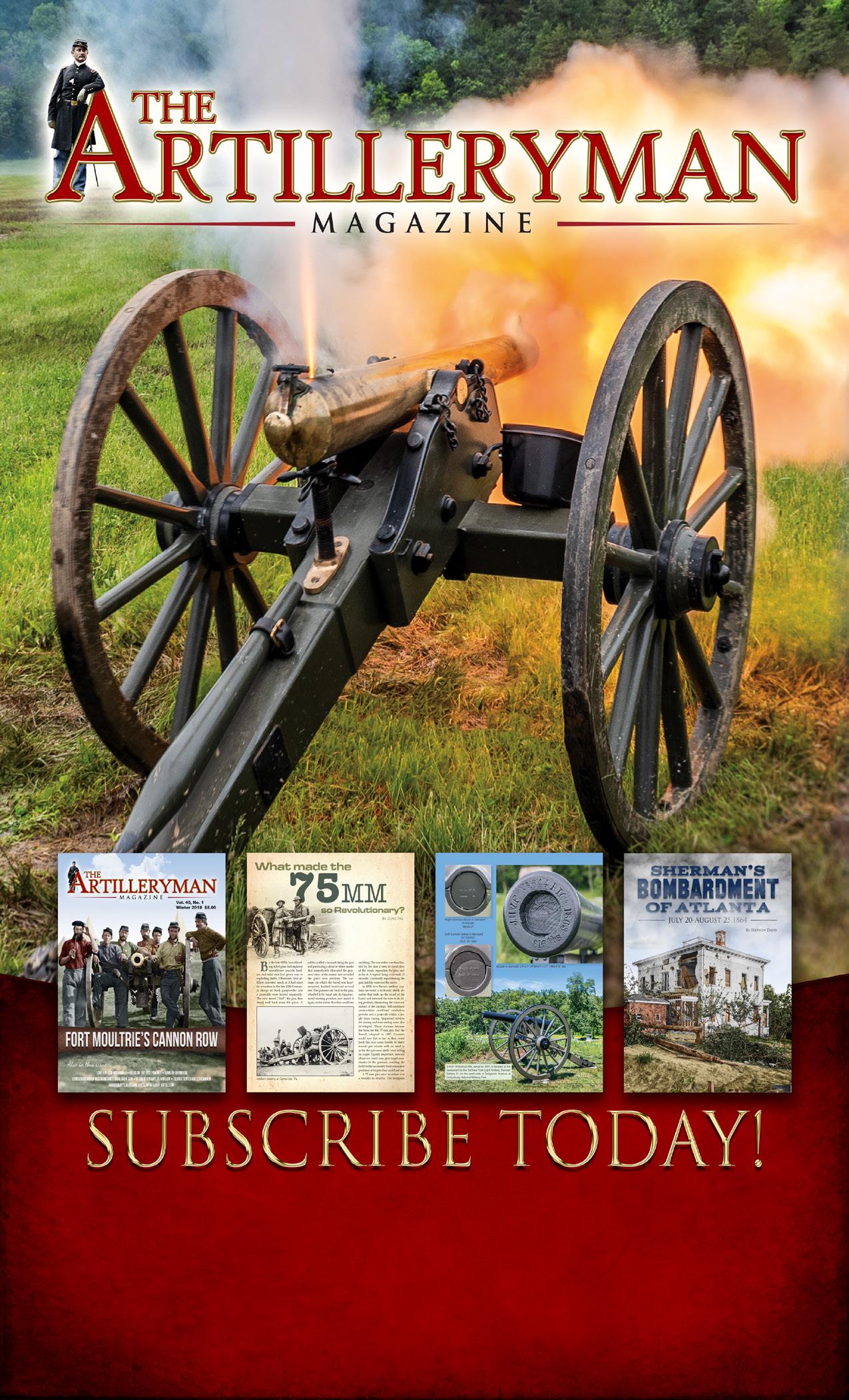
$89.95 + $8 media mail for the standard edition.
With special contributions from all six living presidents, plus Chairman of the Joint Chiefs of Staff Gen. Mark A. Milley, former Secretary of Housing and Urban Development Jack Kemp, and former Secretary of State Colin Powell.
Proceeds from this volume will go to support the Ulysses S. Grant Association and the Grant Monument Association.
On the ECW YouTube page, we featured video versions of our discussions with Cecily Zander and Kris White. In addition:
• We visited Paducah, Kentucky, to discuss the death of hometown hero Col. Albert Thompson, killed just a few blocks from his own home.
• We kicked off an ECW video swing around Mobile Bay.
31
2023 31
2023 CivilWarNews.com CivilWarNews.com
March
March
e Artilleryman is a quarterly magazine founded in 1979 for enthusiasts who collect and shoot cannons and mortars primarily from the Revolutionary War, Civil War to World War II. Now expanded and fully illustrated in rich color throughout the entire magazine. 520 Folly Road, Suite 25 PMB 379, Charleston, SC 29412 • 800-777-1862 • mail@artillerymanmagazine.com www.ArtillerymanMagazine.com The Artilleryman Magazine FOUR INCREDIBLE ISSUES A YEAR
Publishers/Authors Send your book(s) for review to: Civil War News 520 Folly Road, Suite 25-379, Charleston, SC 29412
Dr. Cecily Nelson Zander is ECW’s new chief historian.
releases. Subscribe online at CivilWarNews.com
Grant at 200 is one of Savas Beatie’s
newest
by Joseph F. Wilson
Over 420,000 Civil War soldiers spent time as a prisoner of war.
One Union POW holds the distinction of surviving captivity longer than any other.
A captured soldier could face many months languishing in a
I Will Not Die Here!
seedy prison down south or up north. Official reports list 30,000 Union prisoners who died, while 26,000 Confederate captives lost their life. Weak minded soldiers despondent over their plight went to the burial pits early. Only the strong-willed ever saw home again. Count Corporal Newell
Burch among the latter.
The New York farmer lived an idyllic life before the war working on the family farm near Lake Erie in northern New York. On August 25, 1862, a patriotic Burch enlisted as a corporal in the 154th New York Infantry. Less than a year later, Newell was marched at the point of a bayonet as a prisoner of war. His nightmare lasted 661 days.
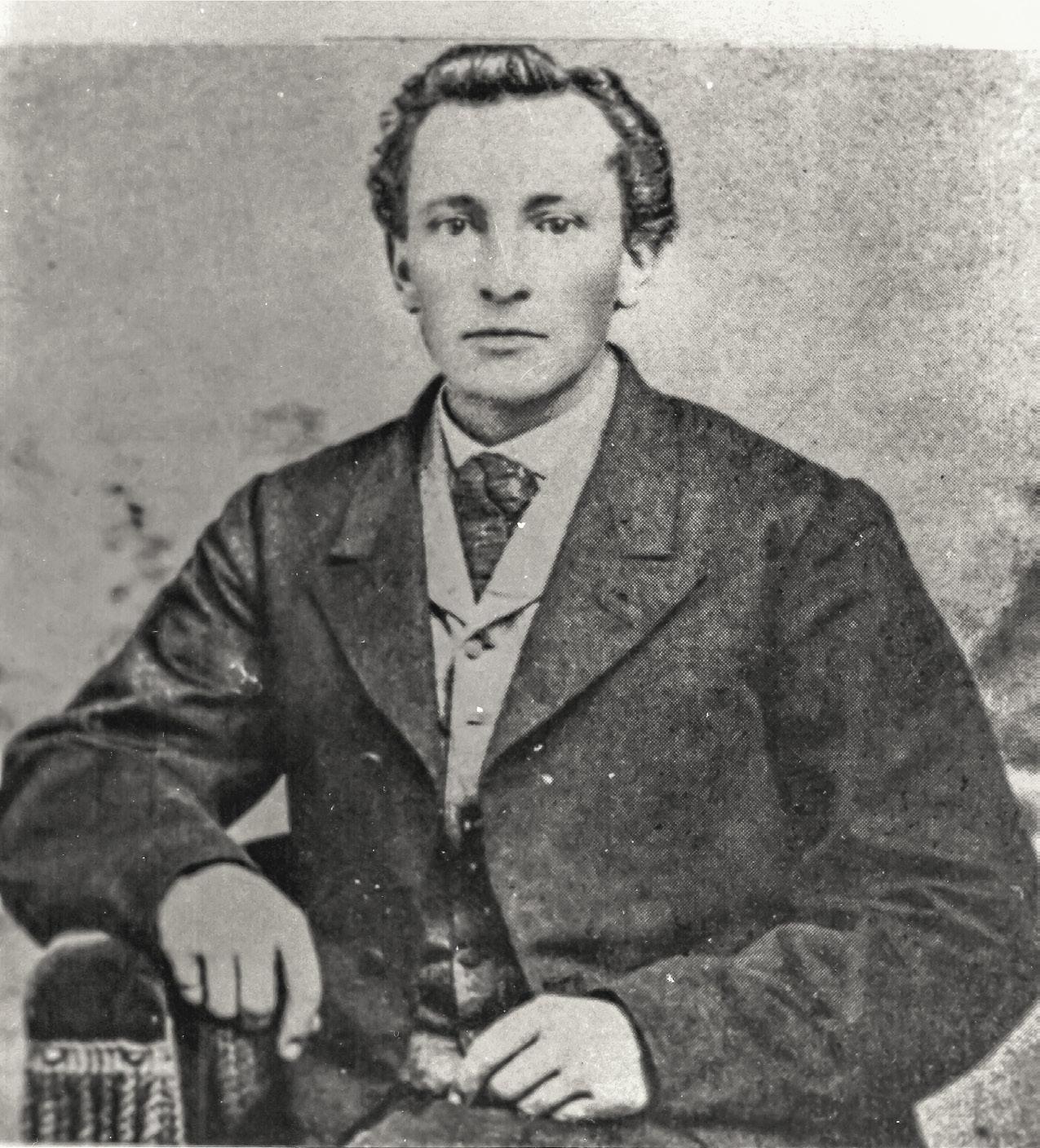
Only a fierce determination carried the tough farm boy through two of the worst prisons of the war. On Belle Isle in Richmond, his battle to survive lasted seven months. Burch faced his most severe test struggling to stay alive for another 13 months in the infamous Andersonville Prison Camp in Georgia. His family had given Newell up for dead.
The 154th N.Y. faced their first combat at Chancellorsville during May 1863. General Stonewall Jackson’s furious flank attack swept over General Oliver Howard’s XI Corps that included the 154th regiment. Being a swift runner, Burch raced like a deer through the woods with musket balls whistling past his ears. One ball struck the fleeing corporal directly in the upper back. Only his knapsack saved him from a cemetery plot. Two months later at Gettysburg, there wasn’t anywhere to run.
On the 1st day’s fight, the 154th
went to aid Federals retreating toward town. A stiff fight developed in a brick yard when the Confederates surrounded the New Yorkers. Over 150 of the 154th’s men were marched to Virginia as prisoners along with many other captives as his odds of ever seeing farm or family again plummeted.
In Richmond, authorities paraded their Yankee trophies through town. People lined the streets screaming and spitting at “Lincoln’s Assassins.” All the captives then crossed over to Belle Island in the middle of the James River. A blazing hot sun marked the summer months. With the coming of winter, cold winds sweeping up the river ushered in a season of death.
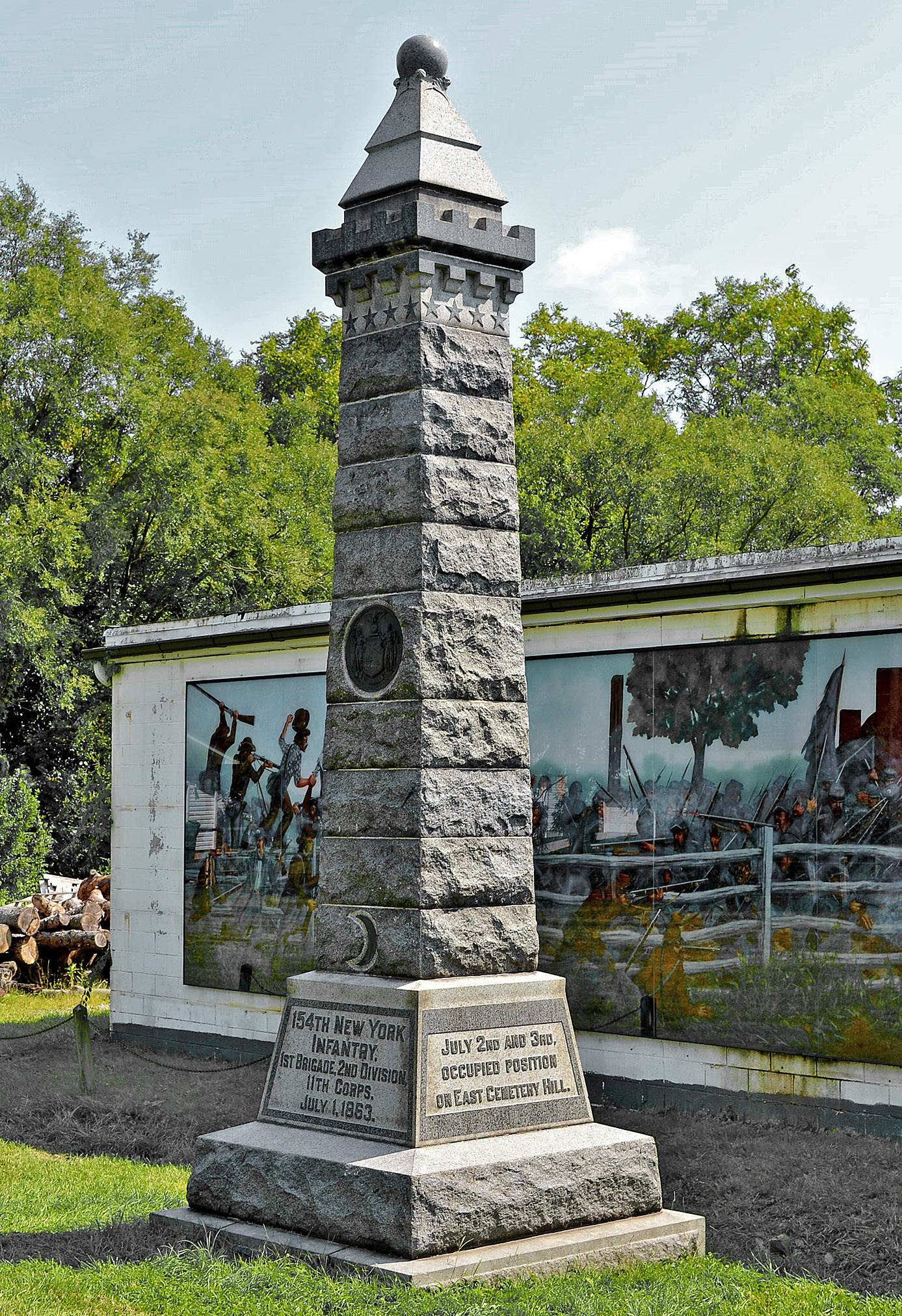
Without adequate shelter, men dug holes in the colder months to escape the elements. After severely cold nights, lifeless cadavers filled many holes. Many froze to death and never crawled out of their pits. Newell Burch laid out on open ground for a month before being issued a ragged tent that offered little protection.
By volunteering to register new prisoners, a scheming Burch received an extra ration to keep from starving. All the southern prisons had trouble securing food as food riots already rocked southern cities. Any available food went first to Lee’s Army,
then to the citizens, prisoners received what was left.

Newell’s tent mate, Pvt. Truman St. John, was his first friend to perish. He wouldn’t be the last. Truman left the island for a Richmond hospital where few of the sick ever recovered. Burch watched many of his 154th friends surrender to disease, exposure, and starvation. Each death strengthened his oath to make it back home.
Following Truman’s death, Burch bonded with Corporal Ebin Ely. Ely secured a plum position ferrying over supplies on a boat from Richmond. In town, Ely bartered with black women to gain trade items. Burch and Ely then engaged in trading with guards and fresh prisoners for greenbacks and more rations, “In this way we kept our company at an advantage over others in the way of grub.”
Being flush with greenbacks and rations didn’t keep Newell’s health from failing on the cold and crowded island and his health declined over the winter, but he feared going over to the hospital. In his diary Burch recorded, “Am somewhat down today with diarrhea, headache, and fever. Pretty much sick. Am quite unwell.” In December, an infection inflamed his arm after a smallpox vaccination didn’t heal well, and seemed destined for the cemetery.
In February, the prisoners welcomed news of a transfer. Confederates reported that anew camp in Georgia featured a lovely shaded stockade with cool fresh water flowing through the center. Men happy to be leaving the cold Island for a warmer climate marched for the train depot. All thought leaving Belle Island was a blessing. Nobody had heard of Andersonville. Soon, they’d all be cursing both governments for leaving them to die inside the enclosure.
Newell Burch’s health continued to worsen. Ely cradled the sickly Newell in his arms while the crowded cattle cars headed south for the newly constructed Andersonville Stockade. Stepping off at the Andersonville depot, Corporal Ely physically supported the ailing Burch who couldn’t make the half mile walk to the stockade on his own. To enter Andersonville already sick usually didn’t end well for prisoners, but a determined Newell vowed he’d see Lake Erie again.
Andersonville hadn’t been completed when he arrived the
32 CivilWarNews.com March 2023 32 March 2023 CivilWarNews.com
Newell Burch
Only the hopeful survive Andersonville - NY Monument (back).
154th NY Mon. Gettysburg (brickyard)
first day of March. Slaves were still working to finish the 16 acre stockade. Running through the center of the stockade, a stream provided acceptable drinking water. Overcrowding hadn’t happened yet. In the next few months, 400 prisoners entered the stockade every day. With the south funneling all Union captives to Andersonville, things quickly deteriorated.

What had been a suitable source of drinking water soon received excrement and filth from dirty prisoners. Outside the stockade, a cook house and Confederate camps up stream polluted the stream even before it entered the stockade. In his diary, prisoner Eugene Forbes stated, “the stream wasn’t fit for washing your clothes, much less drinking.”
By the end of June, 25,000 prisoners inhabited the 16 acre plot. Prisoners had little protection from the hot summer days or the cold chilly nights. Conditions demanded the stockade be expanded to 26 acres in July. Disease claimed victims on a massive scale. By August, 100 men went to the burial pits every day. Meanwhile, Newell
Burch added scurvy to his list of ailments as his diet grew worse.
Failing health became critical for Burch. Everyday Ely lifted Newell to his feet and helped him to the South Gate where hundreds of sick prisoners gathered daily to see a doctor. Only a small number were chosen. The stronger of the sick pushed and shoved their way to the front. Weaker men crawling or walking with the help of a comrade had no chance of getting near the gate. Every morning Ely tried to get Newell help without success.
With death all around, Burch watched as many gave up and died. He noted, “They gave up, and when any man gave up in a rebel prison, he was dead already,” But he chose hope over despair. The present day New York monument in the cemetery illustrates this conviction showing a soldier with hope sitting opposite a woeful despairing figure waiting for death.
Finally, on August 22, Ely succeeded in getting Burch medical help. A doctor saw the ailing Corporal and admitted him to the hospital. Newell said good bye, but before leaving the stockade, Burch and Ely divided
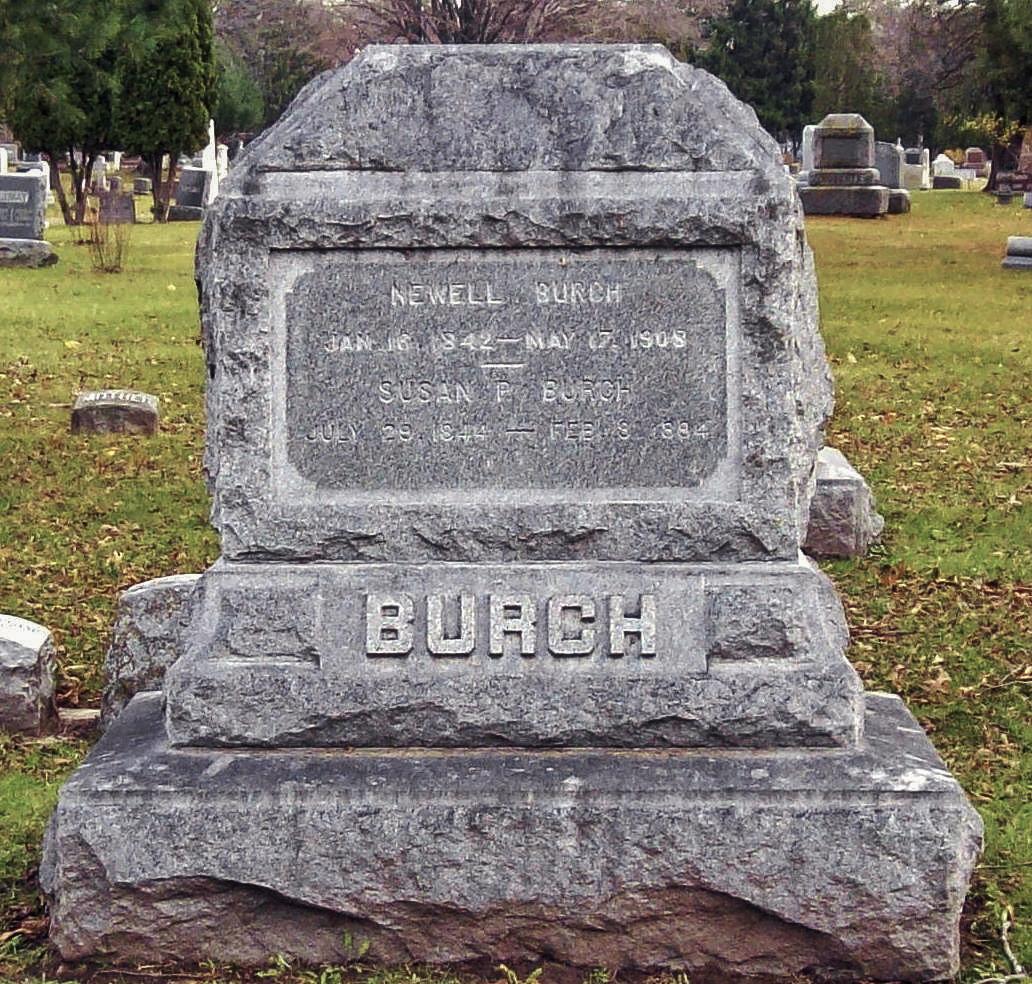
their money. It was the last time he ever saw Ebin Ely. Suffering stiff joints from scurvy, Burch wrote, “I had just enough strength to crawl around on one leg and a stick.” Burch later credited Corporal Ely for his survival.
In September, Sherman captured Atlanta causing Confederates to evacuate Andersonville. Burch dragged himself to the train depot with two crutches made from tree branches. The commandant, Captain Henry Wirz, ordered the invalid back to the hospital. Wirz believed he’d never survive the trip; Burch later admitted that Wirz likely saved his life.
While in the hospital the cunning Newell used his greenbacks to barter for supplies to treat his maladies. Turpentine rubbed into his scurvy stiffened joints worked well. Trading for vegetables fought the scurvy. Soap and fresh bandages cleared up the scorbutic ulcers. A daily dose of nitric acid burned out the festering infection from the smallpox injection. He slowly
began to recover.
Surprised doctors approached him to investigate how he regained his health. After explaining the methods, the doctors made him ward master in the hospital. Till the very end, a compassionate Burch nursed countless soldiers back to health. Corporal Burch was one of the first to arrive at Andersonville and one of the last to leave. He departed Andersonville on March 24, 1865.
Along with other prisoners, Newell took a rail car to Jackson, Mississippi. From there, they walked 45 miles to steamboats waiting at Vicksburg to transport the freed men home. Men too far gone died along the way. Burch received his parole on April 21, 1865. It had been a long and trying 661 days since his capture.
Corporal Burch got lucky once more. On April 21, he boarded the steamboat SS Olive Branch. If they had been delayed by a few days, his group would have boarded the SS Sultana which
exploded on April 27 sending over 1,700 frail prisoners into the Mississippi River and certain death. Prisoners survived Andersonville only to be swept away in a maritime tragedy greater than the Titanic All of Newell’s friends departed Andersonville in the mass September evacuation. Never hearing any news after Burch entered the hospital, they all assumed he perished in the sick bay like most who entered the medical facility. Family back home got word from his comrades that he was dead, but Burch still walked among the living. Against all odds, Newell strolled up the dirt road leading to his family farm by Lake Erie. Shocked family members came running out to greet the former prisoner they all thought dead. Newell married after the war and fathered six children. Burch passed away at the age of 66 in 1908; fate granted him another 43 years of life after leaving Andersonville. Most of his comrades in captivity remain buried in the Andersonville National Cemetery. Fortitude, ingenuity, and a bit of good luck all helped earn the gritty Corporal Newell Burch the title of “the longest held prisoner of the Civil War.”
Joseph F. Wilson lectures on Andersonville Prison and is a member of the General Meade Society and the Old Baldy CWRT. His documentary film “Civil War Prisons - An American Tragedy” in available on Amazon pay per view. Contact - joef21@aol.com.
Terms and Conditions
Andersonville National Cemetery (Memorial Day)
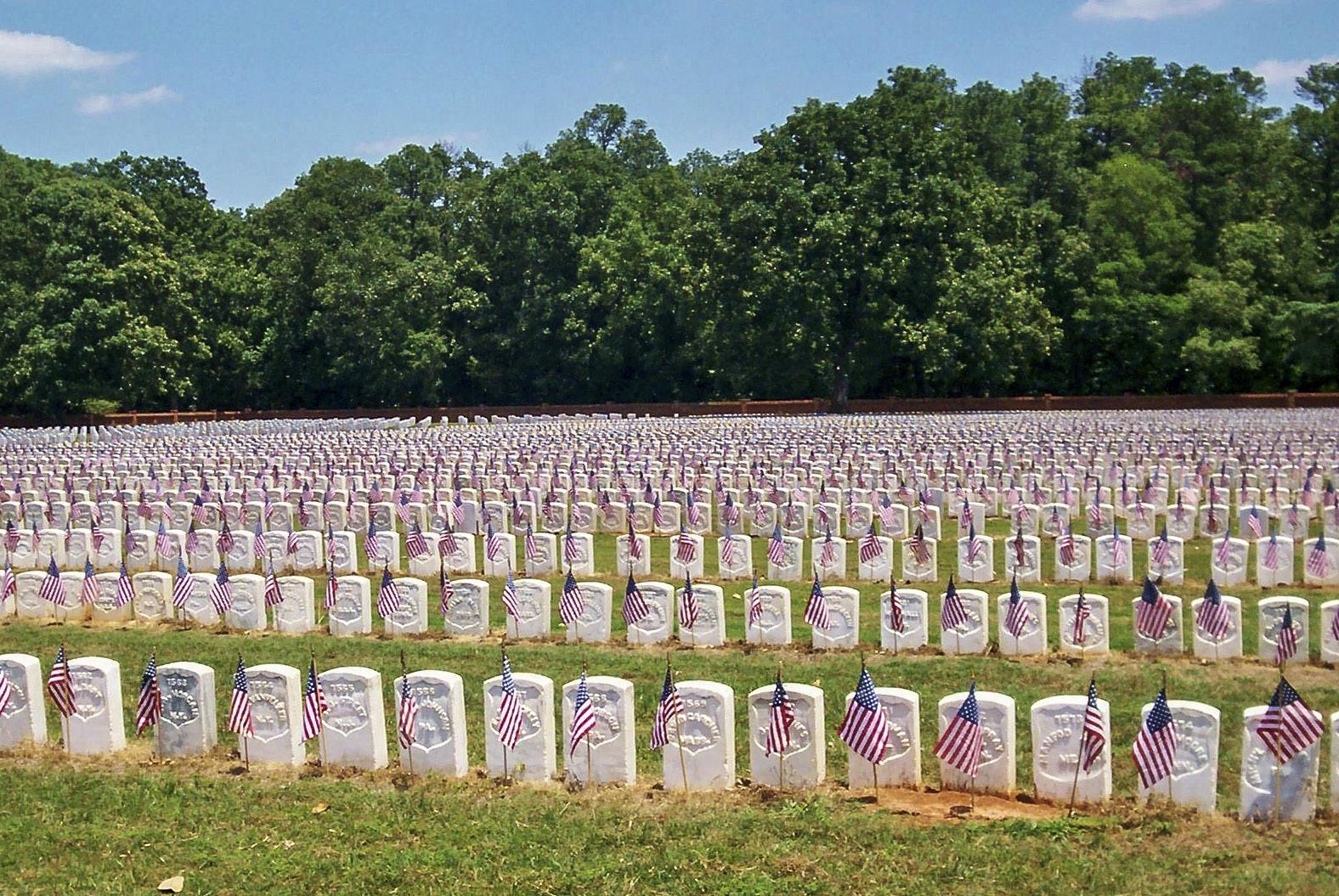
The following terms and conditions shall be incorporated by reference into all placement and order for placement of any advertisements in Civil War News by Advertiser and any Agency acting on Advertiser’s behalf. By submitting an order for placement of an advertisement and/or by placing an advertisement, Advertiser and Agency, and each of them, agree to be bound by all of the following terms and conditions:
1. All advertisements and articles are subject to acceptance by Publisher who has the right to refuse any ad submitted for any reason. Mailed articles and photos will not be returned.
2. The advertiser and/or their agency warrant that they have permission and rights to anything contained within the advertisement as to copyrights, trademarks or registrations. Any infringement will be the responsibility of the advertiser or their agency and the advertiser will hold harmless the Publisher for any claims or damages from publishing their advertisement. This includes all attorney fees and judgments.
3. The Publisher will not be held responsible for incorrect placement of the advertisement and will not be responsible for any loss of income or potential profit lost.
4. All orders to place advertisements in the publication are subject to the rate card charges, space units and specifications then in effect, all of which are subject to change and shall be made a part of these terms and conditions.
5. Photographs or images sent for publication must be high resolution, unedited and full size. Phone photographs are discouraged. Do not send paper print photos for articles.
6. At the discretion of Civil War News any and all articles will be edited for accuracy, clarity, grammar and punctuation per our style guide.
7. Articles can be emailed as a Word Doc attachment or emailed in the body of the message. Microsoft Word format is preferred. Email articles and photographs: mail@civilwarnews.com
8. Please Note: Articles and photographs mailed to Civil War News will not be returned unless a return envelope with postage is included.
33 March 2023 33 March 2023 CivilWarNews.com CivilWarNews.com
Newell Burch grave, Evergreen Cemetery, Wisconsin.
Andersonville in 1864, Andersonville National Historic Site, 1864.
Civil War News book reviews provide our readers with timely analysis of the latest and most significant Civil War research and scholarship. Contact email: BookReviews@CivilWarNews.com.
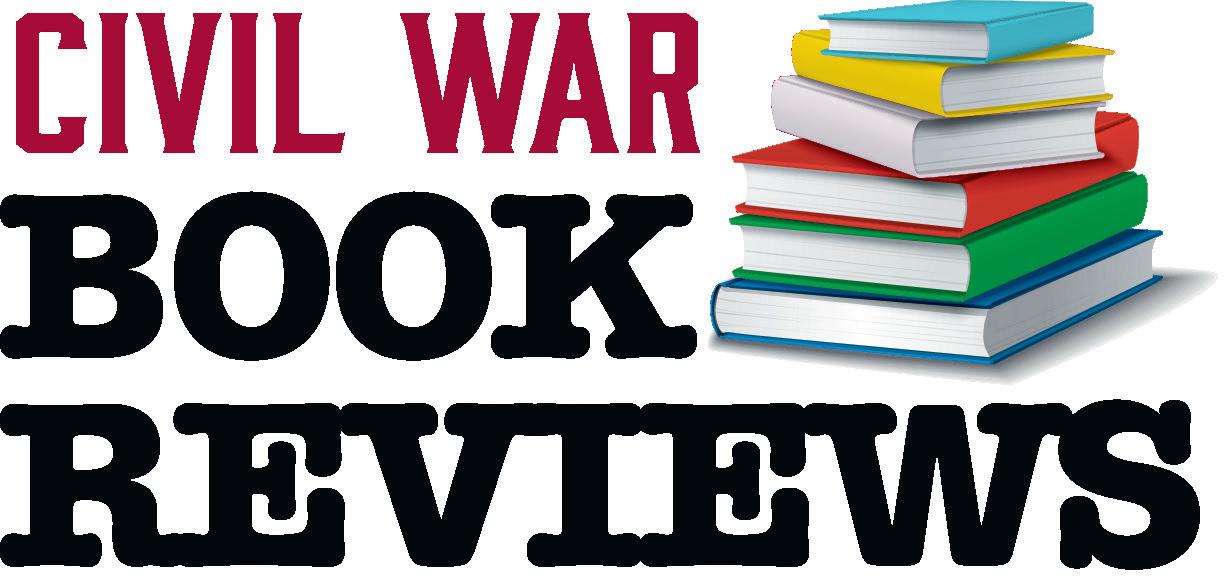
Excellent Biography on Beauregard
Dreams of
First hand Accounts of Iowa Soldiers
Iowa and the Civil War; Volume 3: The Longest Year 1864–1865 by Kenneth L. Lyftogt. 2022, Camp Pope Publishing, www.camppope. com, Iowa City, Iowa. 543 pp., Cloth, $40.
 Reviewed
Reviewed
by
Charles H. Bogart
Corps.
In all my years of studying the Civil War I know little of Beauregard. A “Fop,” the loser of Shiloh, an enemy of Jefferson Davis, and various other short comings. So, when the opportunity arose to read this book, I jumped at the chance.
Beauregard was born in 1818 to an Italian mother and a father of French/Creole heritages. They were a prominent family in New Orleans. He attended West Point, became an engineer of note, rose to be Commandant of the Academy for a day, before resigning when Louisiana seceded. He was in command of troops at First Manassas, and was very successful in orchestrating the Confederate victory. His prickly personality put him in bad stead with Jefferson Davis. This animosity lasted till Davis’s death. It diminished his career throughout the War. He never got due credit for his actions as a result of this animosity.
Confederate authorities
blamed him for the loss at Shiloh, an unfair assessment. His excellent engineering skills saved Charleston and contributed to the repulse of Grant and Butler at Petersburg. These accomplishments were never recognized nor rewarded. Beauregard wanted field command of an army, but Davis denied him. R.E. Lee recommended him for command of the Army of Tennessee, but Davis gave it to John Bell Hood. This was one of Davis’ biggest mistakes as we all know how that turned out. Davis was a proponent of the ‘crony’ system.
Beauregard does well in the post war era, but because of several decisions and beliefs he went unheralded. He was not a proponent of ‘The Lost Cause,’ believed in equal rights for African Americans, and did not believe in the canonization of Lee. Although he got along with Lee, I believe he was a bit jealous of his fame. Perhaps his biggest mistake was joining the board of the Louisiana Lottery, a thoroughly corrupt enterprise. It made him financially secure but left a bitter taste in the mouths of the Southern people. He never left his beloved New Orleans and died there in February 1893.
This is an excellent biography, filled with information, a short reading list, and notes. In reading it I tried to compare him to a Union general of similar traits. I failed. Beauregard is unique. There has not been a new bio of Beauregard since T. Harry Williams wrote “Napoleon in Gray” back in 1955. Perhaps Mr. Chick will take up that task in the near future. I certainly hope so.
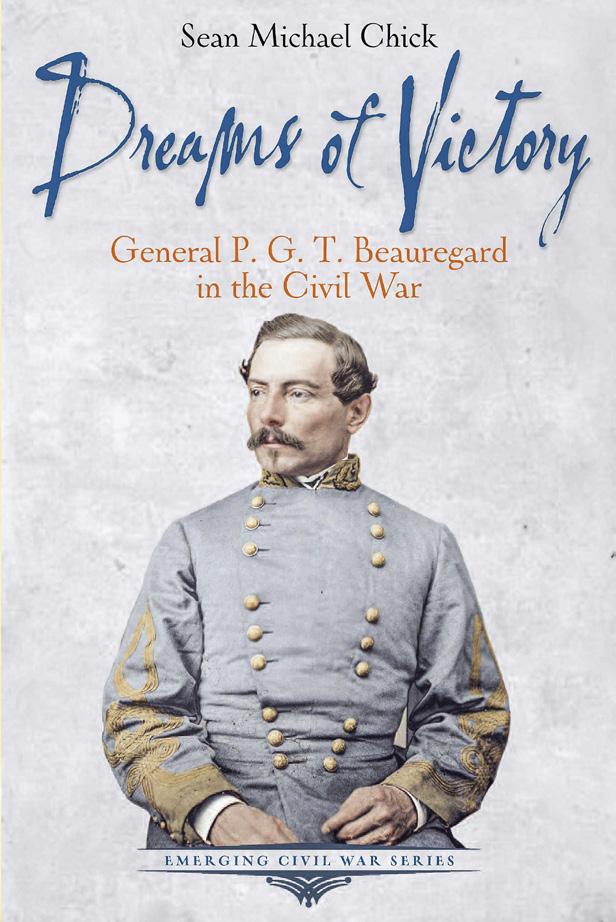
Joseph Truglio, of Manchester, N.J., is a retired Motion Picture Technician who has a lifelong interest in the Civil War. He is past President of the Phil Kearny CWRT in N.J.
The author skillfully weaves the story of Iowa’s involvement in the various theaters into a comprehensive narrative. He details Iowa’s involvement in General William Sherman’s campaign that led to capturing Atlanta, the efforts to bring General John Bell Hood and General Nathan Forrest to battle following the capture of Atlanta, the march to the sea, taking Savannah, and the final battles in South Carolina and North Carolina. During this period, Iowa soldiers also participated in the Battles of Franklin and Nashville, took part in the capture of Mobile, the defeat of General Jubal Early in the Shenandoah Valley, rode with General Wilson during his raid into Alabama and Georgia, foiled General Sterling Price’s invasion of Missouri, and fought various guerrilla groups on the Western Frontier.
and slavery be ended. Also, the people would be electing a new Congress whose new members might finally approve placing the 14th Amendment before the states. This chapter provides a clear summary of the emotional issues that tugged at Iowa voters. The Republican Party itself was not in total agreement with Lincoln’s war policies, some finding them too lenient and some too demonic. How this all played out in Iowa is a fascinating story. I personally found the last three chapters of great interest. Here, the author looked at the effect the assassination of President Lincoln had on Iowa’s soldiers and the state’s home front. Plus, he delves into post war Iowa. Hopefully this examination of post war Iowa will become an additional book in this series on Iowa in the Civil War.
This is the final volume in Mr. Lyftogt’s trilogy of Iowa in the American Civil War. Volume 1 covered the period 1850–1862; Volume 2 examined the years 1862–1864. During the course of the Civil War Iowa, provided the Federal government with 48 infantry regiments, nine cavalry regiments, and 4 artillery batteries. Iowans would fight in the Trans Mississippi, the Eastern, and the Western Theaters. The highest commanding officer from Iowa was Major General Grenville Dodge who commanded XVI
The book’s story of Iowa in the Civil War is enhanced by the author adding first-hand accounts of events under discussion into the text. The contemporary accounts provide the reader with a feel of the emotions generated within individuals, families, and communities by the political turmoil and battlefield casualties taking place around them.
Chapter Eight details the 1864 Presidential election and is a must read. Many forget that in 1864 the American people were not only deciding who would be President of the United States for the next four years but whether the war would continue
The author touches upon the fact that the fighting war did not end with the surrender of Robert E. Lee’s Army of Northern Virginia. The war continued for some time in the TransMississippi Theater; the effects would continue to plague and shape the social and political patterns of Iowa long after fighting ended. I was amazed that some post-Civil War political and social problems that plagued my home state of Kentucky, a border state, also played out in Iowa.
I found this book to be a fascinating read, and I have ordered volumes 1 and 2 of the series. The author provides a thoughtful insight into why Iowa believed it needed to support the Union cause both politically and militarily. I only wish the author had covered Iowa’s involvement in the the purchasing of Federal revenue bonds that were issued to fiancé the war. All in all, this book is a great addition to the historical accounts of the American Civil War.
This unique work contains a complete photographic record of Georgia’s memorials to the Confederacy, a full transcription of the words engraved upon them, and carefully-researched information about the monuments and the organizations which built them. These works of art and their eloquent inscriptions express a nation’s profound grief, praise the soldiers’ bravery and patriotism, and pay homage to the cause for which they fought.
Charles H. Bogart has a BA from Thomas More University and an MCP from Ohio State University. He is employed as a tour guide at the Fort Boone Civil War Battle Site in Frankfort, Ky., serves as President of the Frankfort Civil War Roundtable, and is a board member of the Kentucky Civil War Roundtable. He has written several books and articles on military and naval history.

34 CivilWarNews.com March 2023 34 March 2023 CivilWarNews.com Subscribe online at CivilWarNews.com
Victory. General P.G.T. Beauregard in the Civil War. By Sean Michael Chick. Index, Appendices, photos, Illustrations, Savas Beatie, 2022, 169 pp., softcover, $16.95.
Reviewed by Joseph Truglio
www.mupress.org 866-895-1472 toll-free
GEORGIA’S CONFEDERATE MONUMENTS In Honor of a Fallen Nation Gould B. Hagler, Jr. Deadlines for Advertising or Editorial Submissions is the 20th of each month.
A Powerful, Nuanced Look at Suffrage & Racism in 1865
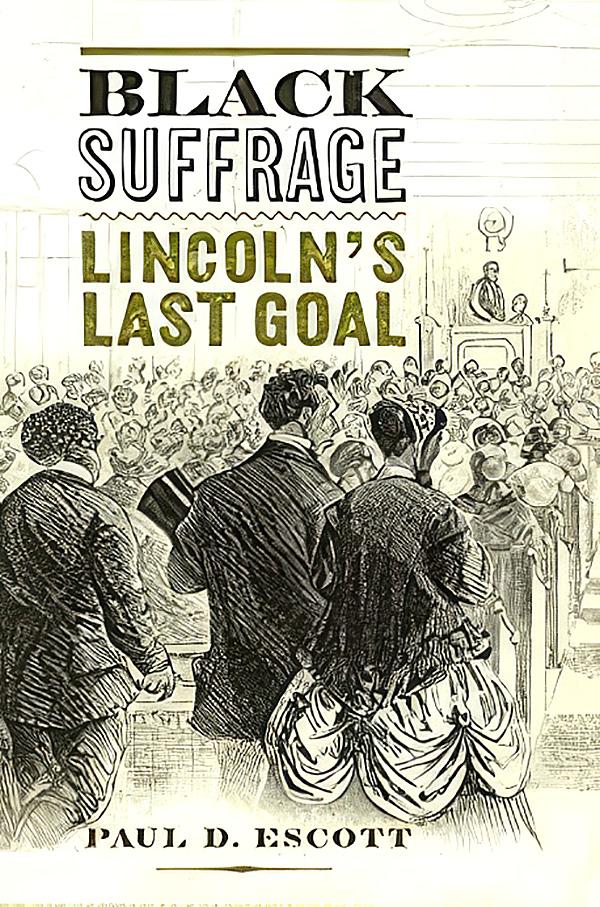
Black Suffrage: Lincoln’s Last
Goal. By Paul D. Escott. Photos, notes, index, 288 pp., 2022. University of Virginia Press, www.upress.virginia.edu. Cloth, $39.50.
Reviewed by Jonathan A. Noyalas
Prelude to Gettysburg
punish the former Confederacy. Conversely, Escott demonstrates, northern Democrats opposed granting the right to vote to even a portion of African Americans because they surmised it would lead to racial amalgamation, violence, and the “inevitable degradation of society.” The author reveals ways in which Democrats used the words of Union veterans, including prominent generals such as William T. Sherman, to express the importance of maintaining white supremacy in elections and all levels of government.
Although victory in the spring of 1865 restored the Union and seemed to settle important Constitutional issues, the success of United States forces raised various questions about the republic’s future, perhaps most notably whether the nation was ready to grant African Americans the right to vote? In this deeplyresearched and elegantly crafted volume historian Paul Escott, among the nation’s most distinguished historians, explores the complexities of the struggle for black suffrage in the Civil War’s immediate wake and reveals the multifaceted perspectives northerners possessed about race in the months following the War’s conclusion.

Central to Escott’s cogently crafted history is an analysis of the ways in which Northern Republicans advocated for black suffrage and the rhetoric Democrats utilized to suppress such support. Largely relying on contemporary newspapers, magazines, and addresses, Escott vividly recreates the war of words between both groups. Unsurprisingly, Escott reveals Republicans argued that suffrage, in keeping with Lincoln’s perspective in the spring of 1865, should be extended to all blacks who served the Union war effort. Additionally, other Republicans who favored suffrage reasoned that extending voting rights to African Americans proved the only viable means to protect the legacy of Union victory and
While Escott lays out some familiar arguments, one paramount value of this well-reasoned history is the author’s stunning ability to present a nuanced analysis of not only differences between Republicans and Democrats but analyze northern Republicans’ complicated racial perspectives. While Republicans supported slavery’s end, not all favored extending the right to vote. While Lincoln hoped reconciliation and suffrage could be simultaneously realized, Escott reveals that some Republicans thought it impossible. Granting voting rights to African Americans, some Republicans argued, proved a significant obstacle to peaceful reunification. Others decried suffrage due to various factors including the belief that voting rights could only be granted by individual states, lack of education among potential black voters, or fear that black voters in the former Confederacy would be swayed at the ballot box by former enslavers intent on undermining the national government.
Beyond Escott’s detailed examination of divisions among various groups throughout the North, the author also devotes considerable attention to how Republicans who supported suffrage attempted to allay concerns. History, Escott shows, proved a great ally. Leaning on the limited suffrage that a contingent of freedmen exercised in Tennessee, Maryland, North Carolina, and Pennsylvania, in the republic’s early decades, Republican supporters hoped to show that suffrage could be extended to black people without fear of political and social chaos. Democrats, the author lucidly reveals, also leaned on past and current events beyond
America’s borders, including Jamaica’s autumn 1865 Morant Bay Rebellion, to illustrate why suffrage should not be endorsed. Escott’s powerful study also examines the critical roles African Americans played in the struggle for voting rights throughout the remaining months of 1865. From organizing chapters of the National Equal Rights League, maintaining the American AntiSlavery Society, or organizing protests, Escott underscores the importance of African Americans to the movement’s momentum. While much has been written about the circumstances surrounding passage of the 15th Amendment, which officially granted voting rights after ratification in 1870, no historian prior to Escott has delved into such detail, nuance, and complexity about northern attitudes toward suffrage in 1865. This magnificent volume, an exemplar of the finest scholarship, is essential for anyone seeking deeper knowledge of the struggle for black suffrage and the role that African Americans played in it in the wake of Union triumph. Furthermore, those desiring a thorough, thoughtful, and balanced analysis of the complexities of Northern racial attitudes will find Escott’s history revealing and compelling. This book, like others penned by Escott, is destined to be a classic and is deserving of much praise and a broad readership.
Jonathan A. Noyalas is director of Shenandoah University’s McCormick Civil War Institute in Winchester, Virginia, a professor in Civil War Era Studies at Shenandoah University, and founding editor of Journal of the Shenandoah Valley During the Civil War Era. He is the author or editor of fifteen books including most recently Slavery and Freedom in the Shenandoah Valley during the Civil War Era, published by the University Press of Florida.
“If We Are Striking For Pennsylvania”: The Army of Northern Virginia and the Army of the Potomac March to Gettysburg: Volume 1, June 3-21, 1863. By Scott L. Mingus Sr. and Eric J. Wittenberg. Appendix, index, illustrated, Savas Beatie Publishing, 2022, 426 pp., hardcover, $34.95.
Reviewed
by Wayne L.
Wolf
Two gifted modern historians, Scott Mingus and Eric Wittenberg, have written a meticulous account of the 18 days that followed Gen. Robert E. Lee’s 1863 decision to invade the North. Lee believed an attack on Northern soil would allow Virginia to buy time to recover from recent Yankee devastation, supply his army with much needed food and forage, and perhaps force Gen. Ulysses Grant to pull troops away from Vicksburg to bolster the Army of the Potomac. Each chapter covers one day of Lee’s journey North and Gen. Hooker’s movements in response.
As Gen. Lee began stealthily moving North, Gen. Hooker, commanding the Army of the Potomac, was tasked with trying to ascertain if Lee was going to attack Baltimore, Washington City, or Pennsylvania. Hooker’s intelligence personnel spent weeks trying to determine Lee’s intentions as encounters
were fought at Brandy Station, Winchester, Aldie, Martinsburg, Berryville, Upperville, and Carter’s Woods, as well as several smaller outposts. Conflicting reports, unreliable rumors, and a lack of consensus on Confederate objectives plagued Hooker. Simultaneously, rumors of an imminent attack aroused Southern Pennsylvanians, sending many into a frenzy to hide valuables, livestock, flee to safer areas, and await possible Confederate retaliation for the devastation rained on Southern town. In response to the rumors, Pennsylvania civilians joined militia units to protect their capitol. Gov. Curtin called for every able citizen to take up arms, even asking the governors of New Jersey and New York for assistance from their militias. The North was in a panic. While Northern civilians and soldiers struggled to find out what Lee was up to, Jeb Stuart’s cavalry was fighting to keep Northern troops out of the mountain gaps and away from Lee’s main forces, compounding the inability of Hooker to determine Lee’s true objectives.
In this first volume of a twovolume series, the authors use extensive primary source material to bring out the actual emotions of the soldiers and civilians who were impacted during these trying weeks. These letters and diaries add the human element to military reports and make the story of these 18 days come to life. Reading this volume makes one feel as if they were there, witnessing history, with all the angst, drudgery, danger, and sacrifice that attended the impending Battle of Gettysburg.
This volume is superbly written, historically sound, richly imbued with primary sources, and indispensable for a true understanding of the Battle of Gettysburg. It should be on the shelf of every Gettysburg historian and is highly recommended. The future Volume 2 is eagerly awaited to finish one’s journey to Gettysburg.
Dr. Wayne L. Wolf is Professor Emeritus at South Suburban College, past president of the Lincoln-Davis Civil War Roundtable, and the author of numerous Civil War books and articles including Two Years Before the Paddlewood and the Last Confederate Scout. He is a frequent speaker on the lecture circuit.

35 March 2023 35 March 2023 CivilWarNews.com CivilWarNews.com
Railroad Built and Railroad Wrecked
The Nashville and Decatur Railroad in the Civil War: History of an Embattled Railroad. By Walter R. Green, Jr. Endnotes, bibliography, index, appendices, tables, illustrations, photographs, maps. 256 pp., 2022. McFarland & Co., Inc. Paperback, $39.95.

Erin Go Sing!
its use to the enemy.
The book tells the story of the war in this theater and connects it to the broader conflict, with the focus remaining on the railroad itself. There are lessons on how to build and defend a railroad and how best to tear it up. The engineer/author instructs the reader about bridges and trestles (there is a difference) and also about blockhouses and stockades (again, there is a difference). The reader learns about the troops who manned the defensive works and the men who put the pieces back together after raids led by Earl Van Dorn and Nathan Bedford Forrest.
Walter Green is a civil and structural engineer (retired) who lives in Franklin, Tenn. During the Civil War an important rail line ran from Nashville through the author’s hometown and southward to the north Alabama town of Decatur, where it joined the Memphis and Charleston.
The story of the Nashville and Decatur is interesting and one that Mr. Green tells capably. The line was finished soon before the war and was operated by three cooperating railroad companies. The N&D, like other railroads, was “both a tool and a target,” as the author phrases it. Depending on where the armies were as they advanced and retreated, the railroad was a vital asset to be used or an enemy target to be destroyed. As the armies moved frequently, there was lot of construction, destruction, reconstruction, and re-destruction.
The Confederates wrecked the line as they moved south after evacuating Nashville in early 1862. Thereafter, it was mostly the Federals who were using the line and working to keep it in repair, while the Confederates were targeting the road to deny
One of the most interesting parts of the book is the chapter on John Bell Hood’s retreat after the disastrous Battle of Nashville. What was left of the Army of Tennessee scrambled to get across numerous rivers and creeks and just barely managed to say ahead of the pursuing Federals. Here Mr. Green offers lessons in how to build pontoon bridges and use fords to cross flowing streams, as the railroad itself was out of commission at this time.
The appendices provide much information to supplement the main narrative; the maps by Hal Jesperson are excellent; and three tables offer minute details about all the structures used to cross the streams and the defenses to protect them.
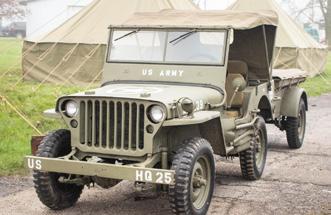
Readers will notice a few minor errors and some will from time to time think “Too Much Information.” However, Mr. Green has provided a valuable focus on an aspect of the Civil War that is often covered only cursorily.


Gould Hagler is a retired lobbyist living in Dunwoody, Ga. He is a past president of the Atlanta Civil War Round Table and the author of Georgia’s Confederate Monuments: In Honor of a Fallen Nation, published by Mercer University Press in 2014. Hagler speaks frequently on this topic and others related to different aspects of the Civil War and has been a regular contributor to CWN\ since 2016. His email is gould.hagler@gmail.com.
V.

Irish American Civil War Songs- Identity, Loyalty and Nationhood. By Catherine


Bateson. Photos, Illustrations, Bibliography, Endnotes, Index. 301 pages. LSU Press, www. lsupress.org Hardbound, $45.00.
Reviewed by Tom Elmore
songs was simply good business, and business was good.
The book focuses mostly on songs about New York Irish units, most notably the famed 69th New York and the Irish Brigade as well as their commander, Generals Thomas Meaghers and Michael Corcoran. To be fair, the author admits that this is due in part to the large quantity of songs written and published about them, and that very few Irish themed Confederate Civil War songs survive.
The song subjects varied, from the heroinism of a particular unit or individual, flags or just plain patriotism. Besides helping to build morale for the war effort, this music helped close the cultural gap between IrishAmericans and the rest of the U.S. population and helped ease prejudices against Irish Catholics.
The book would have been
improved if the author had included more song lyrics and presented original Irish versions of the songs and their Civil War counterparts. It would also be useful to have had a website where readers could go to hear some of the songs mentioned in the book, though this reviewer was able to find some on YouTube.
The role of the Irish in the American Civil War is a subject that has yet to be fully explored. Dr. Bateson has done a very fine job of bringing to light an important part of Irish-American culture and history.

Tom Elmore is the South Carolina State Historian for the Ancient Order of Hibernians and the descendant of an IrishAmerican Civil War officer. His latest Book “Celtic Columbia” looks at the history of the Irish in his hometown of Columbia, S.C.
Much of what is considered “American” folk music can be traced back to Ireland and are actually Americanized versions of Irish folk music. This was very true of many of the songs Civil War soldiers sang while they marched or civilians heard at patriotic rallies.
A good example is The Bonnie Blue Flag, one of the most popular songs of the Confederacy, whose music comes from The Irish Jaunting Car. (The music was also used for another Confederate tune The Homespun Dress)



Dr. Catherine V. Bateson, an Associate Lecturer in American history at England’s University of Kent, has analyzed close to 150 songs and lyric sheets devoted to the Irish-American military experience during the American Civil War. In doing so she examines not only their wartime experience but also their immigrant experience.

In the years leading up to the Civil War, the sheet music publishing industry saw a giant boom, which led to Irish themed songs or songs that “borrowed” Irish music, to become very popular.
The major publishers of the Irish themed songs, located primarily in New York, Boston and Philadelphia, were not of Irish descent nor had any direct ties to their local Irish communities. Likewise many of the writers of these songs, were not Irish themselves either. For them, publishing and selling these
45th
Show Including
36 CivilWarNews.com March 2023 36 March 2023 CivilWarNews.com Publishers/Authors Send your book(s) for review to: Civil War News 520 Folly Road, Suite 25 PMB 379 Charleston, SC 29412
Review by Gould Hagler
WWI &
Annual Artillery Show Military Material From 1775 Through 1945 Saturday May 6th – Sunday May 7th 2023 Sat. 9:00 – 5:00 | Sun. 9:00 – 3:00 Richland County Fairgrounds, Mansfield, Ohio Location: US-30 and Trimble Road 800 Tables of Military Items, Books, Prints and More For Buy, Sell, Trade & Display ~ SPECIAL FEATURES ~ Cannon Firing & Infantry Demonstrations Civil War & WWII Encampments • Period Church Service WWII 801st Med Air Evac Educational Presentation • Sutler’s Row Camp Chase Fife & Drum & 73rd OVI Regimental Band Gettysburg Address Presented by President Lincoln Marlboro Volunteers Traveling Museum & Military Vehicles ~ ~ ~ ~ ~ $7 Admission (includes parking) – Under 12 FREE Handicap Facilities, Food Trucks and Cafeteria www.ohiocivilwarshow.com | For Information Call: 419-884-2194 Facebook: Ohio Civil War Show Ohio Civil War Show, LLC Visit our website at CivilWarNews.com
Annual Ohio Civil War
II 30th
Much More than a History of an Obscure Campaign
Gettysburg’s Southern Front: Opportunity and Failure at Richmond. By Hampton Newsome. Photos, maps, notes, index, 424 pp., 2022. University Press of Kansas, www.kansaspress.edu. Hardcover, $36.95.
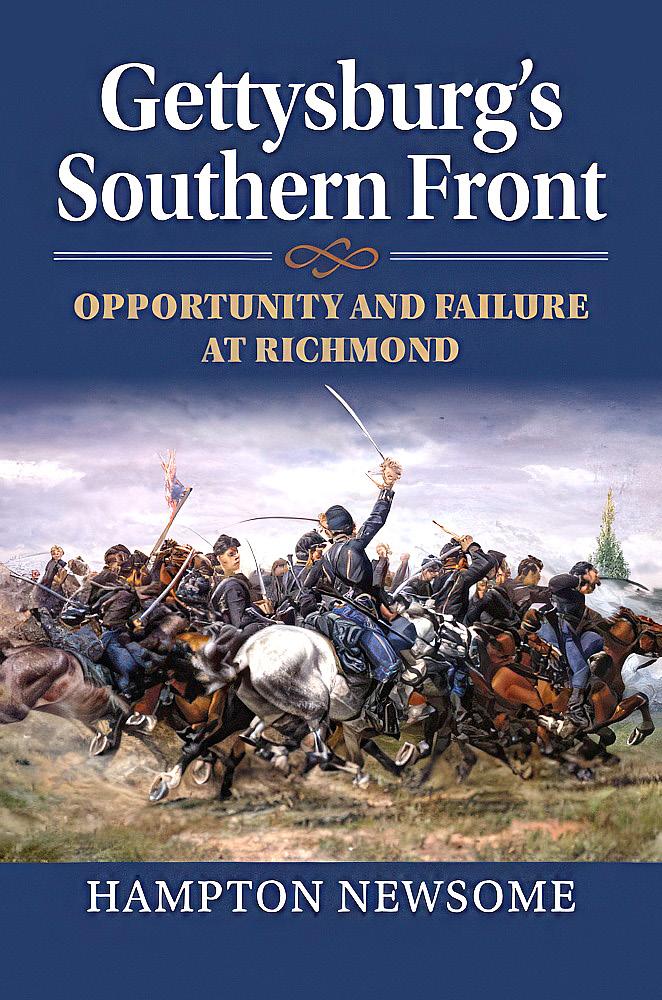
Reviewed by Jonathan A.
Noyalas
A Small Fight and Quickly Forgotten
referred to as “Dix’s Peninsula Campaign,” as Newsome cogently argues, “presented a tremendous chance to strike hard at Richmond while Lee’s army was away threatening Pennsylvania.”
Throughout the book’s twentytwo chapters Newsome explores debates among war planners in Washington about the merits of launching such a campaign, efforts of Confederate authorities in Richmond to cobble together a force substantial enough to thwart a Union attack, the capture of Rooney Lee, clashes over how the campaign should be remembered, and effectively describes engagements at such places as Aylett’s Foundry, Crump’s Crossroads, and the bridge that carried the Richmond, Fredericksburg, and Potomac Railroad over the South Anna River.
not known,” the author makes good use of existing evidence to illustrate the toll the excruciating heat had on Union troops and ways in which they attempted to cope with it.
Six Miles from Charleston, Five Minutes from Hell: The Battle of Secessionville, June 16, 1862. By James A. Morgan. Maps, photographs, appendices, 192 pp., 2022. Savas Beatie, LLC. www.savasbeatie.com.

$16.95, paperback.
in the campaign and left almost everything to Brig. Gen. Henry Benham, an officer of uncertain abilities.
One of my favorite wartime images depicts an unidentified Union soldier wearing a four button fatigue blouse and forage cap holding a crudely drawn map of Virginia in his left hand and pointing to Richmond with his right index finger. The photograph, one I oftentimes use in the classroom, conveys a simple message: take Richmond and the Union will be preserved. Since the Civil War’s end much has been written about efforts to seize Richmond at various points in the conflict, particularly the failed 1862 campaigns and in the war’s final year. Scant attention has been given to General John A Dix’s operation to threaten Richmond during the summer of 1863 while the Army of the Potomac chased the Army of Northern Virginia into Pennsylvania. Fortunately, Hampton Newsome’s latest volume resurrects the story of Dix’s failed effort in this splendidly written and exhaustively researched history.
The brainchild of Generalin-Chief Henry Halleck, the “Blackberry Raid,” sometimes
While Newsome’s first-rate history describes movements and engagements with astounding detail, this book offers much more than a recounting of an oftforgotten campaign. Newsome’s study offers important insight into General Dix’s prejudice against African Americans and the United States Colored Troops. Additionally, this volume provides valuable analysis of the important supportive roles enslaved people played in the operation. Throughout the campaign, as the author clearly demonstrates, even although Dix’s effort failed, enslaved people who sought refuge with Dix’s troops provided “crucial intelligence” to Union troops.
Additionally, Newsome’s finely crafted history, in keeping with the current historiographic trend to illustrate the environment’s impact on military operations, provides a critical analysis of the role weather conditions played. Stifling heat and oppressive humidity, coupled with the reality that the majority of troops tasked with carrying out the campaign, the Union IV and VII Corps, were unaccustomed to hard campaigning, proved disastrous. While Newsome freely admits that “the precise number of men afflicted by the heat is
Newsome’s history also offers a useful reminder that an engagement’s popularity or statistical toll ought not to be the only factors by which a fight’s impact is assessed. For instance, in the author’s excellent discussion of the fight at Crump’s Crossroads on July 2, 1863, Newsome effectively uses primary material to not only recount the clash between Union troops commanded by General Erasmus Keys and Confederates from General D.H. Hill’s command but to demonstrate combat’s ferocity regardless of the number of men involved. To the troops engaged, particularly the wounded or to families who lost a loved one, the clash at Crump’s Crossroads, as the author rightfully claims, “was as harrowing as any other.”
This study’s value extends beyond its important connections to the Gettysburg Campaign. While those seeking a broader understanding of the Army of Northern Virginia’s invasion into Pennsylvania and the Union efforts to stop it will find Newsome’s smartly crafted book essential, anyone desirous of deepening their knowledge about the roles African Americans played in Civil War operations, interactions between civilians and the military, or the environment’s impact on troops will find Newsome’s study of great worth.
Jonathan A. Noyalas is director of Shenandoah University’s McCormick Civil War Institute in Winchester, Virginia, a professor in Civil War Era Studies at Shenandoah University, and founding editor of Journal of the Shenandoah Valley During the Civil War Era. He is the author or editor of fifteen books including most recently Slavery and Freedom in the Shenandoah Valley during the Civil War Era, published by the University Press of Florida.
Reviewed by Gould Hagler
The Confederates also had some leadership issues. Among other problems, Maj. Gen. John Pemberton was distrusted by civilian leaders and his subordinate commanders. In addition, Pemberton was ordered to transfer a significant part of his force to Virginia, where the Federals were threatening the Confederate capital.
The author does a good job explaining the military situation in 1862 and describing the action in the runup to the June 16 assault. Although eight maps help the reader understand the terrain and follow the action, the level of detail will still be a challenge for some. There are modern photographs of various sites on James Island, but these contribute little to the reader’s understanding.
Savas Beatie has published over 60 books in its Emerging Civil War Series. More are to be released this year, which marks the series’ tenth anniversary. Under series editor Chris Mackowski, these works are advertised as offering “compelling, easy-toread overviews of some of the Civil War’s most important battles and stories.”
In the book under review, author James Morgan tells the story of the 1862 Battle of Secessionville on James Island, just across the Ashley River from Charleston. Morgan tells us that the fight was small, and soon forgotten, but that doesn’t mean the story is unimportant or uninteresting.
James Island was, or could have been, the back door to the well-defended South Carolina port. The Federals tried and failed to drive the Confederates from the island and gain a favorable position across the river from Charleston. The Federals had a larger infantry force than their foe and better artillery. In addition, with naval superiority the Federals could place their land forces where they wanted, when they wanted, and back them up with the ships’ big guns. One may think that this capability would give the Yankees a big advantage, if not an insuperable one. However, the army commanders did not get along with their naval counterparts or with each other. The department commander, Brig. Gen. David Hunter, was oddly uninterested
Morgan includes a paragraph or two on many officers involved, useful especially for the lesserknown figures. Some readers will have trouble keeping up with the many minor characters who pop into and out of the story, especially as the book has no index. The author relies on and quotes a number of primary and secondary sources but there are no citations and no bibliography. Appendices contain a battlefield guide and the story of two brothers who fought on opposite sides.
Notwithstanding the problems at the command level, when the attack came the soldiers on both sides fought with skill and determination. Morgan’s description of the June 16 action is excellent. It was a close run thing, but the Confederates repelled three assaults against their key position, the Tower Battery. The Federals were forced to withdraw, suffering 683 total casualties out of about 3,400 engaged. The Confederate defenders lost 204 of approximately 1,275.
Gould Hagler is a retired lobbyist living in Dunwoody, Ga. He is a past president of the Atlanta Civil War Round Table and the author of Georgia’s Confederate Monuments: In Honor of a Fallen Nation, published by Mercer University Press in 2014. Hagler speaks frequently on this topic and others related to different aspects of the Civil War and has been a regular contributor to CWN\ since 2016. His email is gould.hagler@gmail.com.
37 March 2023 37 March 2023 CivilWarNews.com CivilWarNews.com
Deadlines for Advertising or Editorial Submissions is the 20th of each month. Email to ads@civilwarnews.com
The Artilleryman is a quarterly magazine for collectors, competition shooters and those interested in ordnance from the Revolutionary War to World War II, primarily focusing on cannon, implements, projectiles and related artifacts from the American Civil War. This full color magazine features articles on cannon safety, artillery history, projectiles, fuses, places to visit, book reviews, competition events, and so much more. The annual quarterly subscription price is just $37.95.

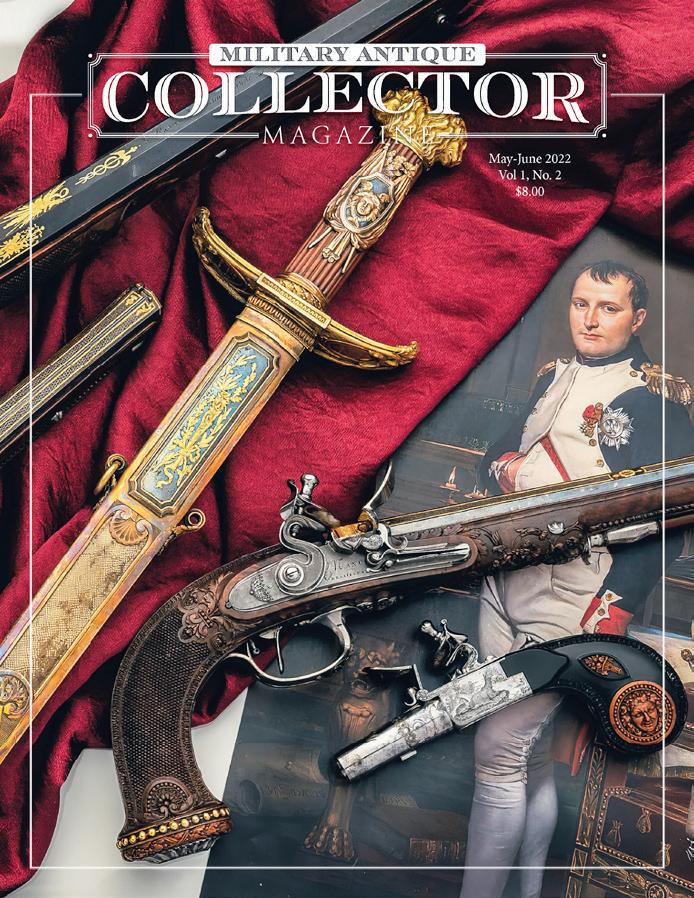

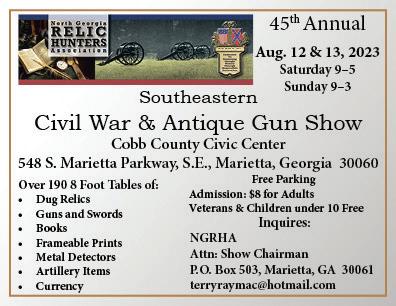
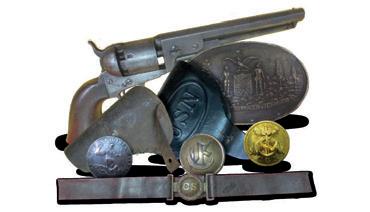
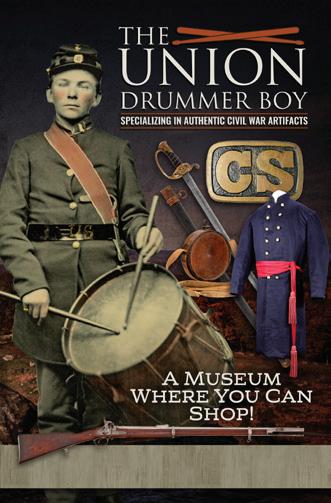
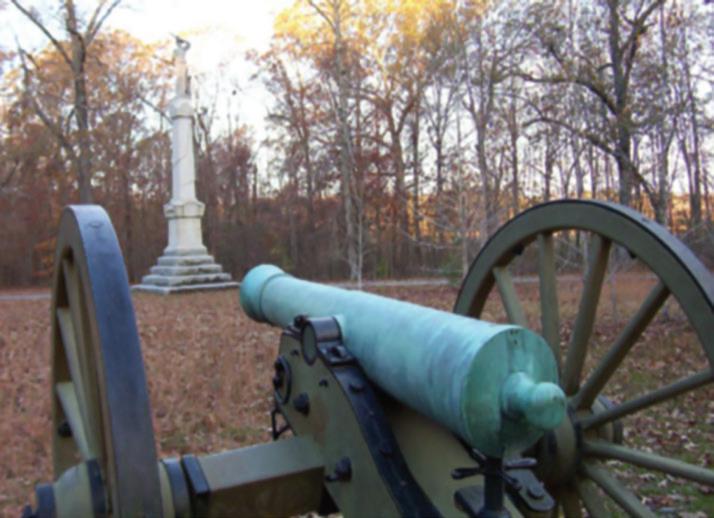
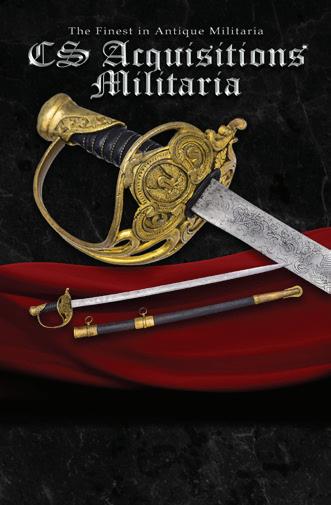


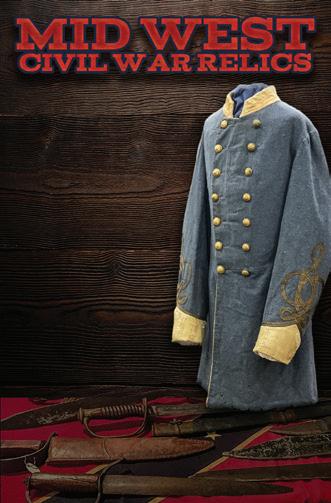
Military Antique Collector is a bi-monthly magazine with detailed high-resolution color photographs of some of the world’s most beautiful and unusual military collectibles. Dedicated to both the expert collector and novice alike, each issue is filled with informative articles written by leading authorities in their fields of expertise, including distinguished well-known authors, along with prominent museum and auction professionals. Issues spotlight rare and unusual military objects, craftsmanship works, and their relationship to historical figures dating from early American and European history to limited coverage of the post-1898 artifact. Priced at only $39.95 for 6 issues. It’s easy to see why Military Antique Collector magazine has become popular so quickly.
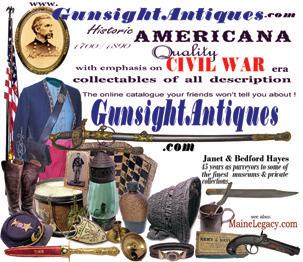


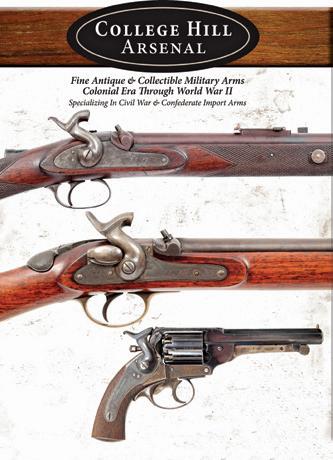
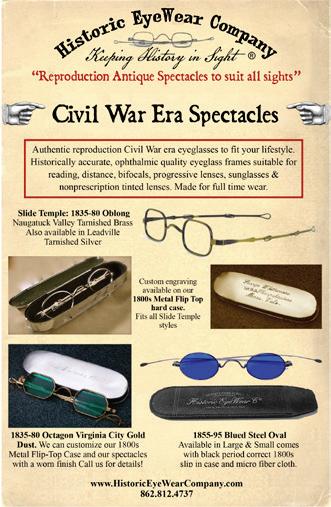




HistoricalPublicationsLLC.com




























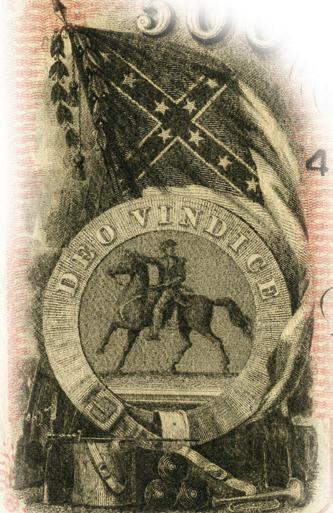



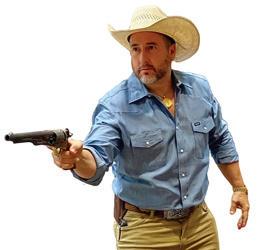

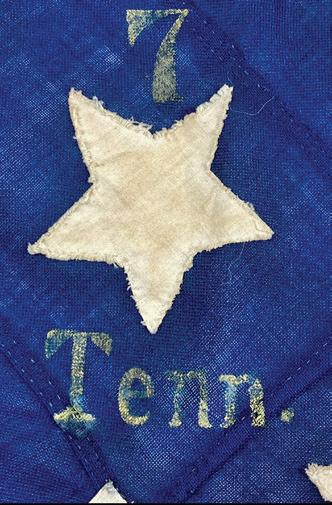
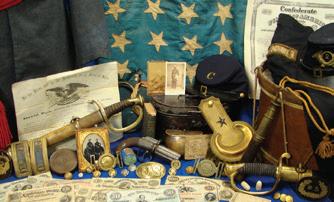













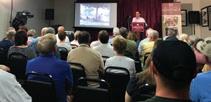




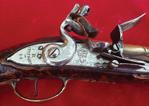
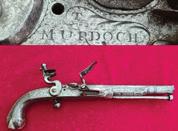









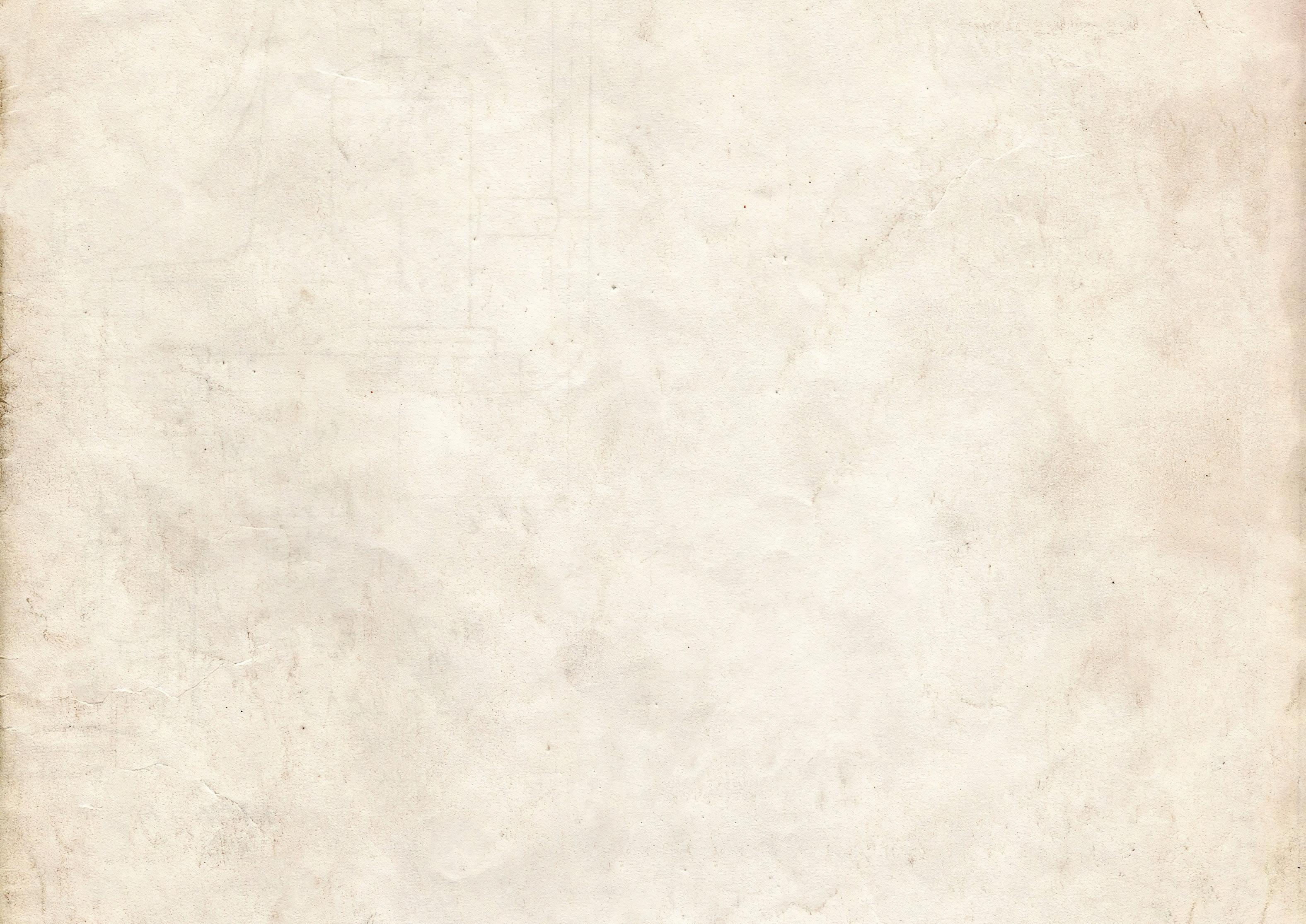
38 CivilWarNews.com March 2023 38 March 2023 CivilWarNews.com Museum Quality Civil War Union & Confederate Artifacts! WE HANDLE THE BEST Antique Bowie Knifes Civil War Swords Confederate D-guards Antique Firearms Dug Relics Buckles & Belts Identified Relics Letters & Documents Uniforms & Head Gear Images & Currency Flags ALLEN WANDLING 618-789-5751 • awandling1@gmail.com MidWestCivilWarRelics.com CONSIGNMENTS WELCOME Contact Glenn Dutton at: BUYING & SELLING Field & Heavy Artillery Cannon, Shells, Fuses & Etc. WE BUY ANTIQUE WEAPONS www.AndrewBottomley.com Mail Order Only Worldwide Shipping Calling the UK from overseas: +44 1484 685 234 Calling our UK cellphone from outside the UK: +44 7770 398 270 email: sales@andrewbottomley.com The Coach House, Holmfirth, England Scottish Highlanders Flintlock Pistol English Mortuary Basket Hilt Spanish Miquelet Pistol British Military Flintlock Blunderbuss Dated 1714 Your trusted source... ...for BOOKS, year-round author talks & appearances and MORE! www.GettysburgMuseum.com Operated by the nonprofit Gettysburg Nature Alliance Licensed Battlefield Guide tours available! 2023 Civil War Dealers Directory To view or download a free copy visit: civilwardealers.com/dealers.htm Promoters of Quality Shows for Shooters, Collectors, Civil War and Militaria Enthusiasts Military Collectible & Gun & Knife Shows Presents The Finest Mike Kent and Associates, LLC PO Box 685 Monroe, GA 30655 (770) 630-7296 Mike@MKShows.com • www.MKShows.com Northwest Georgia Trade Center 2211 Tony Ingle Parkway Dalton, GA 30720 February 4 & 5, 2023 Chickamauga (Dalton) Civil War Show Williamson County Ag Expo Park 4215 Long Lane Franklin, TN 37064 December 2 & 3, 2023 Middle TN (Franklin) Civil War Show l l over the image to go directly to the website for current show schedule. WALLACE MARKERT csacquisitions@gmail.com 16905 Nash Road Dewitt, Virginia 23840 804-536-6413 www.csacquisitions.com Shiloh 2405 Oak Grove Road Savannah, TN 38372 History@shilohrelics.com owner Rafael Eledge .com Dealing in the Finest Authentic Militaria Since 1995 Pistols, Muskets, Carbines, Rifles, Bayonets, Swords, Uniforms, Headgear, Belt Buckles, Cannon, Buttons, Bullets, Artillery Implements Etc. Are you… Afraid of buying “nice” piece just find RebelRelics.com “You gonna check out my website or whistle Dixie?” Brian “Rebel” Akins Greg Ton Buying the Finest in Confederate, Obsolete and Southern States Currency Greg Ton • P.O. Box 9 Franklin, TN 37065 Phone: 901-487-5944 • Email: GTon1@aol.com Since 1978 GregTonCurrency.com We have been a family business since 1965, buying and selling fine antiques. Our collection of antiques ranges from Civil War military to antique military and toys. the highest quality. As taught by my father before me, we sell original quality items that are backed by our family guarantee. Vin Caponi Historic Antiques 516-593-3516 516-353-3250 (cell) rampantcolt@aol.com 18 Broadway, Malverne, NY 11565 34 York St • Gettysburg, PA 17325 717-334-2350 CIVILWAR@UNIONDB.com uniondb www.CollegeHillArsenal.com College Hill Arsenal PO Box 178204 Nashville, TN 37217 615-972-2418 John Sexton ISA-CAPP 770-329-4984 CivilWarAppraiser@gmail.com OVER 40 YEARS EXPERIENCE AUTHENTICATION SERVICES FOR Consultations as to best monetize valuable objects or collections in Is your collection appraised and inventoried for your heirs and family? CONFIDENTIAL APPRAISALS & AUTHENTICATIONS Schedule essential estate planning appraisal www.CivilWarBadges.com badges@bellsouth.net 1036 Washington Ave. Woodstock, Georgia 30188 The Largest Selection of GAR & UCV Hundreds of Memorabilia Items from Rev War through Vietnam Secure & Easy Guaranteed Authenticity of Every Item Buttons, Belt Buckles, and Accoutrements. Allen Gaskins NC Relics BUYING AND SELLING AUTHENTIC Steve and Melody Strickland 770-633-5034 info@dixierelicsonline.com HTTPS://DIXIERELICS.COM The Maryland Arms Collectors Assoc., Inc. presents The “Original Baltimore” Antique Arms Show Since 1955 Maryland State Fairgrounds Timonium, MD North of Baltimore, York Road, MD. Rt. 45 March 18-19, 2023 Public Hours: Sat. to 5, Sun. 9 to 3. Admission: $10.00 – Modern Handguns are Prohibited –Complete information on web site: www.baltimoreshow.com Known as the “CROWN JEWEL” of Collector’s Shows! Welcoming Consignments complimentary estimate on single Get in touch! civilwarshop@gmail.com (252) 636-3039 WE BROKER! www.civilwarshop.com Life Member, Company Military Historians Sons of ConfederateVeterans BATTLEGROUND ANTIQUES, INC.
Vol. 39, No. 4 Fall 2018 $8.00 ArchaeologicalExcavationsataConfederateBattery•HistoricalArtilleryofLeHôpitaldesInvalides Coastal Artillery at Fort Moultrie • 100-Pounder Navy Parrott Shells Confederate 2.25-Inch Projectile Identified • The Evolution of Brooke Sabots Also in is issue:
Feb. 24-26, South Carolina. 29th Festival of Living History
The 158th Anniversary of one of the last Confederate victories of the Civil War. Experience history coming alive during a weekend of battles, demonstrations, tours, displays, music, crafts, food, and Saturday’s Blue Grey Ball! Tour the historic log cabin, schoolhouse, jail, mercantile building, and soldier’s camps. Eight food and drink vendors on site. Three scripted battles: two on Saturday and one on Sunday. Period church service held on Sunday. All units and individual reenactors (artillery, cavalry, infantry, medical, musical, & civilian) welcome. No fee if pre-registered by Jan. 31. Walk on fee is $10. $150 bounty for first 20 full-size artillery guns registered. All impressions needed for school day at 8 a.m. on Friday. American military impressions from all war periods (colonial through the Gulf Wars) are needed for our Military Timeline. Pioneer and Native Americans welcome. For information; www.battleofaiken.com or battleofaiken@aol.com.
March 3-4, Mississippi. Military History and Civil War Show
We are the oldest Military History and Civil War show in the Mid-South and we are growing! This year will be our 55th show. Located at the Landers Center in Southaven, MS. Friday, the show will open at 2 p.m. for our “First Lookers” and the general public and will close at 7 p.m. Saturday, show hours 9-5 p.m. Admission is $10 for adults and children under 12 are free. For more information please visit our Facebook page at midsouthmilitaryhistory or call Don at 901-832-4708.
March 18-19, Maryland. Antiques Arms Show and Sale
Sponsored by the Maryland Arms Collectors Association. With over 1,000 tables of the finest in collectable rifles, revolvers (pre-1898) and sporting shot guns, this show attracts thousands of serious collectors from across the globe. Open to the public on Sat. from 9-5, and Sun. from 9-3. Admission is $10. Located at the Maryland State Fairgrounds Cow Palace, 2200 York Road, Timonium, MD 21093. For information; www.baltimoreshow.com.
March 24-25. Mississippi. Militaria Show and Sale
Sponsored by Col. W. P. Rogers Camp SCV #321, The 14th Annual Corinth Militaria Show will be held at 2800 South Harper Rd. in Corinth. Vendors will have all kinds of military items including those from the Revolutionary War, Civil War, WWI and WWII. Show hours are 2-7 p.m. on Friday and 9 a.m. to 5 p.m. on Saturday. Admission is $5 and children under 12 are free. For information; Contact Buddy Ellis – 662-665-1419 – bellis1960@ comcast.net or Dwight Johnson – 662-284-6125 – dgene@gmail.com.
March 30-April 2, Louisiana. Reenactment and Festival
Plan to attend the 159th Anniversary of the Battle of Pleasant Hill Reenactment and Festival located 3 miles north of Pleasant Hill at 23271 Hwy. 175 in Pelican. The original Battle was fought on Apr. 9, 1864, during the Red River campaign of the Civil War. Friday is school day from 9 a.m. to 1 p.m. On Sat. there will be a parade at 10 a.m. and a program at 11 a.m. at Mansfield State Historic Site. There will be guest speakers, opening ceremonies and then a battle reenactment at 2 p.m. The ball is at 7 p.m. (period dress suggested). 7 p.m. luminary memorial ceremony. Sunday begins with 10 a.m. church services followed by guest speaker. At 1 p.m. is the Crowning Ceremony of Miss Battle of Pleasant Hill followed by the opening ceremony and finally the 2 p.m. battle. For information; www.battleofpleasanthill.com.
April 13-16, Georgia. The Georgia Battlefields Association Annual 2023 Tour
Thursday Morning Walking tour of Savannah’s Revolutionary War Sites.
Thursday Afternoon-Walking Tour of Bonaventure Cemetery. Thursday evening reception with heavy hors d’oeuvres with a presentation by Dr. Mary-Elizabeth Ellard on Civil War Veterinary Practices.
Friday & Saturday–Tours of Fort Pulaski, Old Fort Jackson, Wormsloe State Historic Site, King’s Bridge, Fort McAllister, Ebenezer Creek, and remnants of the 1864 landward defenses.
Sunday Morning–Walking tour of The City of Savannah’s Squares.
Price: $580 per person which includes all tours (Thursday-Sunday morning), breakfast is included in the hotel price, Thursday night reception, three lunches, two dinners (Friday & Saturday) and bus rental.
$460 per person for Thursday night reception and tours & meals Friday to Sunday morning.
Host hotel: Hampton Inn & Suites-Historic District at 603 W. Oglethorpe Ave. Savannah, GA 31401 912-721-1600.
Ask for The GBA Rate of $179 per night for Wed. & Thur. nights & $259 per night for Fri. & Sat. nights. If you reserve all four nights, it’s $219 per night plus a 16% tax which adds $34.47 per night for a daily total of $253.47 per night. Breakfast is included in the hotel price. Hotel parking is $30 per night.
Our guide is Jim Ogden, Chickamauga & Chattanooga National Military Park Historian.
We welcome Non-GBA Members to join us on our Tour however you can join GBA for just $25. Registration: Mail a check payable to Georgia Battlefields Assn. (GBA) to PO Box 669953, Marietta, GA 30066. You can also use Paypal or Credit Card to register online at our GBA Website Tours Page http:/georgiabattlefields.org/tours.aspx. If you have trouble registering, please contact our Treasurer: William W. Gurry at email:billgurry@bellsouth.net.
April 15, Virginia. Seminar
Shenandoah University’s McCormick Civil War Institute’s annual spring conference on the campus of Shenandoah University, Winchester, Virginia, “So Tired & Exhausted”: In Battle’s Aftermath. Presentations with Jonathan S. Jones (Virginia Military Institute), Brian Matthew Jordan (Sam Houston State University), Jonathan A. Noyalas (Shenandoah University), and Melissa A. Winn (HistoryNet). $30 registration fee covers all presentations and lunch at SU. Space is limited, visit ww w.su.edu/mcwi to register. For information; jnoyalas01@su.edu or phone 540-6654501
April 23, Illinois. Civil War & Military Extravaganza
Zurko Promotions presents The National Civil War Collectors Fall Show and Sale which will be held at the DuPage County Fairgrounds, 2015 W. Manchester, Wheaton, Ill. Hours: 9 a.m. to 4 p.m. Admission is $10, Early Admission $25. Free parking. For more information visit www.chicagocivilwarshow.com or call Zurko Promotions at 715-5269769.
May 6-7, Ohio Civil War /WWI & II Show Historical Event
The Ohio Civil War & WWI/II Show will be held in Mansfield, OH, May 6th – 7th at the Richland County Fairgrounds. All federal, state, and local firearm ordinances and laws must be obeyed. Civil War and WWI & II Memorabilia from 1775 through 1945 for buy, sell, and trade. Featuring a unique artillery show with full scale cannons on display and daily cannon firing demonstrations. Added Special Features: Civil War & WWII Encampments, Sutlers Row, Civil War Period Music, Gettysburg Address by President Lincoln, WWII US 801st Med Air Evac Educational Presentation, Marlboro Volunteers Traveling Museum and WWII Military Vehicles. Hours are Saturday 9 a.m.5 p.m. and Sunday 9 a.m. - 3 p.m. Admission $7. Children under 12 Free. Parking is free. Camping on grounds is available – $35.00. For more Information; contact: 419-884-2194 or info@ohiocivilwarshow.com and visit our website: www.ohiocivilwarshow.com. Follow us on Facebook: Ohio Civil War Show.
May 18-21, Tennessee. American Battlefield Trust Annual 2023 Conference
The 2023 Annual Conference will be hosted at the Cool Springs Franklin Marriott located at 700 Cool Springs Blvd. Group rate is $169+/night. Call 800-228-9290 and ask for the ABT group rate. Conference begins with registration and exhibitor tables open on Thursday at 11 a.m. The day will be filled with tours for Color Bearers, history talks, a welcome reception from 6:30 – 8:15 p.m. and a photo extravaganza with Garry Adelman. Friday begins at 6:30 a.m. with a breakfast buffet, 8 a.m. tours depart, 6:45 p.m. cocktail reception for Color Bearers and a Color Bearer Author Dinner at 7:30 p.m. Saturday begins with a breakfast buffet at 6:30 a.m. and tours departing at 8 a.m. There will be a cocktail reception at 6:30 p.m. and the Banquet and Awards Ceremony with be held at 7:30 p.m. The Conference will conclude on Sunday morning with a closing breakfast with Q&A with President David Duncan between 8 and 9 a.m. For more information; events@battlefields.org or 800-298-7878 x7229.
May 19-21, Virginia. Period Firearms Competition
The North-South Skirmish Association 147th National Competition near Winchester. Over 3,000 uniformed competitors in 200 member units compete in live-fire matches with muskets, carbines, revolvers, mortars and cannon plus costume competitions and historical lectures. The largest Civil War live-fire event in the country. Free admission, large sutler area, and food service. For more information visit the N-SSA web site: www.n-ssa.org.
May 20-21, New York. Annual Artillery School
Old Fort Niagara in Youngstown, NY, will again take place. Open to all branches of service, both Federal and Confederate. Sponsored by the National Civil War Artillery Association and Reynolds’ Battery L. For questions contact: Rick Lake at: rlake413@aol.com or call: 585-208-1839. Registration Forms and additional information can be found at: www.reynoldsbattery.org.
May 20-21, Pennsylvania. 160th Anniversary of Battle of Monterey Pass
Living History Weekend at Monterey Pass Battlefield. Hosted by the 2nd Maryland Artillery CS. Monterey Pass was fought on July 4-5th when Union cavalry attacked Confederate wagon trains retreating from Gettysburg. The battle was fought in a driving rain storm. Approximately 1,500 prisoners were taken. Most of the Confederates prisoners were wounded. Artillery, Infantry and Medical demonstrations daily. Guided walking tours of the battlefield daily. Opportunity for picket line scenario in the evening. For more information visit https://montereypassbattlefield.org or contact John at Johnwelker117@gmail.com.
May 28, Pennsylvania. Original G.A.R. Decoration Day of Service Memorial Day Observed at Laurel Hill Cemetery located at 1868 3822 Ridge Ave., Philadelphia at 12 p.m. All are welcome. Laurel Hill is the site of the first Memorial Day in Philadelphia in 1868. Special veterans’ markers will be dedicated at the graves of previously unmarked veterans. Speakers, ceremonies, and pageant will highlight the ceremony. Wreath-laying, speeches, music, and honor guards. Historical groups, veterans, and citizens are urged to participate. Wreaths, military contingents, color guards, music and period civilians are encouraged to participate. Refreshments served after the ceremony. For information; 215-228-8200.
https://www.historicalpublicationsllc.com/site/eventlistings.html for all 2023 events.
39 March 2023 39 March 2023 CivilWarNews.com CivilWarNews.com
Before making plans to attend any event contact the event host.
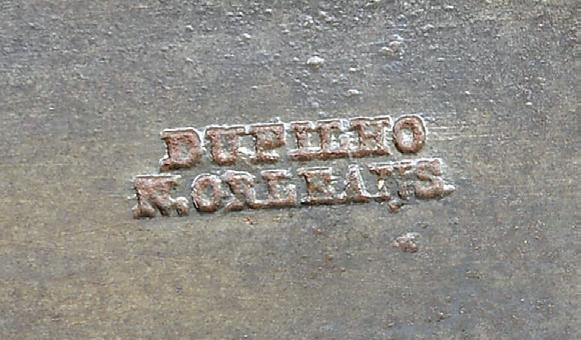

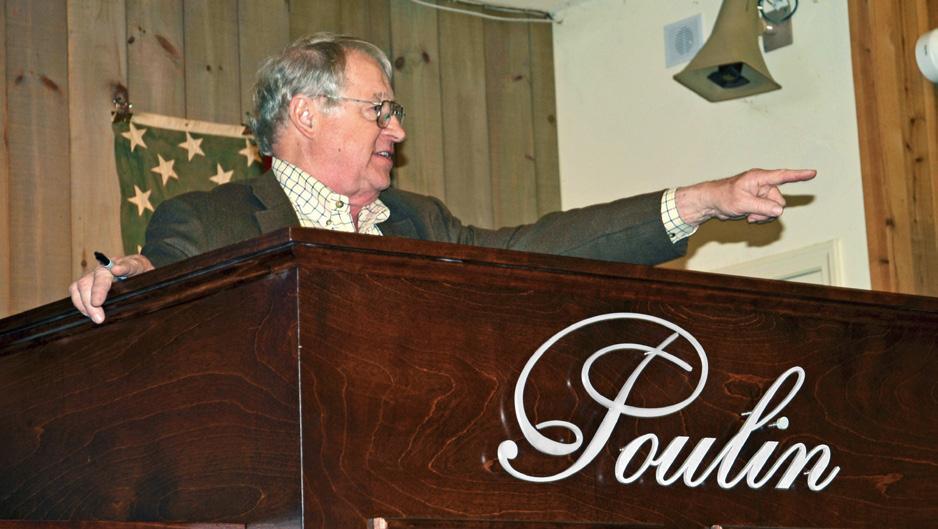

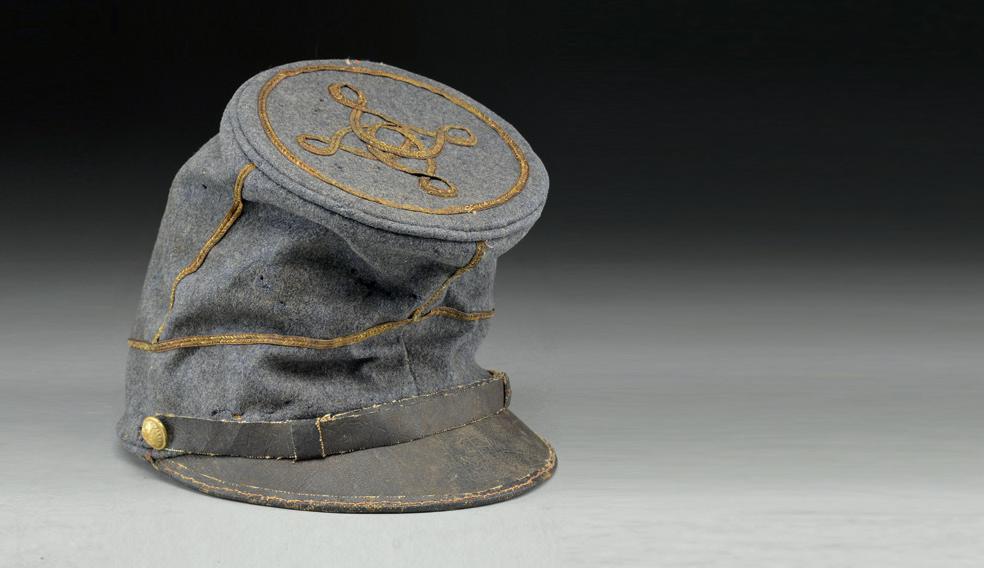
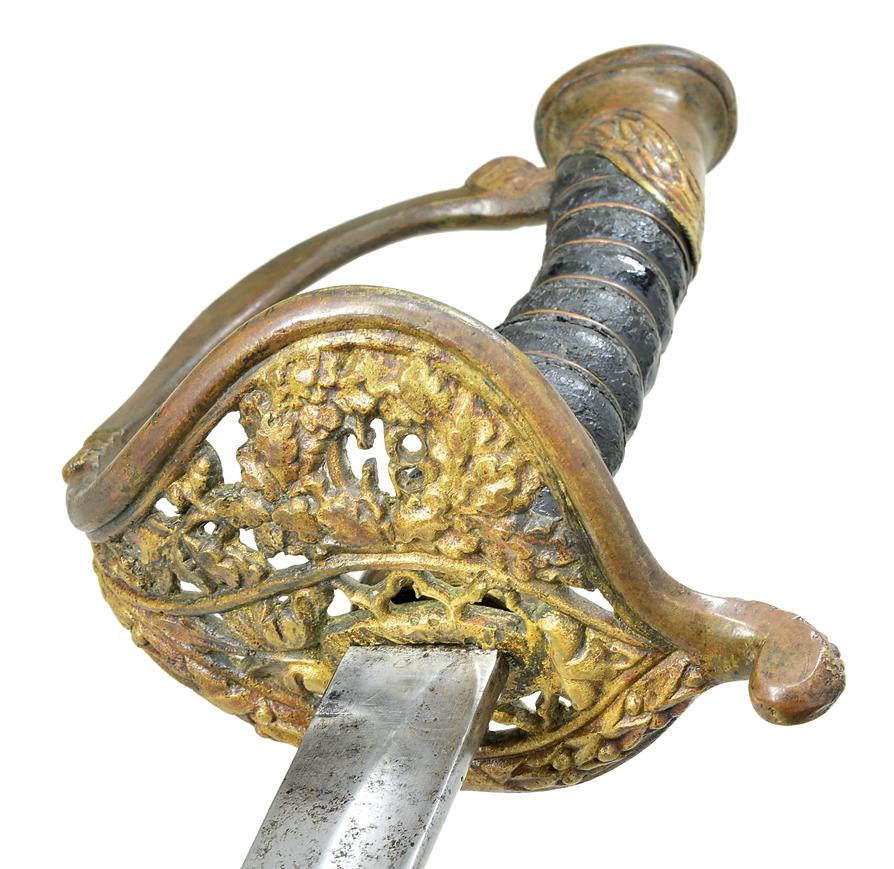
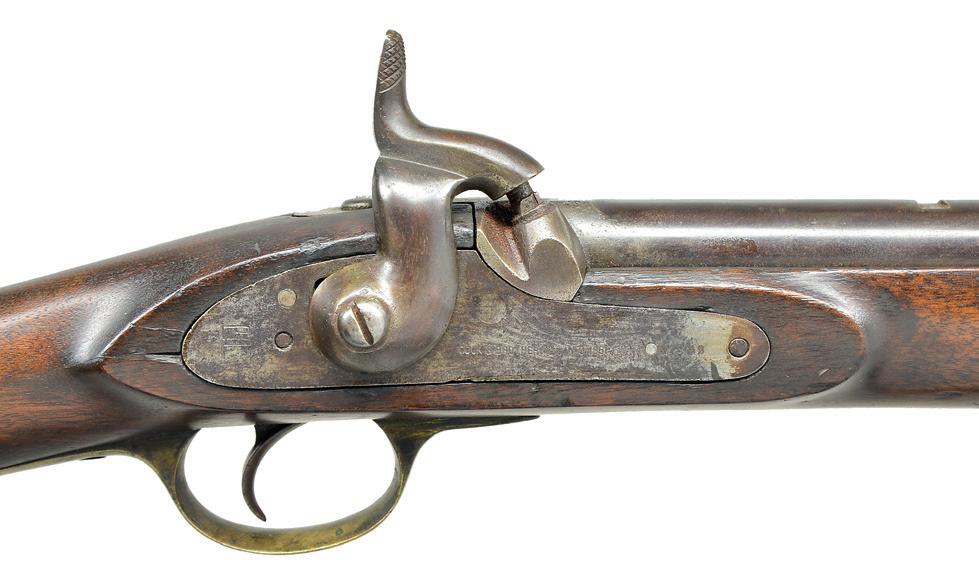

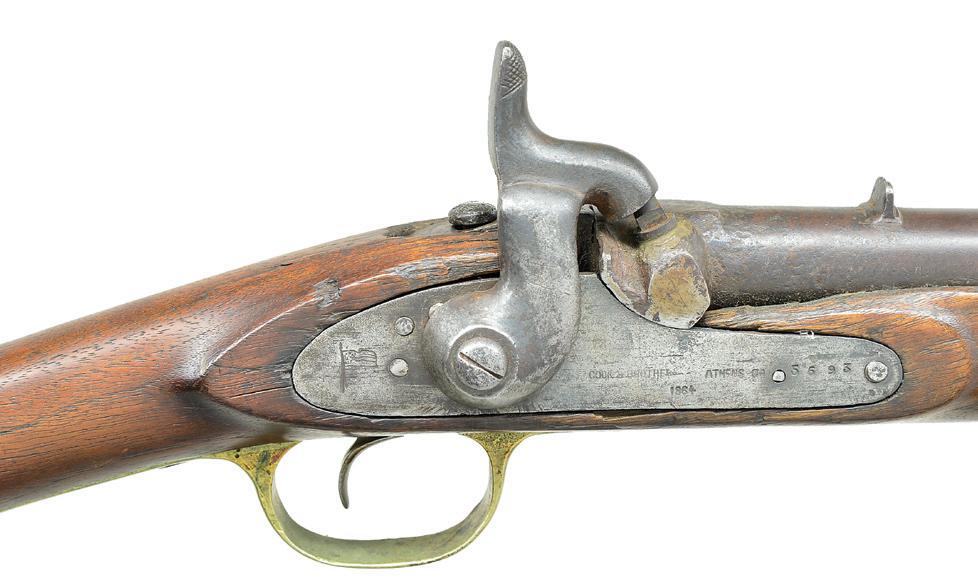
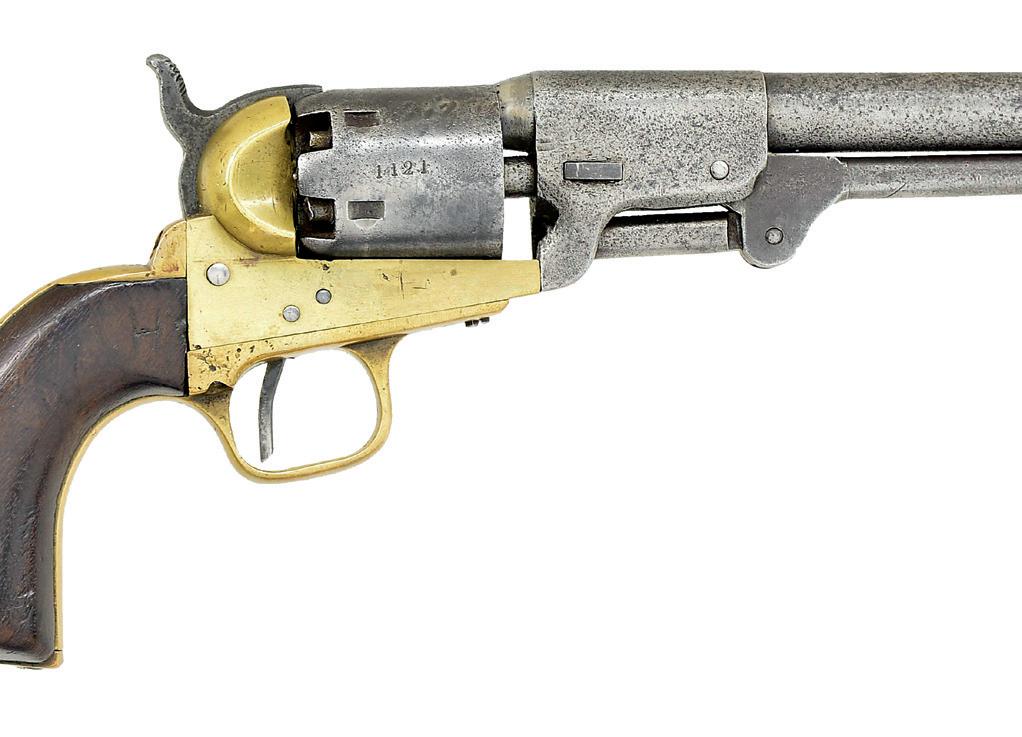
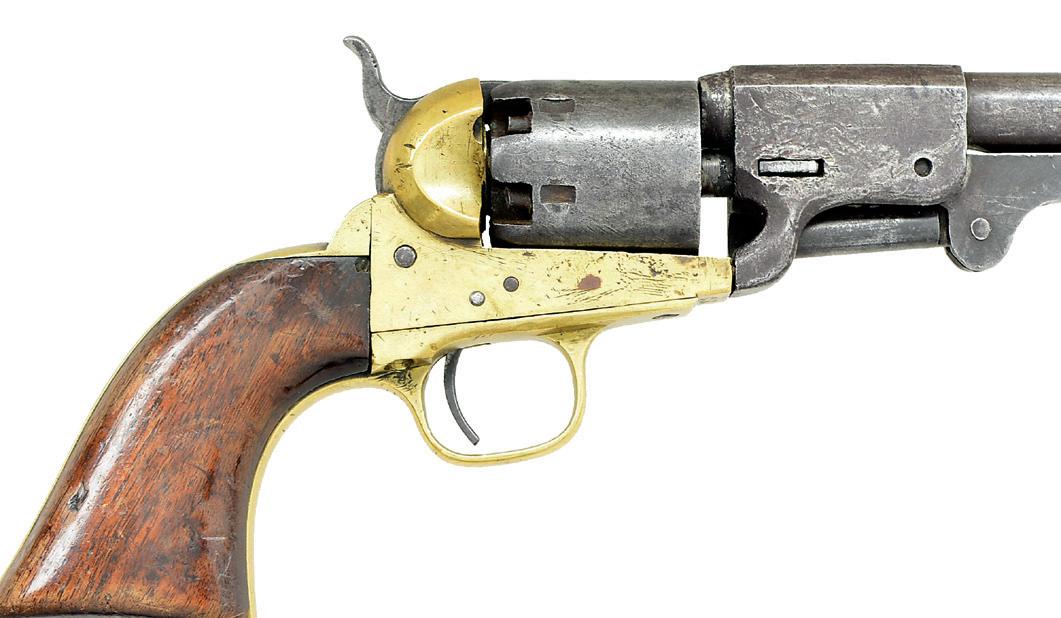
Firearms & Militaria Auctioneers SPRING 2023 PREMIER firearms & militaria Auction May 12, 13, & 14, 2023 | Fairfield ME To view additional upcoming Spring 2023 Premier Auction highlights, please visit: www.poulinauctions.com poulinauctions.com | 199 Skowhegan Rd, Fairfield, ME 04937 | Stephen Poulin, ME Lic # 1115 • Reputation - Sterling reputation for honest, straight forward business relationship with both buyers and sellers alike. • The Best Rates In The Industry - The Poulin & Julia family provides the most competitive commission rates in the industry. Including 0% or better seller’s commission on expensive items and valuable collections. • Finest Expertise - We utilize over 250 years of combined professional consultant experience and an additional three-generations of marketing expertise of nearly $1 BILLION in combined total sales by the Poulin & Julia Family. • Unique Auction Description Guarantee - We utilize honest, knowledgeable and detailed descriptions with the most comprehensive guarantee, building the highest level of confidence from bidders and generating the greatest return for consignors. • Presentation - Building interest and enthusiasm from potential bidders is crucial for achieving the maximum value for our consignors. Utilizing the finest detailed photography, catalog design and state of the art auction facility generates the highest level of excitement from potential bidders & the best results for your collectibles. • Additional Poulin & Julia Family Benefits - Fully insured,
Nearly IN COMBINED TOTAL SALES Contact Jim for a free consignment consultation at (207) 742-0007 or email jamesjulia@poulinauctions.com $1 BILLION THE TRADITION CONTINUES... FAMILY REUNION! His expertise and experience in marketing and achieving the best results for high end quality firearms & collectibles will help continue to grow our firm into the leading specialty firearms auctioneer in the world. We are pleased to announce the renewed partnership with the world-famous auctioneer... James D. Julia! 0% Or Better! Seller’s Commission On Expensive Items & Valuable Collections THE POULIN & JULIA FAMILY DIFFERENCE If you are interested in more information about consigning a single item or an entire collection, we would very much like to discuss with you the methods and strategies to generate you, the consignor, the greatest return. Contact James Julia for a free consignment consultation at: or by email: (207) 742-0007 jamesjulia@poulinauctions.com Confederate Staff Officer’s Sword, KG&K, Columbia, South Carolina Fine Iconic & Very Rare Dufilho Confederate Staff Officer’s Sword With “Pelican Feeding Young” Fine Confederate Lieutenant’s Forage Cap Three Hard-To-Find Cook & Brothers Carbine & Rifles: Rare 1861 Dated New Orleans Cook & Brother Infantry Rifle Two Historic Confederate Griswold & Gunnison Revolvers: Confederate 1863 Cook & Brother Short Rifle Confederate 1864 Dated Cook & Brother Saddle Ring Carbine
numerous bidding options available, complimentary consignment pick up for expensive items and valuable collections, massive client base of international and domestic clientele & extremely aggressive marketing campaign.







































 by Carl L. Sell Jr.
by Carl L. Sell Jr.






















































































































 Reviewed
Reviewed








































































































